Cancer
How to submit an article:
- Registered users can submit any published journal article that has a unique DOI (Digital Object Identifier) name or link to Research Hub.
- For example, you can paste the full DOI link:
https://doi.org/10.1109/5.771073or just the DOI name:10.1109/5.771073into the field above and click submit. - The person who is first to submit a valid article to Research Hub will forever be credited for it, and every article submission earns you +6 Research Points.
Sub-Topics:
Related Topics
Published research studies are articles that present the findings of original research that has undergone a peer-review process and has been made publicly available in scholarly journals, books or other media.
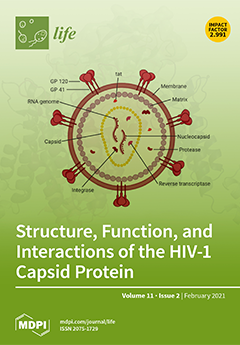
Therapeutic Potential of Pomegranate Extract for Women’s Reproductive Health and Breast Cancer
2024 Oct 03 Life Jang JY, Kim D, Im E, Kim ND
Review Article PCOS Breast Cancer PomegranatePomegranate extract could potentially benefit women's reproductive health, enhance fertility, regulate menstrual cycles, support pregnancy, and help treat polycystic ovary syndrome.
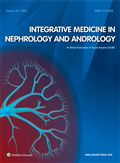
Can Prostate Cancer Patients be Prescribed Chinese Herbal Medicine? A Review of its Potential Modulatory Effects on the Androgen Receptor
2024 Jul 31 Integrative Medicine in Nephrology and Andrology Wu YL, Xian YF, Zhang J, Guo J, Lin ZX
The review suggests that Chinese medicine, especially CHM, shows potential as a complementary therapy for prostate cancer by inhibiting androgen receptor activity, improving patient quality of life, and addressing challenges like castration-resistant disease and drug resistance.
Review Article Prostate Cancer
Manuka Honey Inhibits Human Breast Cancer Progression in Preclinical Models
2024 Jul 22 Nutrients Márquez-Garbán DC, Yanes CD, Llarena G, Elashoff D, Hamilton N, Hardy M, et al.
Animal Study Experimental Study Honey Breast CancerManuka honey has demonstrated the potential to inhibit the proliferation of human breast cancer cells and stimulate apoptosis in these cells.

Carrageenan in the Diet: Friend or Foe for Inflammatory Bowel Disease?
2024 Jun 06 Nutrients Kimilu N, Gładyś-Cieszyńska K, Pieszko M, Mańkowska-Wierzbicka D, Folwarski M
Review Article Inflammatory Bowel Disease CarrageenanCarrageenan, a common food additive, potentially exacerbates Inflammatory Bowel Disease (IBD) symptoms by altering gut microbiota, inducing intestinal permeability, and triggering inflammation.
The Potential Role of Ziziphus Jujube in the Management of Chemotherapy-Induced Peripheral Neuropathy
2024 Jun 30 Journal of Tumor Science Research , Talabaki H, Salehifar E,
The review highlights the promising experimental data on Ziziphus extracts and pure active compounds in the treatment of neuropathy.
Review Article Peripheral Neuropathy Chemotherapy-Induced Peripheral Neuropathy Chemotherapy JujubeResearch insights are moderated by the Research Hub team and offer an at-a-glance overview of interesting research findings.

2024 Life
Pomegranate extract could potentially benefit women's reproductive health, enhance fertility, regulate menstrual cycles, support pregnancy, and help treat polycystic ovary syndrome.
Review Article Breast Cancer PCOS Pomegranate
Therapeutic Potential of Pomegranate Extract for Women’s Reproductive Health and Breast Cancer
Jang JY, Kim D, Im E, Kim ND

2024 Nutrients
Manuka honey has demonstrated the potential to inhibit the proliferation of human breast cancer cells and stimulate apoptosis in these cells.
Animal Study Breast Cancer Honey
Manuka Honey Inhibits Human Breast Cancer Progression in Preclinical Models
Márquez-Garbán DC, Yanes CD, Llarena G, Elashoff D, Hamilton N, Hardy M, et al.

2024 Nutrients
Carrageenan, a common food additive, potentially exacerbates Inflammatory Bowel Disease (IBD) symptoms by altering gut microbiota, inducing intestinal permeability, and triggering inflammation.
Review Article Carrageenan Inflammatory Bowel Disease
Carrageenan in the Diet: Friend or Foe for Inflammatory Bowel Disease?
Kimilu N, Gładyś-Cieszyńska K, Pieszko M, Mańkowska-Wierzbicka D, Folwarski M

2024 Medicine
Bruceolic oil emulsion, when combined with androgen antagonists, shows the greatest efficacy in treating prostate cancer amongst Chinese patent medicines.
Network Pharmacology Prostate Cancer
Efficacy and safety of Chinese patent medicine in the adjuvant treatment of prostate cancer: A Bayesian network meta-analysis
Wang S, Zhang F, Liu J, Qin P
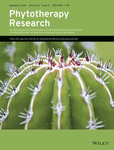
2024 Phytotherapy Research
Noni fruit and its compounds demonstrate significant potential in cancer therapy by inducing apoptosis, arresting cell cycle, inhibiting angiogenesis, and modulating immune system.
Systematic Review Anticancer Noni
Anticancer and chemopreventive potential of Morinda citrifolia L. bioactive compounds: A comprehensive update
Kitic D, Miladinovic B, Randjelovic M, Szopa A, Seidel V, Prasher P, et al.
Review Articles
Review articles summarise and critically evaluate the current state of research on a specific topic or field by synthesising multiple primary research studies.

Therapeutic Potential of Pomegranate Extract for Women’s Reproductive Health and Breast Cancer
2024 Oct 03 Life Jang JY, Kim D, Im E, Kim ND
Review Article PCOS Breast Cancer PomegranatePomegranate extract could potentially benefit women's reproductive health, enhance fertility, regulate menstrual cycles, support pregnancy, and help treat polycystic ovary syndrome.

Can Prostate Cancer Patients be Prescribed Chinese Herbal Medicine? A Review of its Potential Modulatory Effects on the Androgen Receptor
2024 Jul 31 Integrative Medicine in Nephrology and Andrology Wu YL, Xian YF, Zhang J, Guo J, Lin ZX
The review suggests that Chinese medicine, especially CHM, shows potential as a complementary therapy for prostate cancer by inhibiting androgen receptor activity, improving patient quality of life, and addressing challenges like castration-resistant disease and drug resistance.
Review Article Prostate Cancer
Carrageenan in the Diet: Friend or Foe for Inflammatory Bowel Disease?
2024 Jun 06 Nutrients Kimilu N, Gładyś-Cieszyńska K, Pieszko M, Mańkowska-Wierzbicka D, Folwarski M
Review Article Inflammatory Bowel Disease CarrageenanCarrageenan, a common food additive, potentially exacerbates Inflammatory Bowel Disease (IBD) symptoms by altering gut microbiota, inducing intestinal permeability, and triggering inflammation.
The Potential Role of Ziziphus Jujube in the Management of Chemotherapy-Induced Peripheral Neuropathy
2024 Jun 30 Journal of Tumor Science Research , Talabaki H, Salehifar E,
The review highlights the promising experimental data on Ziziphus extracts and pure active compounds in the treatment of neuropathy.
Review Article Peripheral Neuropathy Chemotherapy-Induced Peripheral Neuropathy Chemotherapy Jujube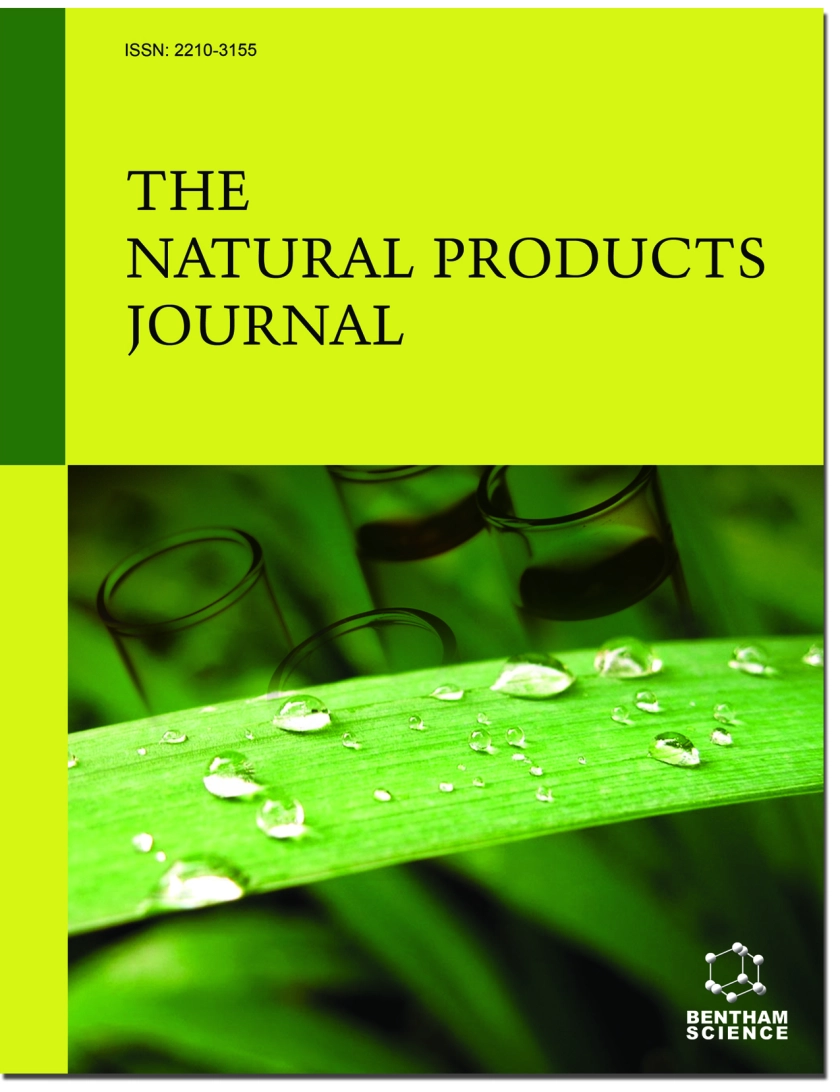
Pumpkin Seeds (Cucurbita spp.) as a Nutraceutical Used In Various Lifestyle Disorders
2024 Feb The Natural Products Journal Wal A, Singh MR, Gupta A, Rathore S, Rout RR, Wal P
Review Article Antioxidant Cardiovascular Disease Depression Anti-ParasitePumpkin seeds are recognised for their medicinal, nutritional, and cosmetic benefits, including anti-diabetic, heart disease prevention, anti-cancer, and antioxidant qualities.
Clinical Trials
Clinical trials are research studies that involve people and are conducted to evaluate the safety and efficacy of new treatments or interventions, such as drugs, medical devices, or behavioural therapies.

Acupuncture for chemotherapy-associated insomnia in breast cancer patients: an assessor-participant blinded, randomized, sham-controlled trial
2023 Apr 26 Breast Cancer Research Zhang J, Qin Z, So TH, Chang TY, Yang S, Chen H, et al.
The active acupuncture regimen, combining needling into body acupoints and acupressure on auricular acupoints, was not superior to sham control in reducing the Insomnia Severity Index (ISI) score from baseline to 6 weeks. However, it produced short-term treatment and long-term follow-up better outcomes in improving sleep onset latency, total sleep time, sleep efficiency, anxiety, depression, and quality of life. Participants in the active acupuncture group had a higher cessation rate of sleeping medications than the sham control, indicating that acupuncture could be an effective option for managing chemotherapy-associated insomnia and serve as a tapering approach to reduce the use of sleeping medications in breast cancer patients.
Randomised Controlled Trial Chemotherapy-Associated Insomnia Acupuncture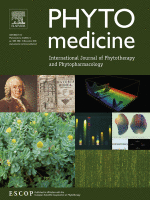
Acupuncture improves chemotherapy-induced neuropathy explored by neurophysiological and clinical outcomes – The randomized, controlled, cross-over ACUCIN trial
2022 Sep Phytomedicine Friedemann T, Kark E, Cao N, Klaßen M, Meyer-Hamme G, Greten JH, et al.
Clinical Study Randomised Controlled Trial Chemotherapy Acupuncture Neuropathy Chemotherapy-Induced Peripheral NeuropathyAcupuncture has shown potential in enhancing structural nerve regeneration in Chemotherapy-induced peripheral neuropathy, leading to subjective improvements and positive neurological findings.
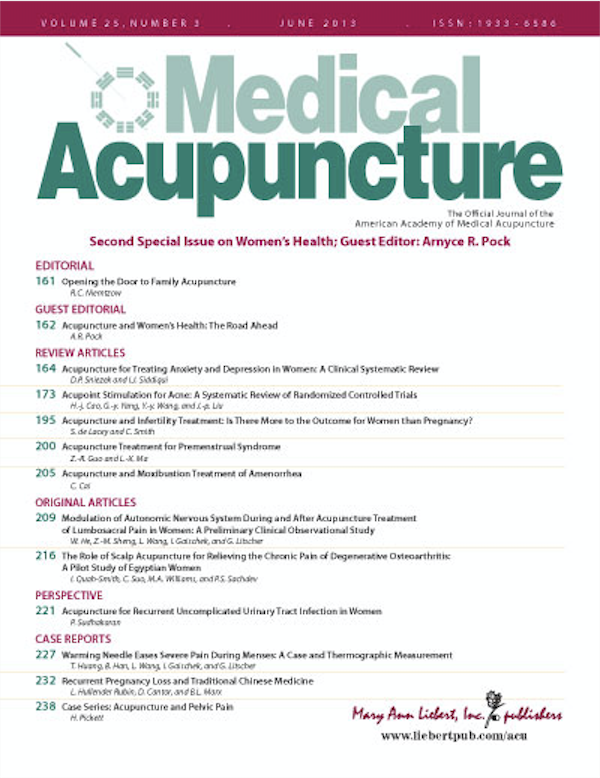
Efficacy of Press Needle at PC6 Neiguan and ST36 Zusanli as Adjuvant Therapy in Reducing Symptoms of Chemotherapy-Induced Nausea and Vomiting in Pediatric Cancer Patients Undergoing Chemotherapy
2022 Apr 01 Medical Acupuncture Bintoro DA, Nareswari I, Andriastuti M
Press needle acupuncture is able to reduce the Rhodes index of nausea, vomiting, and retching (RINVR) score and can be applied to pediatric patients because of its minimal side effects, but further research is needed to determine the appropriate treatment time.
Randomised Controlled Trial Acupuncture Chemotherapy-Induced Nausea and Vomiting Vomiting Nausea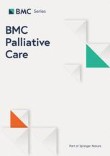
Effect of chocolate on older patients with cancer in palliative care: a randomised controlled study
2022 Jan 04 BMC Palliative Care Vettori JC, da-Silva LG, Pfrimer K, Jordão AA, Louzada-Junior P, Moriguti JC, et al.
Clinical Study Randomised Controlled Trial Cancer Chocolate Palliative Care Cancer Treatment SupportConsuming chocolate with higher cocoa content can improve the nutritional status and functionality of older cancer patients in palliative care.

Clinical Effects of Jiawei Danggui Beimu Kushen Pills in the Treatment of Prostate Cancer and Their Influence on the Expression of Serum Prostate Specific Antigen
2021 Nov 22 Evidence-Based Complementary and Alternative Medicine Zhao H, Ren Z, Wang G
Randomised Controlled Trial Clinical Study Jia Wei Dang Gui Bei Mu Ku Shen Pills Prostate CancerJiawei Danggui Beimu Kushen pills were shown to be effective in treating prostate cancer, improving patients' quality of life and potentially regulating serum PSA levels.
Study Protocols
Published study protocols are detailed plans that outline the objectives, methodology, statistical analyses, and organisation of a research study that have been made publicly available for others to review and use as a reference.

Acupuncture for insomnia in people with cancer (Protocol)
2022 Aug 25 Cochrane Database of Systematic Reviews Liu C, Zhao G, Li T, Guo S, Tang Y, Li B, et al.
We will evaluate the effects at different periods of treatment in relation to cancer treatment (before, during, or after treatment), and analyse the effects of acupuncture on quality of life.
Study Protocol Insomnia Cancer
Efficacy and safety of acupuncture combined with Chinese herbal medicine in the treatment of primary liver cancer
2021 Oct 08 Medicine Dong S, Zhuang X, Yangyang L, Yan L, Houbo D, Song W, et al.
This study will provide evidence-based medical evidence for the treatment of PLC with a combination of acupuncture and Chinese herbal medicine, and provide new ideas and methods for the treatment of PLC.
Study Protocol Acupuncture Chinese Herbal Medicine
Efficacy and safety of acupuncture and moxibustion combined with the external application of traditional Chinese medicine in the treatment of primary liver cancer
2021 Oct 29 Medicine Wang S, Xiong Z, Liu Y, Leng Y, Deng H, Shen D, et al.
This study will provide evidence-based guidance for the treatment of PLC with acupuncture and the external application of traditional Chinese medicine and offers new ideas and methods for the treatment of PLC.
Study Protocol Liver Cancer Moxibustion
Acupuncture for thyroid nodule treatment A protocol of systematic review and meta-analysis of randomized clinical trials
2020 Oct 20 Medicine Chen, Qi; Zhou, Jun; Zhang, Xinxia; Wang, Lizhen; Yang, Botong; Xia, et al.
Through the systematic review of this study, the evidence of the treatment of thyroid nodule by acupuncture has been summarized so far, so as to provide guidance for further promoting the application of acupuncture therapy in patients with thyroid nodule.
Study Protocol Thyroid Nodule AcupuncturePresentation Slides

Review Article
Pomegranate extract could potentially benefit women's reproductive health, enhance fertility, regulate menstrual cycles, support pregnancy, and help treat polycystic ovary syndrome.
Jang JY, Kim D, Im E, Kim ND

Animal Study
Manuka honey has demonstrated the potential to inhibit the proliferation of human breast cancer cells and stimulate apoptosis in these cells.
Márquez-Garbán DC, Yanes CD, Llarena G, Elashoff D, Hamilton N, Hardy M, Wadehra M, McCloskey SA, Pietras RJ

Review Article
Carrageenan, a common food additive, potentially exacerbates Inflammatory Bowel Disease (IBD) symptoms by altering gut microbiota, inducing intestinal permeability, and triggering inflammation.
Kimilu N, Gładyś-Cieszyńska K, Pieszko M, Mańkowska-Wierzbicka D, Folwarski M

Network Pharmacology
Bruceolic oil emulsion, when combined with androgen antagonists, shows the greatest efficacy in treating prostate cancer amongst Chinese patent medicines.
Wang S, Zhang F, Liu J, Qin P

Systematic Review
Noni fruit and its compounds demonstrate significant potential in cancer therapy by inducing apoptosis, arresting cell cycle, inhibiting angiogenesis, and modulating immune system.
Kitic D, Miladinovic B, Randjelovic M, Szopa A, Seidel V, Prasher P, Sharma M, Fatima R, Arslan Ateşşahin D, Calina D, Sharifi‐Rad J

Review Article
Pumpkin seeds are recognised for their medicinal, nutritional, and cosmetic benefits, including anti-diabetic, heart disease prevention, anti-cancer, and antioxidant qualities.
Wal A, Singh MR, Gupta A, Rathore S, Rout RR, Wal P
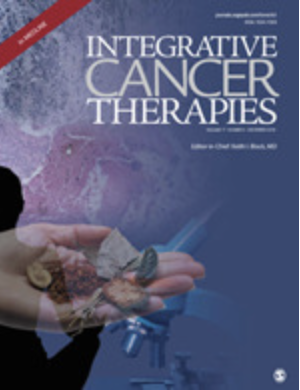
Meta-Analysis
Adding Compound Kushen Injection (CKI), a traditional Chinese medicine, to chemotherapy treatment enhanced treatment response and reduced side effects in advanced colorectal cancer patients.
Wu J, Ma X, Wang X, Zhu G, Wang H, Zhang Y, Li J
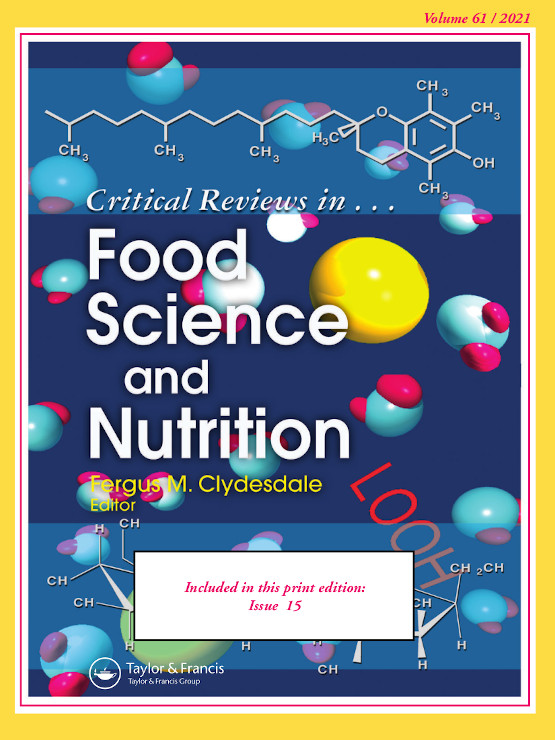
Meta-Analysis
Consuming carrots can significantly decrease the risk of cancer.
Ojobor CC, O’Brien GM, Siervo M, Ogbonnaya C, Brandt K

Review Article
Bee pollen showcases a range of biological activities, such as anti-inflammatory, antimicrobial, and potential antiviral properties, which could contribute to the creation of innovative therapies.
Rodríguez-Pólit C, Gonzalez-Pastor R, Heredia-Moya J, Carrera-Pacheco SE, Castillo-Solis F, Vallejo-Imbaquingo R, Barba-Ostria C, Guamán LP
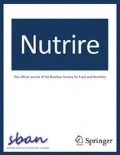
Review Article
Almond consumption has beneficial impacts on cardiovascular diseases, diabetes, obesity, and it can improve cognitive performance and protect against skin aging.
Ouzir M
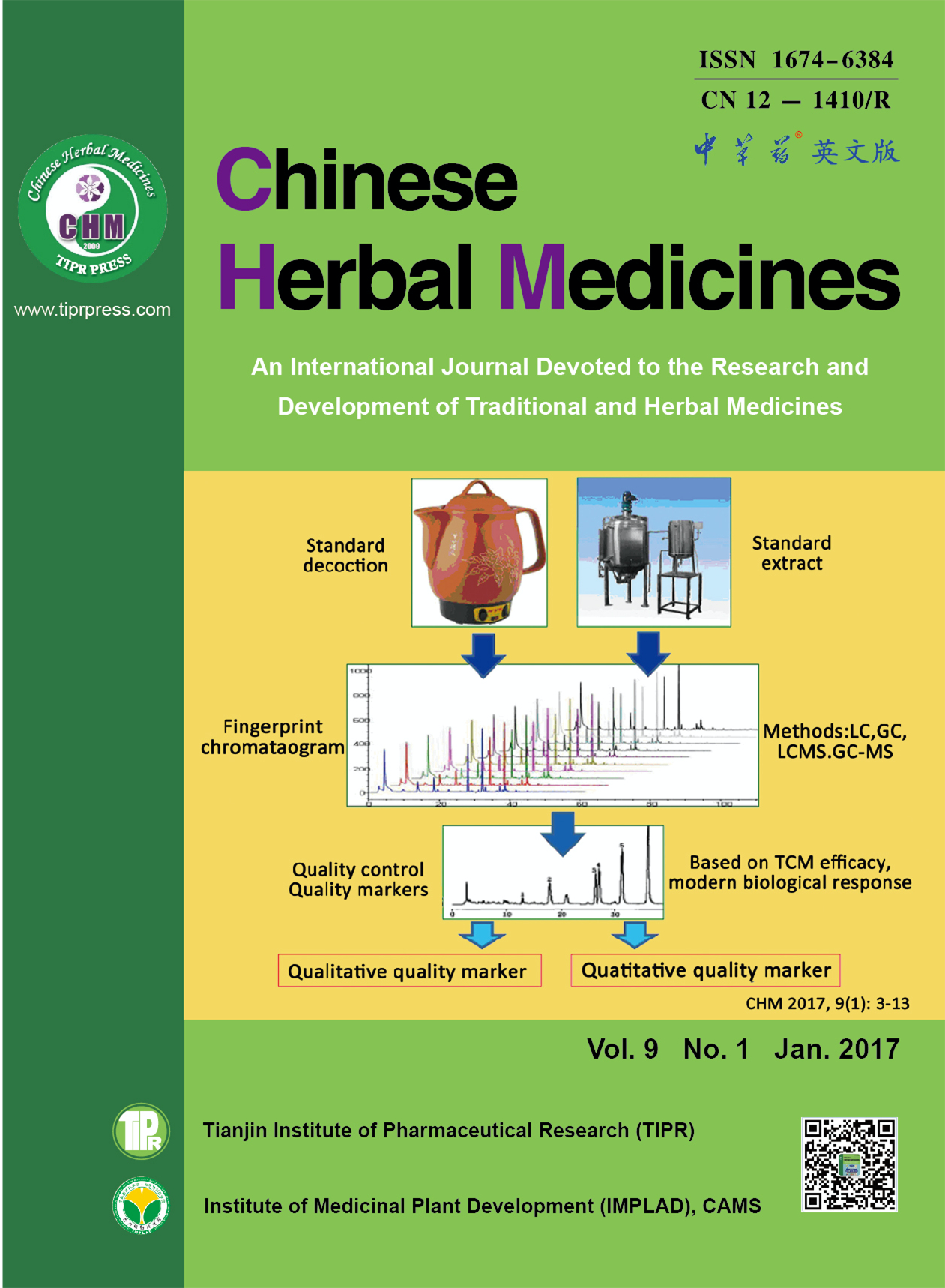
Review Article
Chinese herbal medicines (CHMs) possess multiple advantages, including multiple targets, pathways, and low toxicity, for the treatment of prostate cancer.
Kong F, Wang C, Zhang J, Wang X, Sun B, Xiao X, Zhang H, Song Y, Jia Y

Review Article
Pomegranate and its by-products, particularly the peel, contain bioactive compounds with potential antimicrobial, anticancer and antiviral properties.
Valero-Mendoza AG, Meléndez-Rentería NP, Chávez-González ML, Flores-Gallegos AC, Wong-Paz JE, Govea-Salas M, Zugasti-Cruz A, Ascacio-Valdés JA

Review Article
Soy protein, bioactive peptides, and isoflavones are generally safe for consumption and may help reduce the risk of several significant health conditions.
Tan ST, Tan SS, Tan CX

Review Article
Soybean intake can potentially reduce risks of several cancers, type 2 diabetes, osteoporosis, and hot flashes, and it may negatively impact some drug treatments and cause allergies.
Kang JH, Dong Z, Shin SH
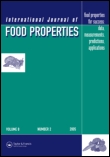
Review Article
Plums, which are rich in bioactive compounds, antioxidants, and vitamins, can help maintain blood glucose level, bone health, heart health and even treat certain cancers.
Ayub H, Nadeem M, Mohsin M, Ambreen S, Khan F, Oranab S, Rahim M, Zubair khalid M, Zongo E, Zarlasht M, Ullah S
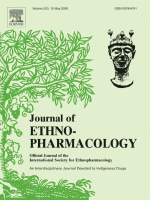
Network Pharmacology
Gold kiwifruit extracts contained different bioactive materials which showed selective cytotoxic activity against human oral tumor cells and displayed anti-HIV, antioxidant, and antibacterial activities.
Motohashi N, Shirataki Y, Kawase M, Tani S, Sakagami H, Satoh K, Kurihara T, Nakashima H, Mucsi I, Varga A, Molnár J
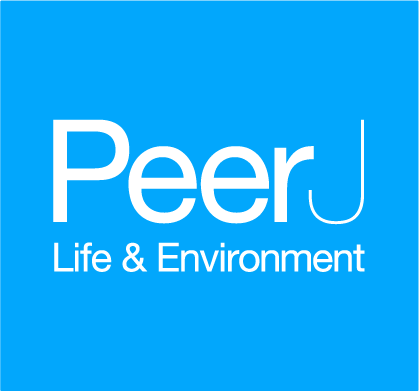
Review Article
Crocin, a compound derived from saffron, has shown considerable potential in hindering tumor growth and improving immune status, across various malignant tumors.
Bao X, Hu J, Zhao Y, Jia R, Zhang H, Xia L
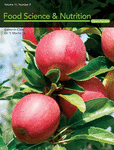
Review Article
Eating apples and apple products can enhance health by protecting the cardiovascular system, combating cancer and cognitive impairment, and improving hair growth, among other beneficial effects.
Zhang Y, Zeng M, Zhang X, Yu Q, Zeng W, Yu B, Gan J, Zhang S, Jiang X
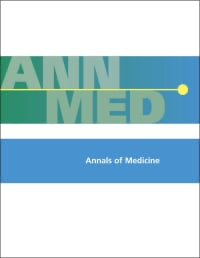
Systematic Review
Consuming dairy products might reduce the risk of developing breast cancer.
Arafat HM, Omar J, Shafii N, Naser IA, Al Laham NA, Muhamad R, Al-Astani TAD, Shaqaliah AJ, Shamallakh OM, Shamallakh KM, Abusalah MAH

Experimental Study
The anthocyanins from the Gardenblue variety of blueberries exhibit strong antiproliferative effects on various cancer cells, especially liver cancer cells.
Zhao F, Wang J, Wang W, Lyu L, Wu W, Li W
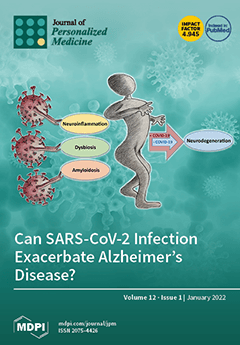
Case Report
The combination of epigallocatechin gallate, vitamin B12, folic acid, and hyaluronic acid could effectively counter precancerous lesions of the uterine cervix caused by HPV infections.
Grandi G, Botticelli L, Fraia PD, Babalini C, Masini M, Unfer V
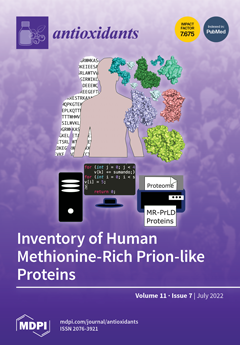
Clinical Study
Preclinical studies related to osteoporosis have reported favorable effects of honey on cortical and trabecular bone microstructure, bone strength, and oxidative stress.
Martiniakova M, Kovacova V, Mondockova V, Zemanova N, Babikova M, Biro R, Ciernikova S, Omelka R

Clinical Study
Clinical studies related to breast cancer have revealed that honey is effective in increasing blood cell counts, interleukin-3 levels, and quality of life.
Martiniakova M, Kovacova V, Mondockova V, Zemanova N, Babikova M, Biro R, Ciernikova S, Omelka R
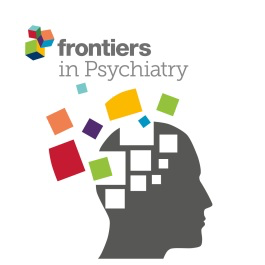
Systematic Review
Acupuncture, especially TEAS, is safer and more effective than medication for improving sleep quality in cancer related insomnia
Ou Y, Lin D, Ni X, Li S, Wu K, Yuan L, Rong J, Feng C, Liu J, Yu Y, Wang X, Wang L, Tang Z, Zhao L

Systematic Review
Acupuncture and Moxibustion Show Promise for Chronic Renal Insufficiency
Ou Y, Lin D, Ni X, Li S, Wu K, Yuan L, Rong J, Feng C, Liu J, Yu Y, Wang X, Wang L, Tang Z, Zhao L

Cohort Study
Regular consumption of raw carrots is associated with a significant, dose-dependent reduction in lung cancer incidence, suggesting a potential cancer-protective effect attributed to polyacetylenic compounds, particularly falcarinol and falcarindiol, present in raw carrots.
Deding U, Baatrup G, Kaalby L, Kobaek-Larsen M
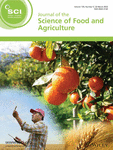
Review Article
Carrot and carotene consumption could diminish the risk of a wide range of negative health consequences, including multiple types of cancer.
Yi X, Li J, Liao D, Peng G, Zheng X, Xu H, Zhang T, Ai J
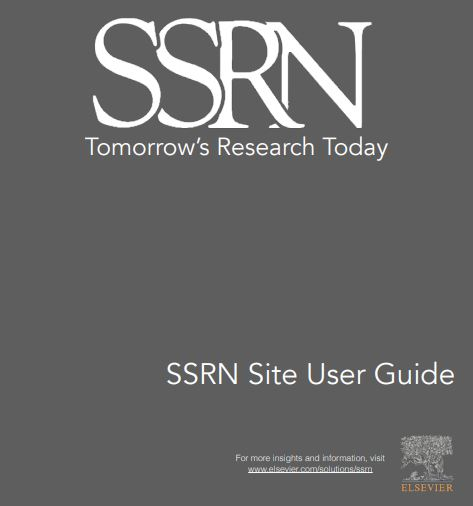
Systematic Review
Carrot consumption, beyond its β- and α-carotene content, significantly reduces cancer risk, highlighting polyacetylenes as potential anti-cancer agents, urging active promotion of carrot intake.
Ojobor CC, O'Brien GM, Siervo M, Ogbonnaya C, Brandt K
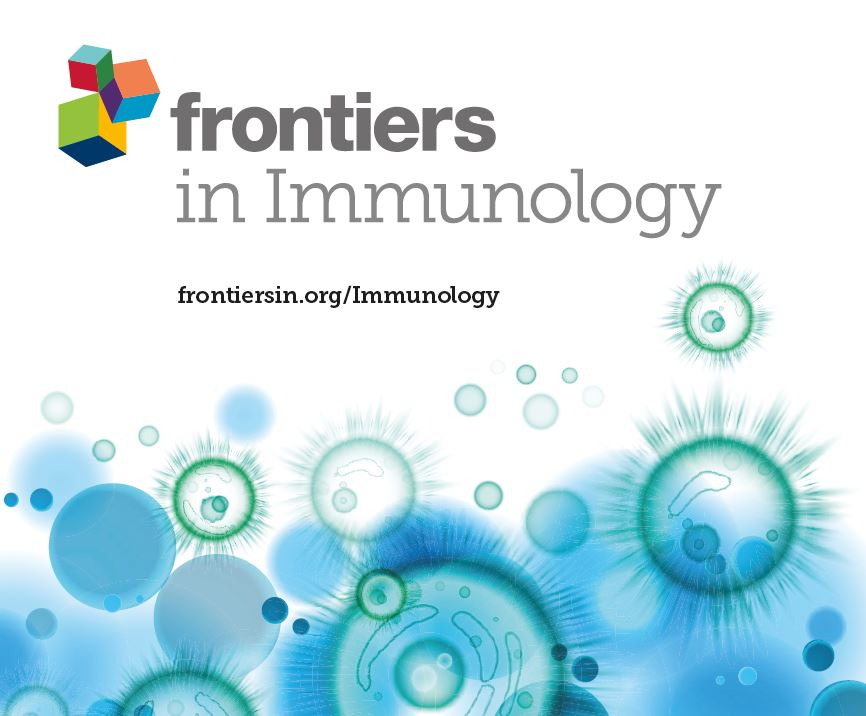
Network Pharmacology
Manuka honey exhibits a dual role in immune modulation, triggering a pro-inflammatory response by elevating cytokine expression and neutrophil recruitment via TLR signaling, while also influencing the phenotypic and functional maturation of macrophages.
Masad RJ, Nasser RA, Bashir G, Mohamed YA, Al-Sbiei A, Al-Saafeen BH, Fernandez-Cabezudo MJ, Al-Ramadi BK

Systematic Review
Acupuncture shows positive effects on cancer-related issues; research calls for further exploration of acupuncture's efficacy and safety, especially for conditions like depression, offering further potential support for cancer survivors
Zhang X, Hou W, Pu F, Wang X, Wang Y, Yang M, Cheng K, Wang Y, Robinson N, Liu J
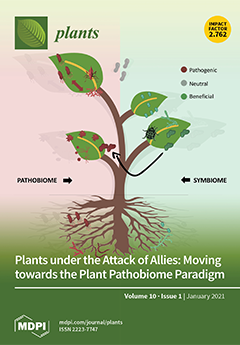
Experimental Study
Broccoli sprouts may reduce the viability of thyroid cancer cells and prevent inflammation, demonstrating a promising safety profile for normal thyroid function.
Paśko P, Zagrodzki P, Okoń K, Prochownik E, Krośniak M, Galanty A

Review Article
Compounds found in green tea, especially EGCG, show significant anti-cancer activity and hold promise as potential anticancer drugs or adjuvants to standard chemotherapy.
Farhan M

Clinical Study
Acupuncture has shown potential in enhancing structural nerve regeneration in Chemotherapy-induced peripheral neuropathy, leading to subjective improvements and positive neurological findings.
Friedemann T, Kark E, Cao N, Klaßen M, Meyer-Hamme G, Greten JH, Rostock M, Buhlmann E, Zhao A, Schröder S

Review Article
Bee pollen, enriched with multiple nutrients, serves as a protective shield against a variety of ailments such as diabetes, allergies, and cancers, and potentially useful in cosmetic applications.
Algethami JS, El-Wahed AAA, Elashal MH, Ahmed HR, Elshafiey EH, Omar EM, Naggar YA, Algethami AF, Shou Q, Alsharif SM, Xu B, Shehata AA, Guo Z, Khalifa SAM, Wang K, El-Seedi HR
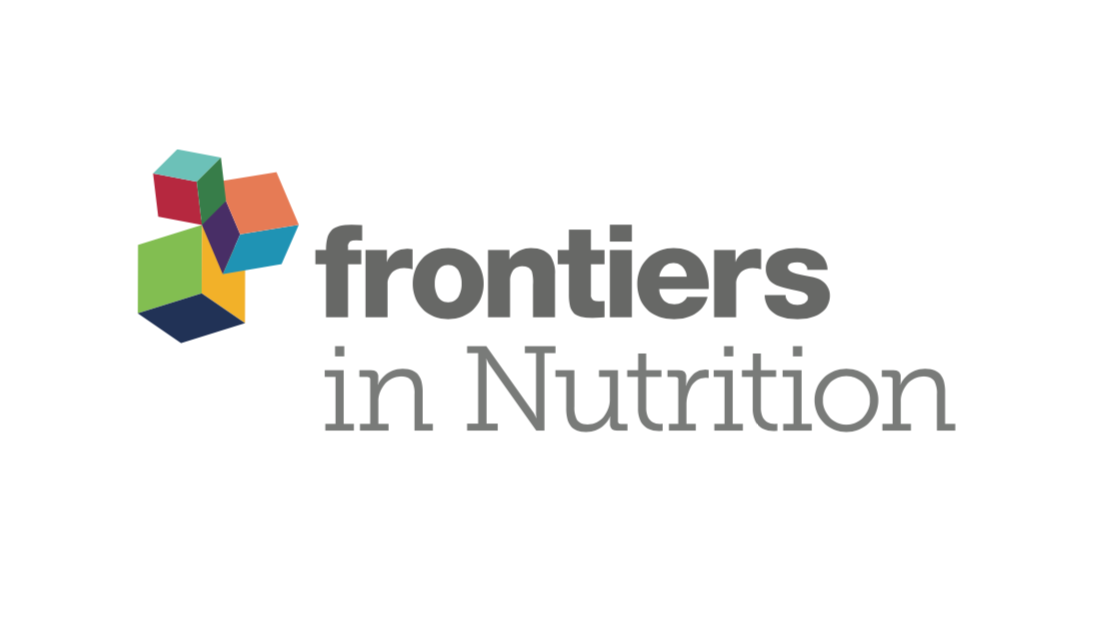
Cohort Study
Moderate consumption of carrots is associated with a lower incidence of colorectal cancer, implying a potential cancer prevention effect in a certain dose-range.
Jiang Z, Chen H, Li M, Wang W, Fan C, Long F

Review Article
The underutilized pomegranate peel, full of abundant bioactive substances, could be repurposed for its potential health benefits like anti-inflammatory, anti-cancer, cardiovascular protection, and antibacterial activities.
Mo Y, Ma J, Gao W, Zhang L, Li J, Li J, Zang J
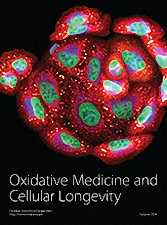
Systematic Review
Ginger, native to Southeast Asia, possesses antioxidant and antiviral properties, contributing to healthy ageing and potential prevention of age-related disorders.
Ozkur M, Benlier N, Takan I, Vasileiou C, Georgakilas AG, Pavlopoulou A, Cetin Z, Saygili EI

Review Article
Ellagic acid, commonly found in various plant foods, can enhance cancer treatment by boosting the effects of chemotherapy and radiotherapy while reducing their side effects.
Xue P, Zhang G, Zhang J, Ren L

Experimental Study
Ethanol and n-hexane extracts of Chrysanthemum indicum reveal potent anticancer activity against HepG2 cancer cells by promoting apoptosis and reducing cell proliferation.
Mehboob Z, Sharif S, Lodhi MS, Zaigham K
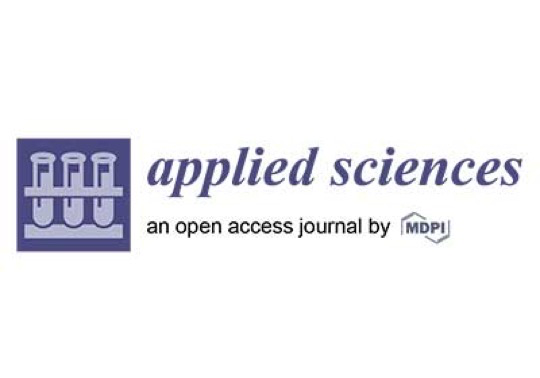
Review Article
Purple carrot roots, rich in bioactive compounds like anthocyanin, may be effective in preventing metabolic syndrome and cancer by reducing inflammation and metabolic changes.
Rasheed H, Shehzad M, Rabail R, Kowalczewski P, Kidoń M, Jeżowski P, Ranjha MMAN, Rakha A, Din A, Aadil RM

Review Article
Modern extraction techniques improve the extraction of bioactive compounds from black soybeans, which have potential use in functional foods and nutraceutical components.
Kumar M, Suhag R, Hasan M, Dhumal S, Radha , Pandiselvam R, Senapathy M, Sampathrajan V, Punia S, Sayed AAS, Singh S, Kennedy JF
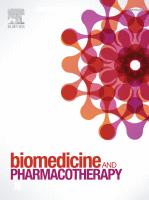
Systematic Review
Plums, specifically European and Japanese species, exhibit anti-inflammatory and antioxidant properties that may be used for the treatment and prevention of cancer.
Bahrin AA, Moshawih S, Dhaliwal JS, Kanakal MM, Khan A, Lee KS, Goh BH, Goh HP, Kifli N, Ming LC

Clinical Study
Consuming chocolate with higher cocoa content can improve the nutritional status and functionality of older cancer patients in palliative care.
Vettori JC, da-Silva LG, Pfrimer K, Jordão AA, Louzada-Junior P, Moriguti JC, Ferriolli E, Lima NKC

Systematic Review
Noni, a medicinal plant, has illustrated diverse anticancer properties across different cancer models through numerous mechanisms including antitumor and immunomodulatory activities.
Chanthira Kumar H, Lim XY, Mohkiar FH, Suhaimi SN, Mohammad Shafie N, Chin Tan TY
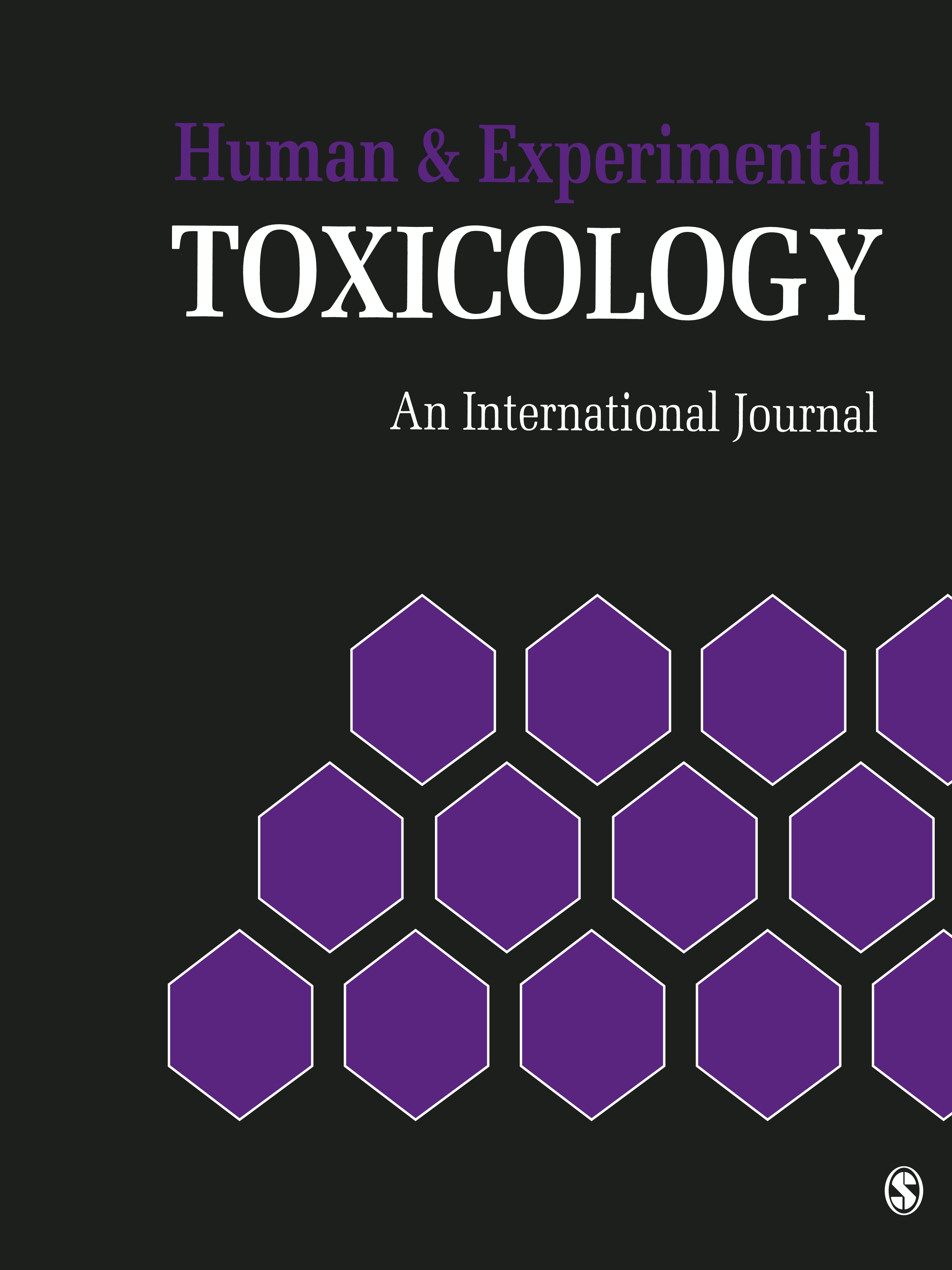
Experimental Study
Ellagic acid, found naturally in pomegranates, significantly inhibits growth and migration of gastric cancer cells without causing notable side effects.
Cheshomi H, Bahrami AR, Rafatpanah H, Matin MM

Review Article
Chrysanthemums, popular floricultural crops, not only hold significant ornamental value but also exhibit various therapeutic potentials including antioxidant, antimicrobial, and anticancer activities.
Hadizadeh H, Samiei L, Shakeri A

Review Article
Coconut water possesses unique compound profiles that imbue it with a broad spectrum of medical properties, incorporating aspects of nutrition, pharmacology, and disease prevention.
Rethinam P, Krishnakumar V
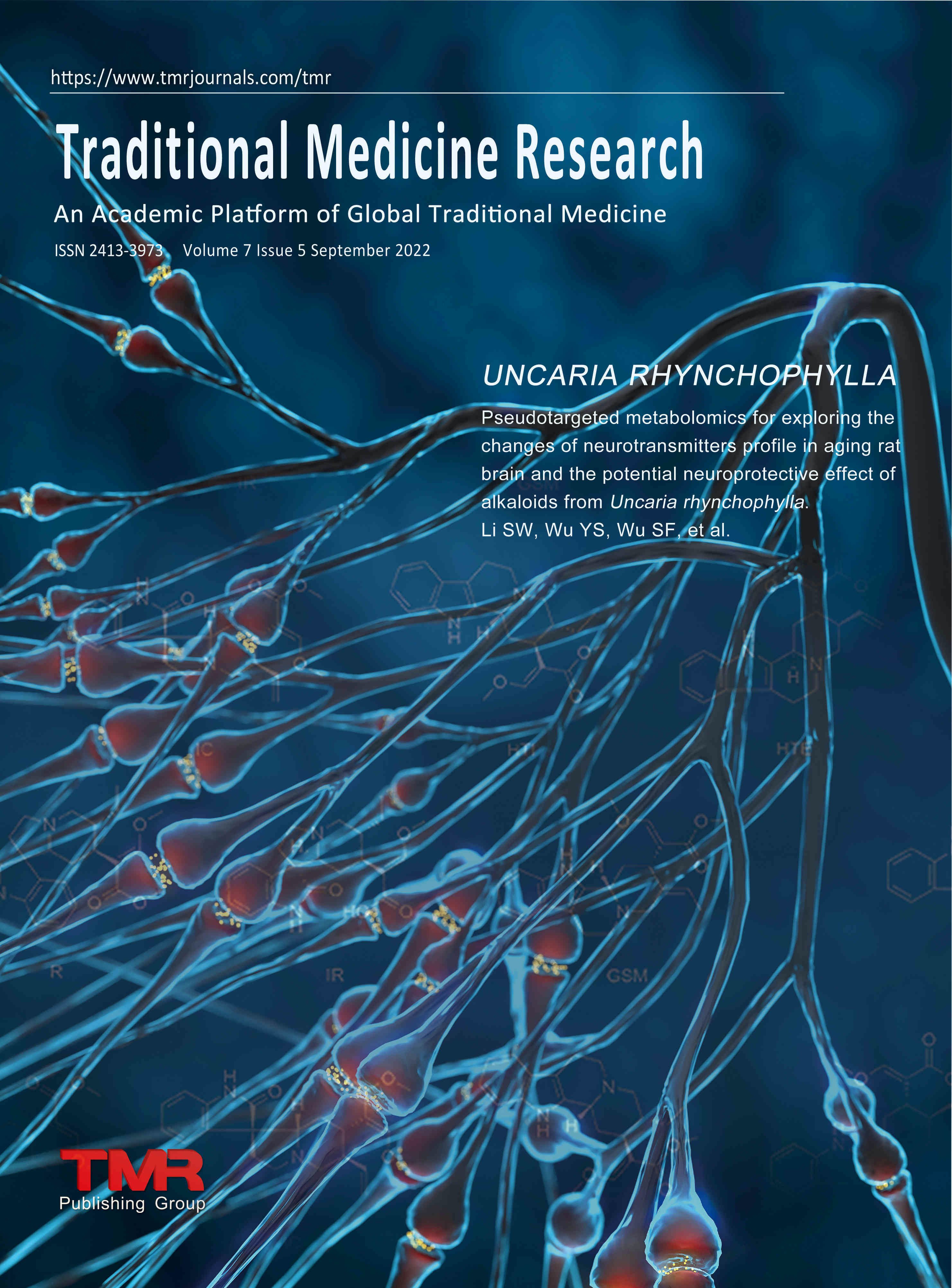
Theoretical Article
The jujube tree bears fruit endowed with substantial nutritional value and contains numerous phytochemical components with reported antioxidant, anti-cancer and neuroprotective properties.
Aafi E, Reza M, Mirabzadeh M
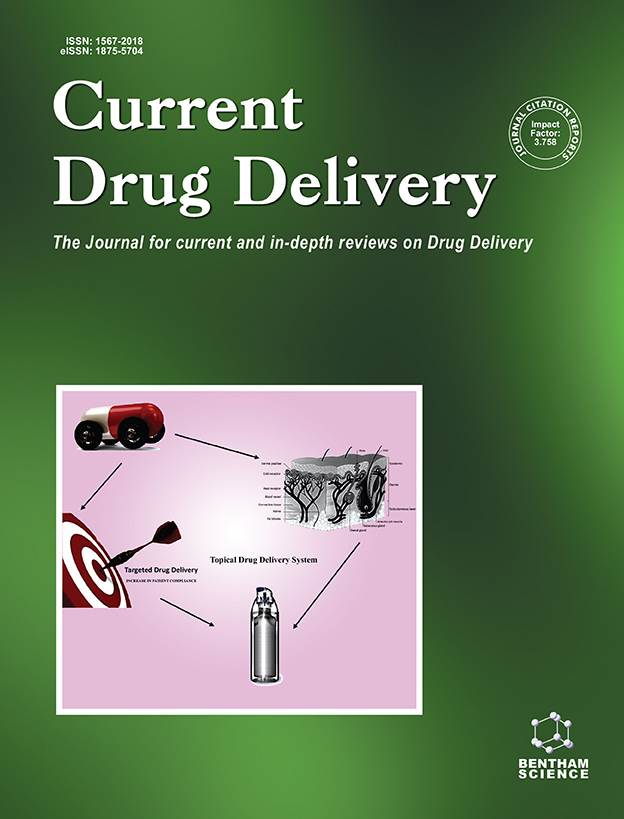
Review Article
Pomegranate juice and its bioactive components may serve as cost-effective, next-generation non-pharmacologic anticancer therapies, particularly against colorectal and prostate cancer.
Hussein L, Gouda M, Buttar HS

Experimental Study
Cocoa bean husk, a by-product of cocoa processing, exhibits potent antioxidant and anticancer effects on prostate cancer cells due to its high phenolic compound content.
Choi J, Yang C, Lim W, Song G, Choi H

Randomised Controlled Trial
Jiawei Danggui Beimu Kushen pills were shown to be effective in treating prostate cancer, improving patients' quality of life and potentially regulating serum PSA levels.
Zhao H, Ren Z, Wang G

Review Article
Cocoa, including its often discarded shell, has promising potential in providing benefits to human health due to its high content of health-boosting phytochemicals.
Cinar Z, Atanassova M, Tumer TB, Caruso G, Antika G, Sharma S, Sharifi-Rad J, Pezzani R

Review Article
Coffee consumption may contribute to the prevention of several inflammatory diseases and types of cancer, with reduced mortality risk deemed safe up to 400mg of caffeine per day.
Barrea L, Pugliese G, Frias-Toral E, El Ghoch M, Castellucci B, Chapela SP, Carignano MA, Laudisio D, Savastano S, Colao A, Muscogiuri G
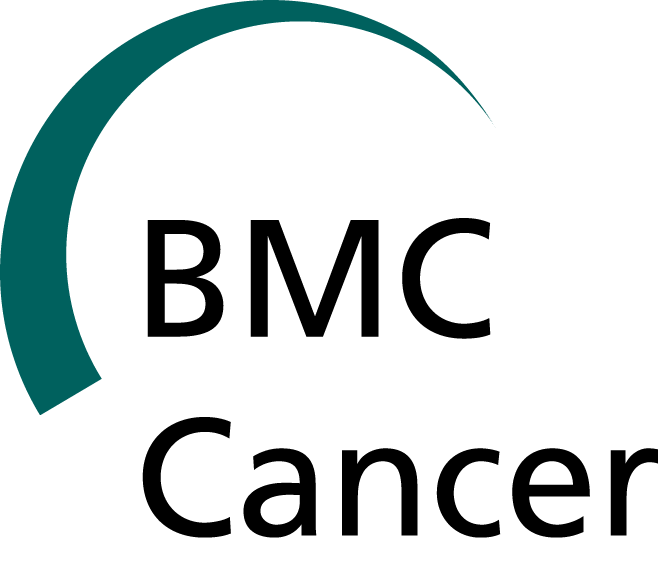
Systematic Review
D-Limonene, a bioactive compound found in citrus peels, shows potential anticancer activity and is better tolerated in breast cancer patients compared to its derivative perillyl alcohol.
Chebet JJ, Ehiri JE, McClelland DJ, Taren D, Hakim IA
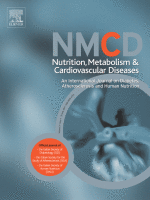
Systematic Review
Drinking coffee may be linked to lower mortality risk in type 2 diabetes patients.
Shahinfar H, Jayedi A, Khan TA, Shab-Bidar S

Cohort Study
Regular consumption of chocolate relates to lowered risk of death from all causes, cardiovascular disease, and Alzheimer’s disease, particularly in non-smokers.
Zhong GC, Hu TY, Yang PF, Peng Y, Wu JJ, Sun WP, Cheng L, Wang CR
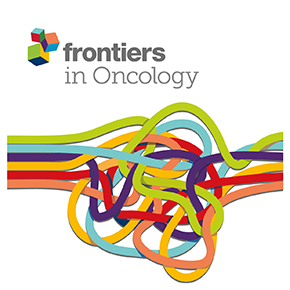
Systematic Review
Current evidence suggests that acupuncture might improve breast cancer treatment-related symptoms measured with patient-reported outcomes including quality of life, pain, fatigue, hot flashes, sleep disturbance and anxiety.
Zhang Y, Sun Y, Li D, Liu X, Fang C, Yang C, Luo T, Lu H, Li H, Zhang H, Liang Q, Wu J, Huang L, Xu R, Ren L, Chen Q

Review Article
Green tea and its chief bioactive component have the potential to improve certain female reproductive disorders such as endometriosis, polycystic ovary syndrome, and dysmenorrhea.
Kamal DAM, Salamt N, Zaid SSM, Mokhtar MH
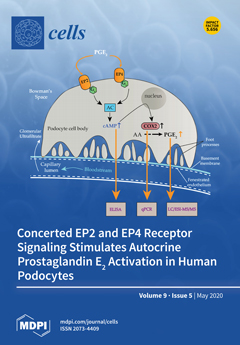
Systematic Review
The evidence from numerous studies proves sirtuin 1 significance in both chronological and premature aging as well as its dual role in cancer development.
Bielach-Bazyluk A, Zbroch E, Mysliwiec H, Rydzewska-Rosolowska A, Kakareko K, Flisiak I, Hryszko T.
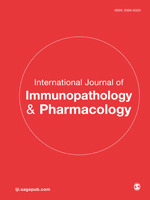
Systematic Review
Tremella polysaccharide is a safe natural active ingredient, which can be used in the prevention, treatment and rehabilitation of diseases.
Ma, X., Yang, M., He, Y., Zhai, C., & Li, C.
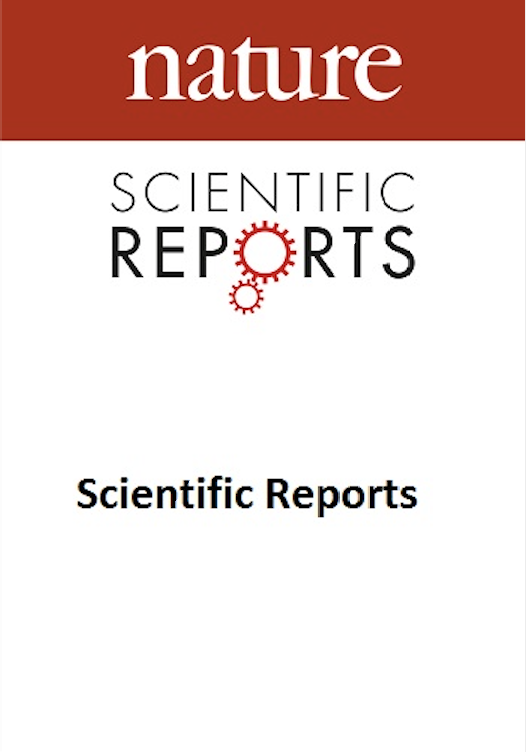
Network Pharmacology
The traditional formula Danggui Beimu Kushen Wan (DBKW) contains multi-targeting agents that simultaneously act on more than one pathway in prostate cancer.
Li H, Hung A, Yang AWH

Systematic Review
Isoflavones found in soybeans can reduce risks of certain cancers and alleviate menopause-related symptoms among women, such as vasomotor syndromes, spinal bone loss, and hypertension.
Chen LR, Chen KH
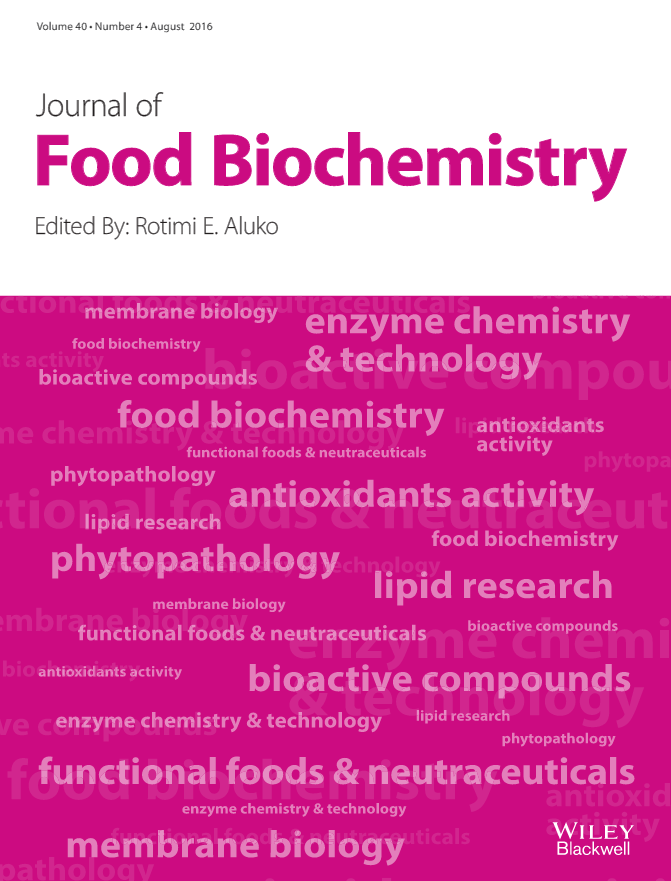
Review Article
Pomegranate demonstrates anti-proliferative, anti-oxidant, anti-inflammatory properties that can effectively control the progression of various respiratory diseases.
Shaikh SB, Bhandary YP
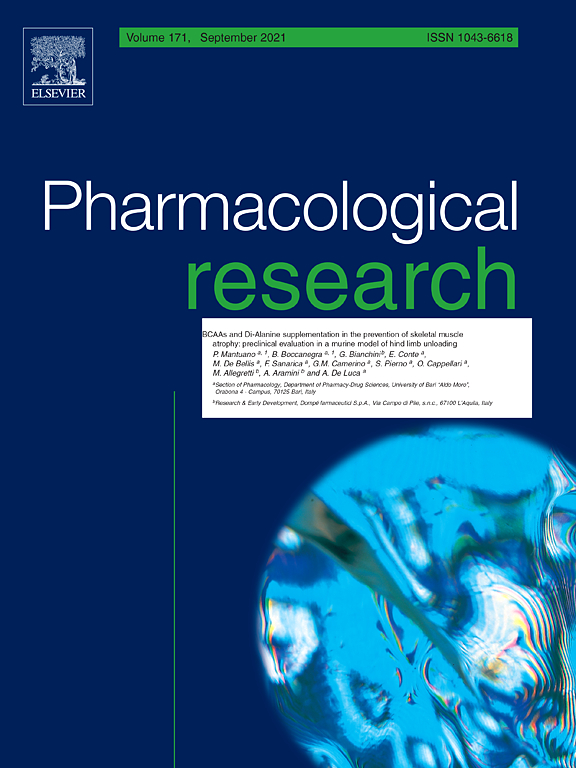
Review Article
Baicalin, a Scutellaria baicalensis extract, has been found to have numerous therapeutic applications in liver and gut diseases by mediating apoptosis and immune response pathways.
Hu Q, Zhang W, Wu Z, Tian X, Xiang J, Li L, Li Z, Peng X, Wei S, Ma X, Zhao Y

Clinical Study
Pomegranate polyphenols have shown strong potential in preventing and treating breast cancer through various anti-cancer effects.
Moga MA, Dimienescu OG, Bălan A, Dima L, Toma SI, Bîgiu NF, Blidaru A

Experimental Study
Pomegranate juice extract (PPJE) appears to reduce chemotherapy-induced skin side effects by inhibiting inflammation and promoting wound repair on the skin.
Rapa SF, Magliocca G, Pepe G, Amodio G, Autore G, Campiglia P, Marzocco S

Review Article
Green tea, coffee, wine, and curry have beneficial health effects due to the polyphenols they contain, which possess both antioxidant and pro-oxidant properties.
Ohishi T, Fukutomi R, Shoji Y, Goto S, Isemura M
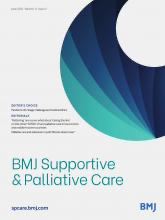
Systematic Review
Acupuncture may be an effective and safe treatment associated with pain reduction in the palliative care of patients with cancer.
Yang J, Wahner-Roedler DL, Zhou X, et al.
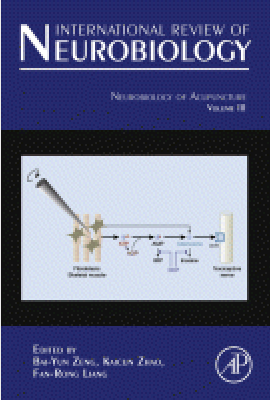
Review Article
Goji berries have significant potential as a natural medicine in anticancer efforts due to their high content of active compounds.
Anna Wawruszaka,Marta Halasaa,Karolina Oklab

Experimental Study
Pomegranate seed oil, rich in conjugated linolenic acid, potentially acts as a cytotoxic agent on tissue tumor cells, reducing polycystic ovary syndrome manifestations.
Bahmani M, Shokri S, Akhtar ZN, Abbaszadeh S, Manouchehri A
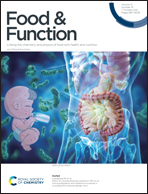
Experimental Study
The Lycium ruthenicum Murr variety of goji berry exhibits a stronger antioxidant activity and antiproliferative effect on cancer cells compared to Lycium barbarum L.
Xiong L, Deng N, Zheng B, Li T, Liu RH

Review Article
Regular coffee consumption, due to its bioactive compounds, may have protective effects against chronic disorders and certain neurodegenerative conditions.
Socała K, Szopa A, Serefko A, Poleszak E, Wlaź P

Review Article
Isoflavones, mainly found in soy-derived products, show beneficial effects on bone health, potential cancer risk reduction, and alleviation of menopausal symptoms, but not on cardiovascular risk.
Gómez-Zorita S, González-Arceo M, Fernández-Quintela A, Eseberri I, Trepiana J, Portillo MP

Mandarin peel oil induced preferential inhibition of human prostate cancer cell proliferation in a concentration-dependent manner.
Hussien NA, Mohamed HRH.
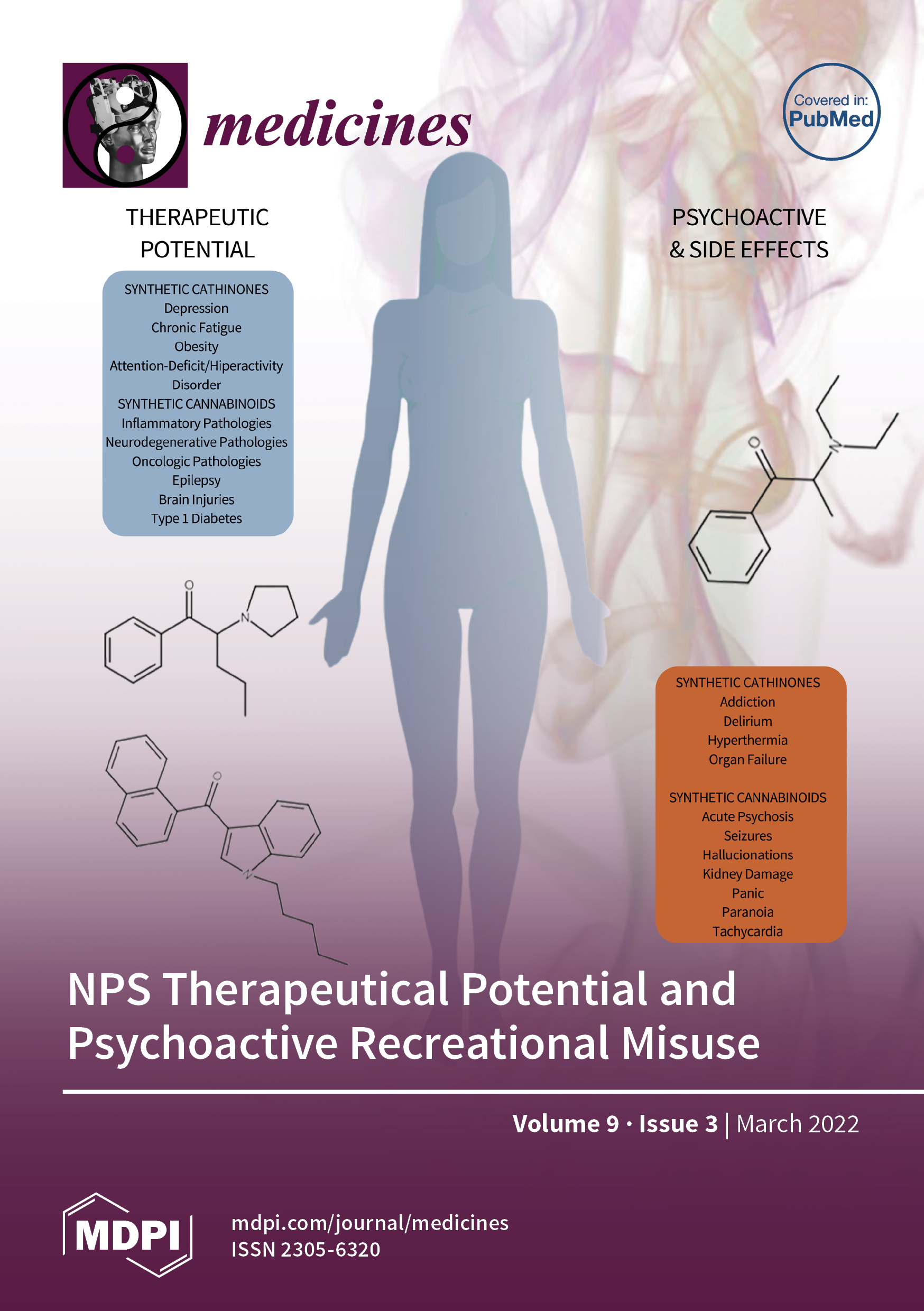
Experimental Study
Pomegranate juice increases the effectiveness of lung cancer treatment with the low dose chemotherapy drug Cisplatin, while simultaneously reducing its toxicity on normal cells.
Nasser M, Damaj Z, Hijazi A, Merah O, Al-Khatib B, Hijazi N, Trabolsi C, Damaj R, Nasser M

Experimental Study
The major components of green tea and coffee, EGCG and CGA respectively, may have anti-cancer effects, though these effects seem to vary for different types of cancer.
Hayakawa S, Ohishi T, Miyoshi N, Oishi Y, Nakamura Y, Isemura M
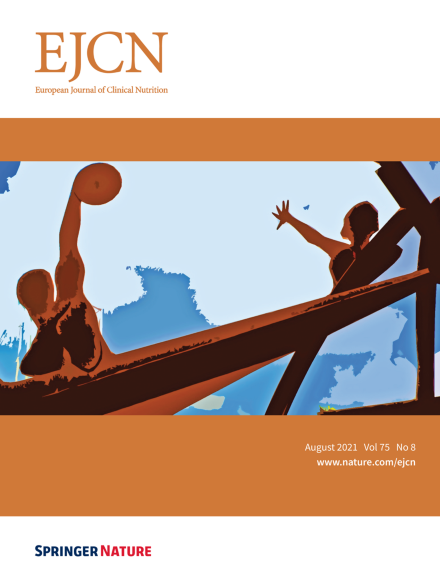
Systematic Review
The literature overall supports an inverse association between green tea and cardiovascular disease-related health outcomes, while the included meta-analyses generally suggested an inverse association between green tea and BMI-related and blood pressure outcomes.
Abe SK, Inoue M
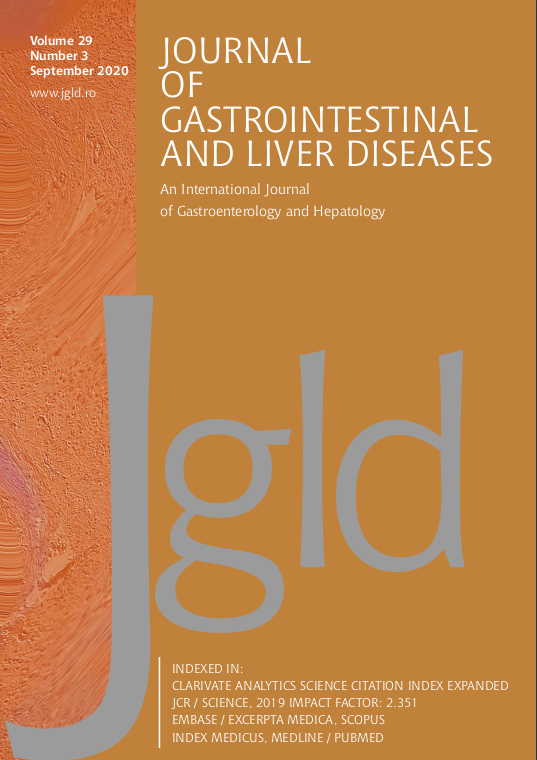
Systematic Review
Higher consumption of coffee correlates with a significant decrease in the risk of liver cancer or hepatocellular carcinoma.
Bhurwal A, Ratta P, Yoshitake S, Pioppo L, Reja D, Dellatore P, Rustgi V

Systematic Review
Eggplant may possibly be used in the treatment of anemia, atherosclerosis, and fatty degeneration.
Meenakshi Sharma and Prashant Kaushik

Systematic Review
The pooled results suggested that acupuncture led to moderate improvements in hot flashes, fatigue, and stiffness.
Yuanqing P, Yong T, Haiqian L, Gen C, Shen X, Dong J, Qi C, Miaomiao Q.

Experimental Study
Probiotic-enriched mung and adzuki bean sprouts demonstrate increased antioxidant potential and exhibit cytostatic and cytotoxic effects on human stomach cancer cells.
Świeca M, Herok A, Piwowarczyk K, Sikora M, Ostanek P, Gawlik-Dziki U, Kapusta I, Czyż J

Theoretical Article
Coffee, like many fruits and vegetables, activates a cellular response that boosts antioxidants and repair enzymes, which contributes to a lower risk of several diseases.
Kolb H, Kempf K, Martin S
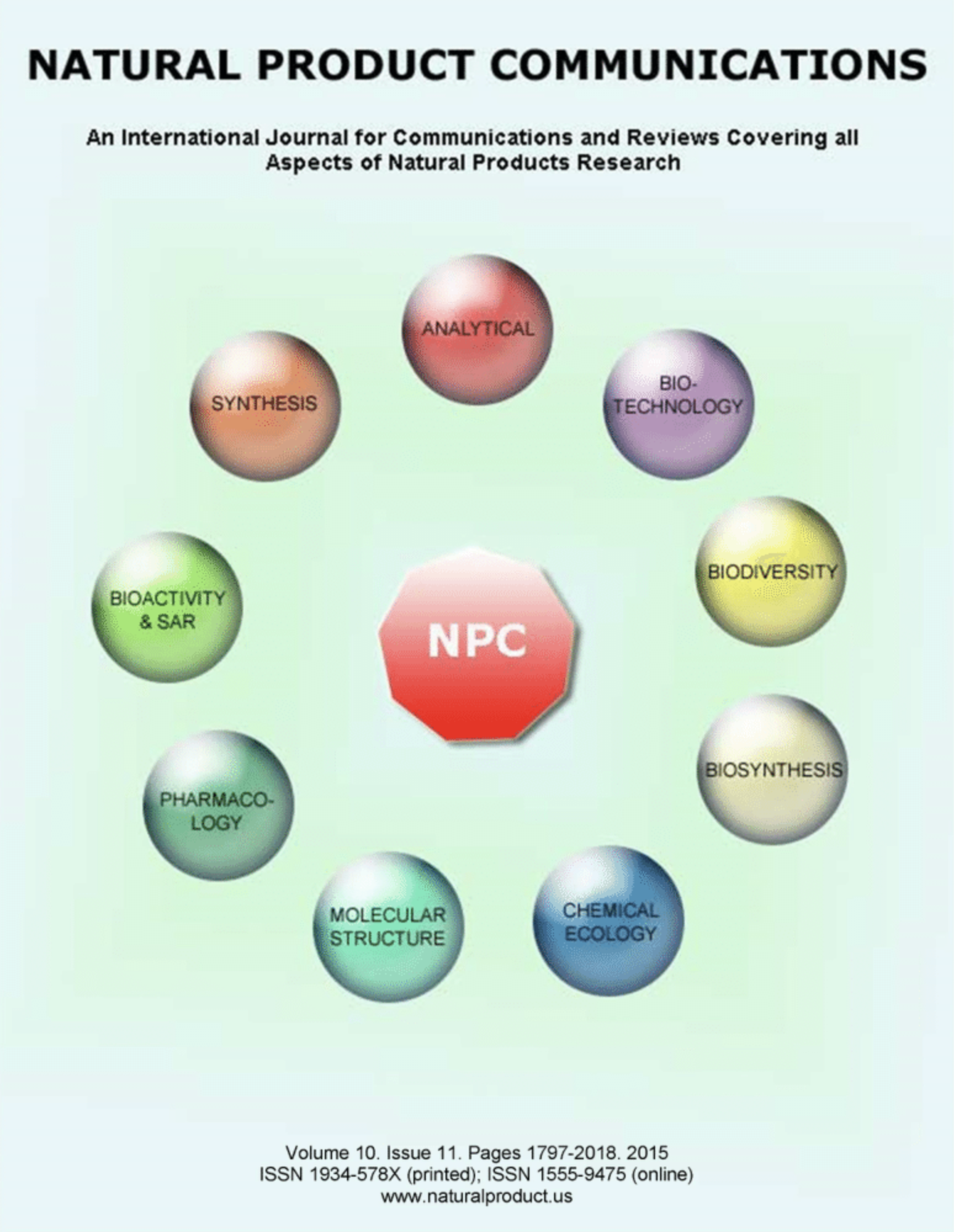
The pharmacological actions of Coix seed in gastric cancer treatment may involve pathways in cancer, the DNA damage response, transcription factor binding, the apoptotic process, and the cell–cell junction.
Zhang, F., Liu, X., Huo, B., Li, B., & Zhang, R. (

Systematic Review
This systematic review and meta-analysis provides evidence that acupuncture moxibustion therapy is serviceable and safe in treating breast cancer-related lymphedema.
Huimin Jin, Yuying Xiang, Yuqian Feng, Yiting Zhang, Shan Liu, Shanming Ruan, Huamiao Zhou
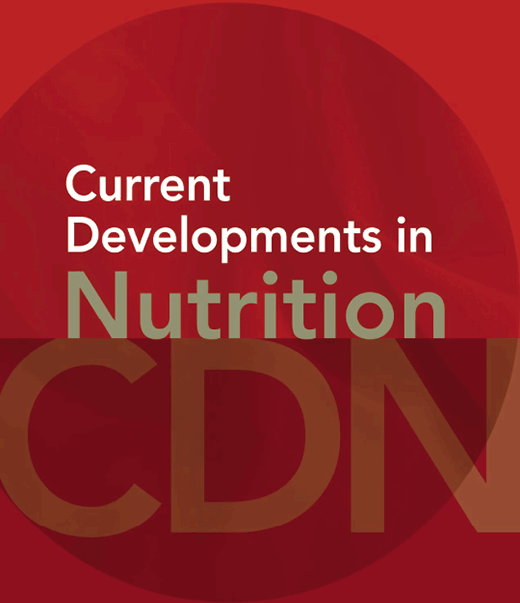
Review Article
Citrus peel flavonoids exhibit a remarkable spectrum of biological activities including anti-inflammatory, anticancer, antiproliferation, antiangiogenesis, antioxidant, cell cycle regulation, and antimetastasis effects.
Nooshin Koolaji, Balakrishnan Shammugasamy, Aaron Schindeler, Qihan Dong, Fariba Dehghani, Peter Valtchev

Systematic Review
Green tea, containing antioxidative catechins, may possess some beneficial effects in reducing the risk of specific types of cancer.
Filippini T, Malavolti M, Borrelli F, Izzo AA, Fairweather-Tait SJ, Horneber M, Vinceti M

Meta-Analysis
Coffee consumption shows a strong association with decreased risk of liver and endometrial cancer.
Zhao LG, Li ZY, Feng GS, Ji XW, Tan YT, Li HL, Gunter MJ, Xiang YB

Systematic Review
Ginger has been effective in a majority of studies, including those that examined the alleviation of nausea and vomiting of pregnancy, digestive function, improvement in the expression level of markers for colorectal cancer risk, and anti-inflammatory functions.
Anh NH, Kim SJ, Long NP, Min JE, Yoon YC, Lee EG, Kim M, Kim TJ, Yang YY, Son EY, Yoon SJ, Diem NC, Kim HM, Kwon SW.
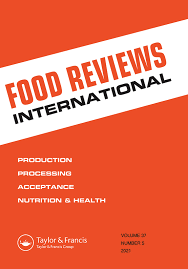
Review Article
Bioactive compounds found in avocado waste products exhibit various biological properties, with potential applications in the food and pharmaceutical industries.
Jimenez P, Garcia P, Quitral V, Vasquez K, Parra-Ruiz C, Reyes-Farias M, Garcia-Diaz DF, Robert P, Encina C, Soto-Covasich J

Cohort Study
Regular consumption of raw carrots, specifically 2-4 or more per week, is associated with a decreased risk of colorectal cancer.
Deding U, Baatrup G, Christensen LP, Kobaek-Larsen M

Randomised Controlled Trial
Group acupuncture was noninferior to individual acupuncture for treating cancer pain and was superior in many health outcomes. Group acupuncture is more cost-effective for alleviating cancer pain and should be considered for implementation trials.
Erica Nicole Reed, Jessa Landmann, Devesh Oberoi, Katherine-Ann L. Piedalue, Peter Faris, Linda E. Carlson

Cohort Study
Traditional Chinese Medicine when combined with Western methods, could improve survival rates in patients with colorectal cancer.
Yeh MH, Chiu HP, Wu MC, Koo M, Lin NW, Liao KK, Yeh CC, Li TM
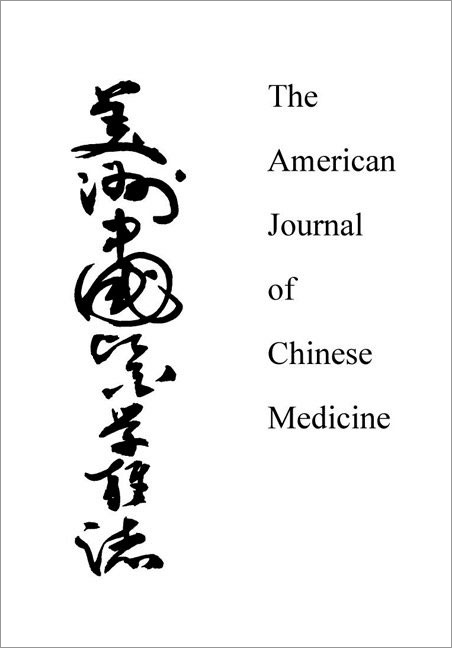
Review Article
The Chrysanthemum indicum L. plant has been discovered to have multiple pharmacological capabilities including anti-inflammatory, antioxidation, antipathogenic, anticancer, immune regulation, and hepatoprotective effects.
Shao Y, Sun Y, Li D, Chen Y

Systematic Review
Acupuncture has therapeutic potential in management of cancer-related fatigue for cancer survivors.
Jang A, Brown C, Lamoury G, Morgia M, Boyle F, Marr I, Clarke S, Back M, Oh B

Review Article
Prunus mume fruit extracts display hepatoprotective, anti-inflammatory, antioxidative, antibacterial effects, and show promise for treating cancer and alleviating chemotherapy side-effects.
Bailly C

Review Article
The date fruit contains compounds such as flavonoids that can protect tissues from harm and reduce risks of illnesses like cardiovascular disease and cancer.
Bentrad N, Hamida-Ferhat A

Clinical Study
Tian Wang Bu Xin Dan can potentially alleviate symptoms of cancer-related insomnia similarly to cognitive-behavioral therapy.
Moon SY, Jerng UM, Kwon OJ, Jung SY, Lee JY, Yoon SW, Shin WC, Byun JI, Lee JH
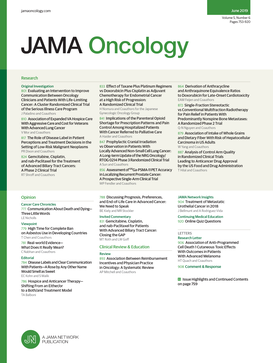
Systematic Review
Acupuncture and/or acupressure was significantly associated with reduced cancer pain and decreased use of analgesics.
He Y, Guo X, May BH, et al.
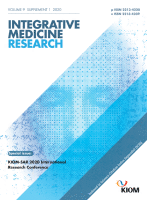
Systematic Review
Danggui Beimu Kushen Wan (DBKW), originally used for difficult urination in pregnant women, has found use in male prostate disorders.
Li H, Hung A, Yang AWH
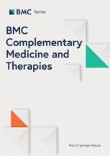
Coix lacryma-jobi sprout extract effectively inhibits cervical cancer cell growth by triggering cell cycle arrest and apoptosis.
Son, E.S., Kim, SH., Kim, Y.O. et al

Coix seed extract could augment the efficacy of gemcitabine therapy in pancreatic cancer cells at least partly due to the alteration of ABC transporter-mediated drug efflux function.
Qian, Y.; Xiong, Y.; Feng, D.; Wu, Y.; Zhang, X.; Chen, L.; Gu, M.
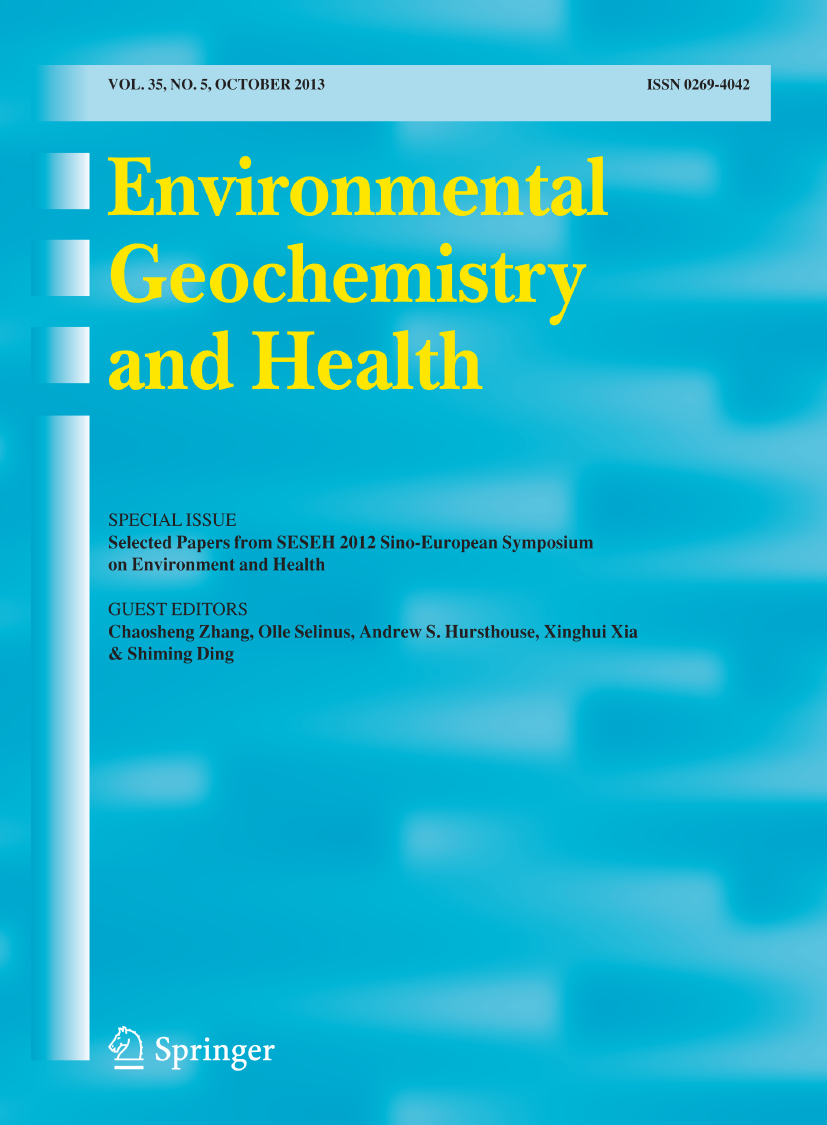
Cohort Study
Caramanico Terme’s mineral water treatment significantly improves health and reduces the risk of major diseases like cardiovascular, cancer, and neurological conditions.
Di Marco M, De Novellis AMP, Carluccio V, Bozzelli R, Orlando M, Lanuti P
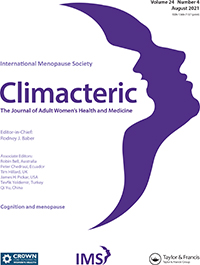
Systematic Review
Acupuncture significantly alleviated breast cancer treatment-related menopause symptoms for at least 3 months, but not hot flushes.
Chien TJ, Liu CY, Fang CJ, Kuo CY
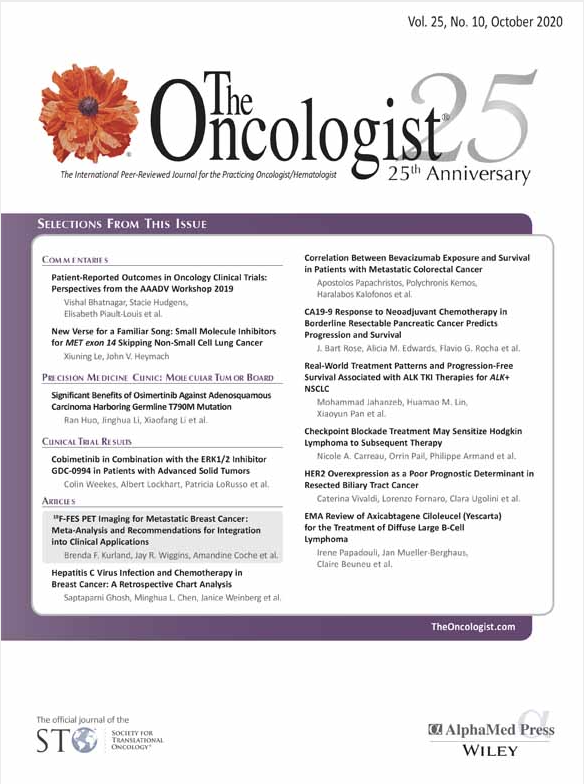
Randomised Controlled Trial
Acupuncture treatment significantly improves neuropathic symptoms in women suffering from chemotherapy-induced peripheral neuropathy after breast cancer therapy.
Lu W, Giobbie-Hurder A, Freedman RA, Shin IH, Lin NU, Partridge AH, Rosenthal DS, Ligibel JA
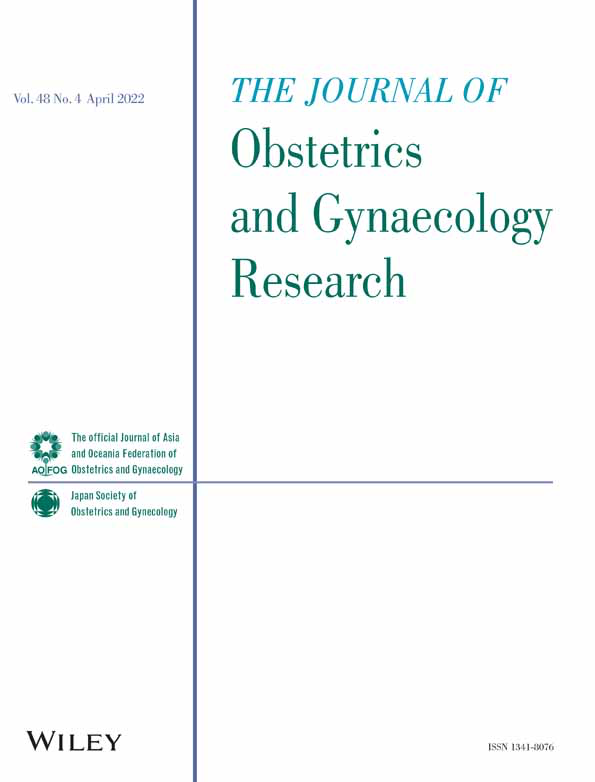
Systematic Review
Acupuncture intervention could significantly improve the treatment outcomes for breast cancer-related lymphedema, regardless of the control treatments used.
Hou W, Pei L, Song Y, Wu J, Geng H, Chen L, Wang Y, Hu Y, Zhou J, Sun J
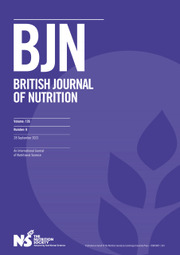
Systematic Review
Higher carrot consumption is associated with a lower risk of developing lung cancer, particularly adenocarcinoma.
Xu H, Jiang H, Yang W, Song F, Yan S, Wang C, Fu W, Li H, Lyu C, Gan Y, Lu Z

Review Article
Cocoa and cocoa products, enriched with polyphenols, have potential health benefits including enhanced vascular function, cancer prevention, and improvement in learning and memory.
E S, Panjikkaran ST, L SC, R RP
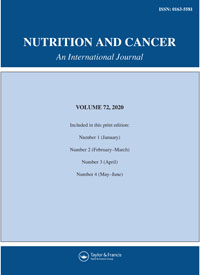
Review Article
Kiwifruit supplementation may be associated with direct and indirect anticancer effects, the former likely due to ascorbic acid-mediated reduction of DNA oxidative injury and cytotoxic effect on cancer cell lines.
Lippi G, Mattiuzzi C

We showed that Angelica sinensis is not that stimulatory in breast cancer both in vitro and in vivo, though Angelica sinensis should still be used with caution in estrogen receptor-positive breast cancer patients.
Yue Grace Gar-Lee, Wong Lok-Sze, Leung Hoi-Wing, Gao Si, Tsang Julia Yuen-Shan, Lin Zhi-Xiu, Law Bonita Ka-Bo, Tse Gary Man-Kit, Lau Clara Bik-San
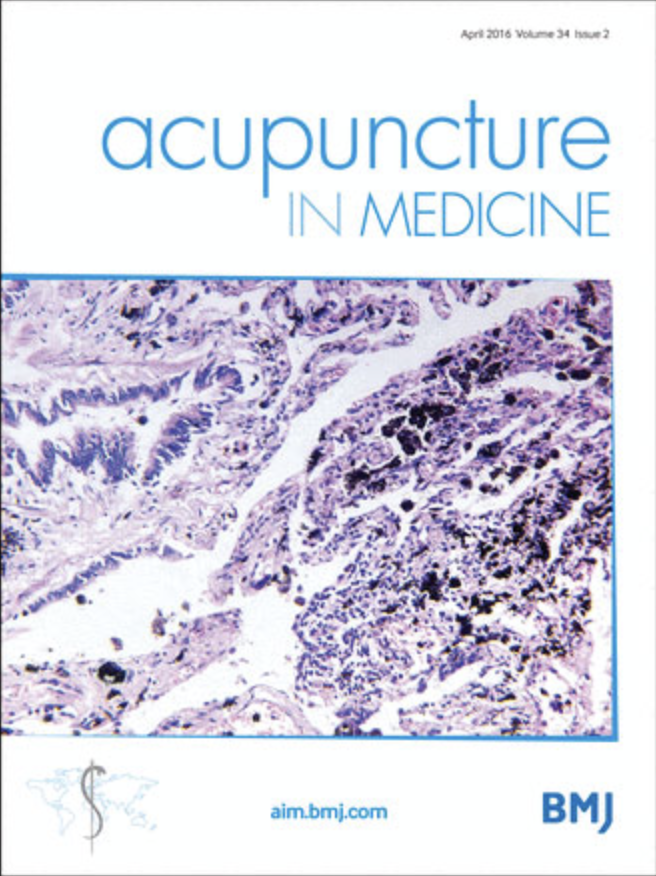
Systematic Review
Acupuncture has been presented as an effective intervention for reducing limb oedema in women post breast cancer surgery.
Zhang X, Wang X, Zhang B, Yang S, Liu D.

Systematic Review
Coffee consumption shows a protective effect against colorectal and colon cancers, particularly among US subjects and European men.
Sartini M, Bragazzi N, Spagnolo A, Schinca E, Ottria G, Dupont C, Cristina M
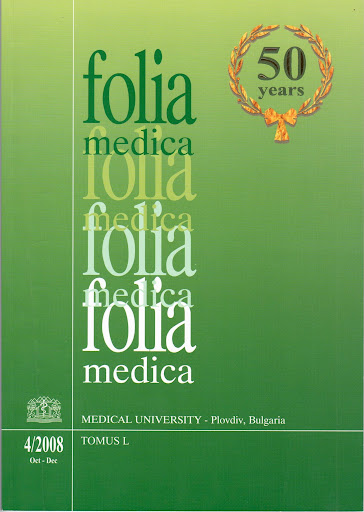
Experimental Study
The pectin-free fraction of Lycium barbarum, or goji berry, strongly inhibits growth in breast cancer cells, and this effect is enhanced by adding polysaccharides.
Georgiev KD, Slavov IJ, Iliev IA.

Experimental Study
The pectin-free fraction from Lycium barbarum fruit exhibits significant antioxidant activity and inhibits the growth of breast cancer cells.
Georgiev KD, Slavov IJ, Iliev IA

Systematic Review
Consumption of chocolate shows a possible slight reduction in risk for coronary heart disease and stroke, with no association with other chronic diseases studied.
Morze J, Schwedhelm C, Bencic A, Hoffmann G, Boeing H, Przybylowicz K, Schwingshackl L

Systematic Review
Bioactive compounds present in different parts of radishes, such as leaves, sprouts, stem and roots, act on a variety of potential drug targets associated with ailments, such as cancer, inflammation, liver injury and diabetes.
Abinaya ManivannanOrcID,Jin-Hee Kim,Do-Sun Kim,Eun-Su Lee andHye-Eun Lee
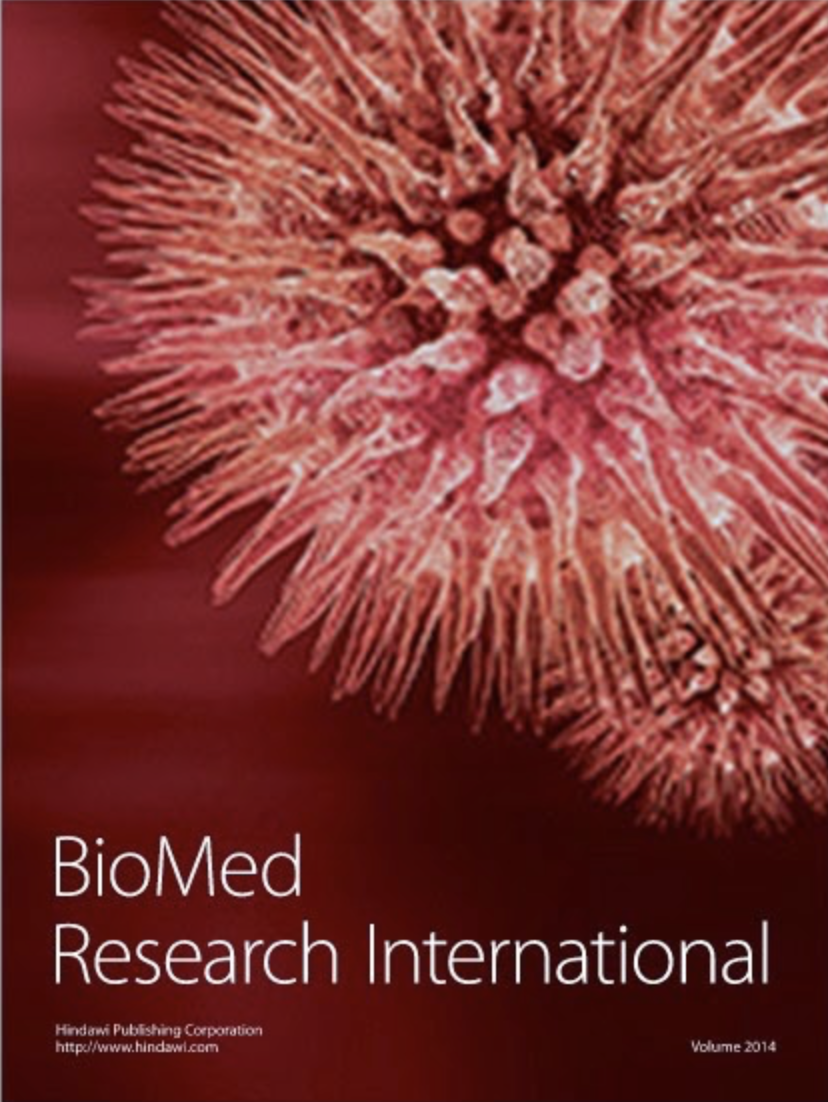
Systematic Review
Results from existing studies suggest that goji berry polysaccharide is a promising therapeutic agent, particularly in the management of liver disease, hyperlipidemia, and diabetes.
Kwok SS, Bu Y, Lo AC, Chan TC, So KF, Lai JS, Shih KC.

Systematic Review
Black pepper, beyond its culinary use, offers medicinal benefits like antimicrobial, antioxidant, anticancer, anti-diabetic, and anti-inflammatory properties mainly attributed to the compound piperine.
Takooree H, Aumeeruddy MZ, Rengasamy KRR, Venugopala KN, Jeewon R, Zengin G, Mahomoodally MF

Experimental Study
Lemongrass extract has potential as a supplement to chemotherapy, reducing colon cancer growth, enhancing treatment effectiveness, and mitigating side effects like weight loss.
Ruvinov I, Nguyen C, Scaria B, Vegh C, Zaitoon O, Baskaran K, Mehaidli A, Nunes M, Pandey S
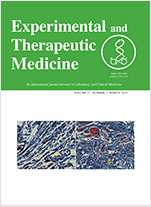
The polyphenol epigallocatechin-3-gallate (EGCG) inhibits the growth of cervical carcinoma cell lines potentially by altering the expression of micro-RNAs, indicating its potential as an anti-cervical cancer drug.
Zhu Y, Huang Y, Liu M, Yan Q, Zhao W, Yang P, Gao Q, Wei J, Zhao W, Ma L
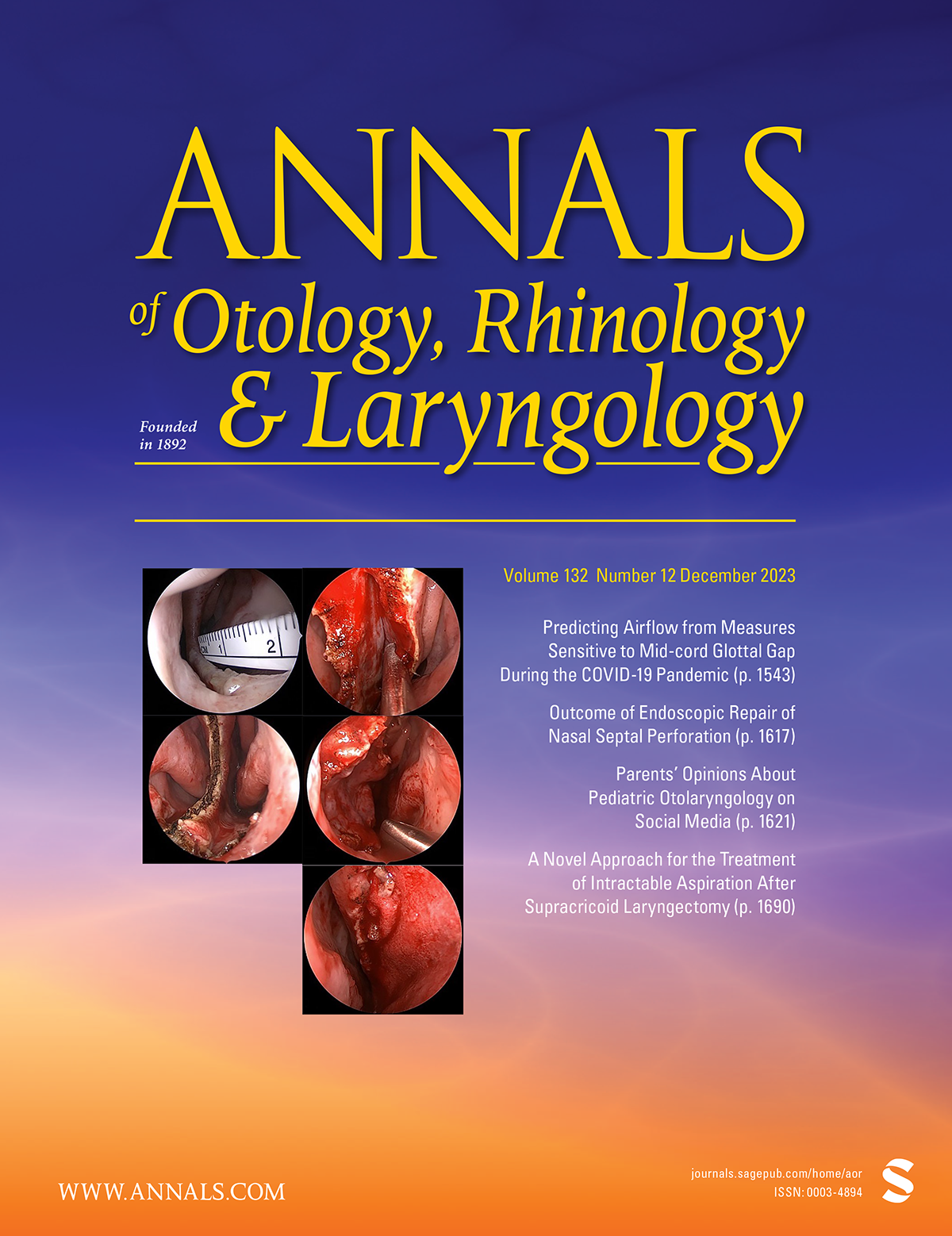
Review Article
Honey exhibits efficacy in otolaryngology, supported by high-quality evidence, particularly in preventing oral mucositis in cancer patients, alleviating pediatric cough, and managing post-tonsillectomy pain.
Tharakan T, Bent J, Tavaluc R
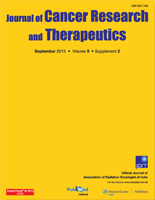
Systematic Review
The use of acupuncture as an adjunct to ameliorate hot flashes is still a relatively sound treatment for breast cancer patients.
Wang XP, Zhang DJ, Wei XD, Wang JP, Zhang DZ.

Review Article
(-)-Epigallocatechingallate (EGCG), a natural product, has potent anti-proliferation, anti-metastasis, and pro-apoptosis effects on cervical cancer cells, enhancing the effects of conventional drugs.
Wang YQ, Lu JL, Liang YR, Li QS

Meta-Analysis
Dietary carrot intake is associated with a decreased risk of breast cancer.
Chen H, Shao F, Zhang F, Miao Q

Experimental Study
Matcha green tea potentially inhibits the growth of breast cancer cells by disrupting metabolic action within the cells and reprogramming their activities.
Bonuccelli G, Sotgia F, Lisanti MP
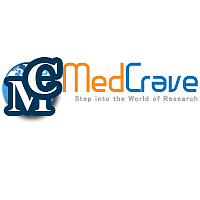
Systematic Review
Chili pepper has preventive and therapeutic properties for many ailments such as different types of cancer, rheumatism, stiff joints, bronchitis and chest colds with cough and headache, arthritis, heart arrhythmias and used as stomachic.
Saleh BK, Omer A, Teweldemedhin B.

Systematic Review
The biomarkers that were significantly different between black seeds and white sesame seeds are highly related to the functions recorded in traditional Chinese medicine.
Wang D, Zhang L, Huang X, Wang X, Yang R, Mao J, Wang X, Wang X, Zhang Q, Li P.
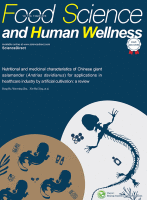
Systematic Review
The consumption of mung beans and sprouts in regular basis are not only providing nutrients, but also maintains the microbial flora in the gut, reduces the absorption of toxic compounds, decreases the menace of obesity, hypercholesterolemia, and cardiovascular diseases, and also prevents cancer and diabetes.
Kumar Ganesan, Bao junXu

Theoretical Article
Traditional Chinese medicines have shown promising benefits for prostate cancer treatment due to unique formulas, extracts, and compounds that exhibit anti-cancer effects.
Wang X, Fang G, Pang Y

Review Article
Honey, a natural food supplement, emerges as a potent therapeutic antioxidant with diverse medicinal effects, including wound healing, antibacterial, anti-inflammatory, antifungal, antiviral, and antidiabetic properties, suggesting its potential as a novel antioxidant in managing oxidative stress-related diseases.
Ahmed S, Sulaiman SA, Baig AA, Ibrahim M, Liaqat S, Fatima S, Jabeen S, Shamim N, Othman NH
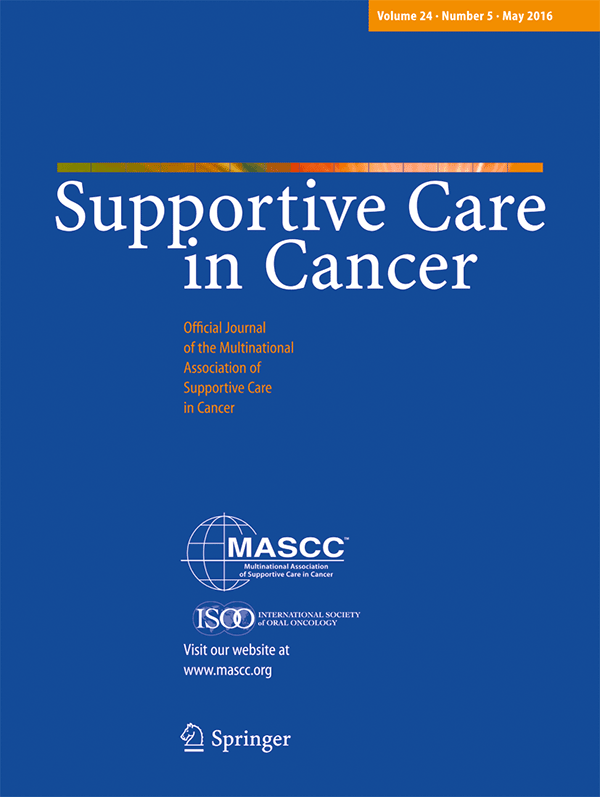
Meta-Analysis
Acupuncture significantly reduces cancer-related fatigue, especially in breast cancer patients and those undergoing anti-cancer treatment.
Zhang, Y., Lin, L., Li, H., Hu, Y., & Tian, L.
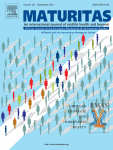
Practice Guideline
Long-chain omega-3 polyunsaturated fatty acids have various health benefits for postmenopausal women including reducing triglycerides and improving depression and psychotic symptoms.
Sánchez-Borrego R, von Schacky C, Osorio MJA, Llaneza P, Pinto X, Losa F, Navarro MC, Lubián D, Mendoza N
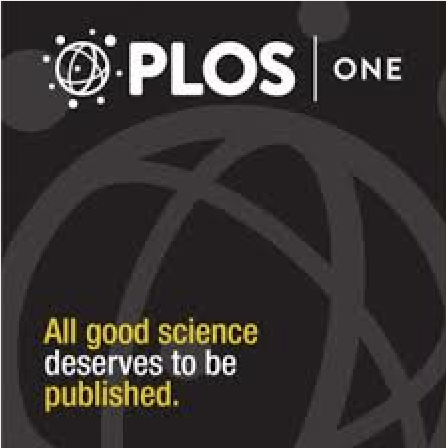
Systematic Review
Acupuncture is non-inferior to hormone therapy or other applied relaxation therapies in alleviating the symptoms of menopause for its safety, non-invasive and especially considering the side effect of hormone therapy.
Chien TJ, Hsu CH, Liu CY, Fang CJ.
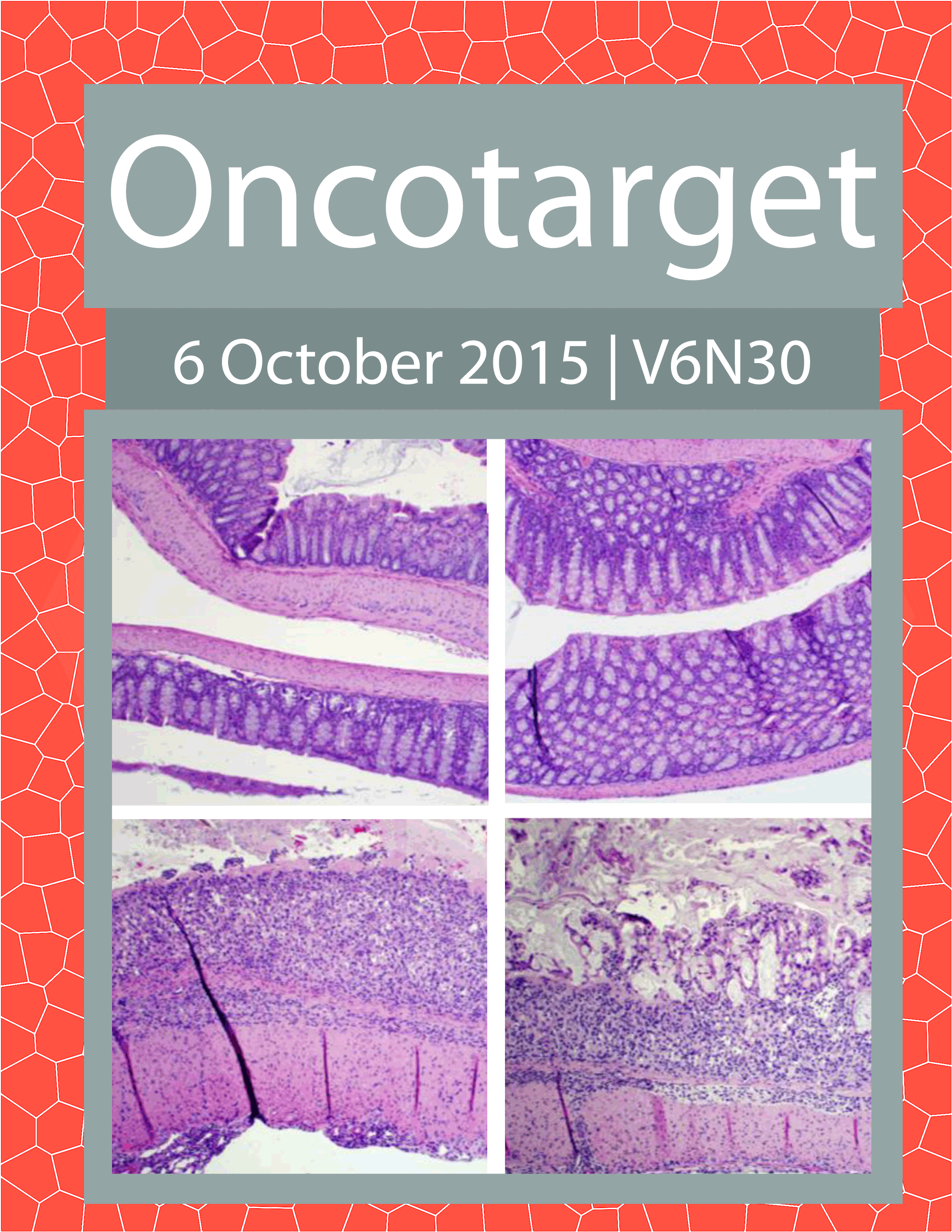
Systematic Review
High consumption of carrots is associated with a reduced risk of urothelial cancer.
Luo X, Lu H, Li Y, Wang S

Systematic Review
Tai Chi could be an effective alternative and/or complementary approach to existing therapies for people with fatigue.
Yu Xiang, Liming Lu, Xiankun Chen, Zehuai Wen

Animal Study
Blueberries can reduce the proliferation of ovarian cancer cells by downregulating the levels of specific biomarkers, exhibiting potential for non-pharmaceutical therapy.
Lin W, Li Z

Systematic Review
Acupuncture can be adopted as part of a multimodal approach for reducing cancer-related pain.
Chiu HY, Hsieh YJ, Tsai PS.
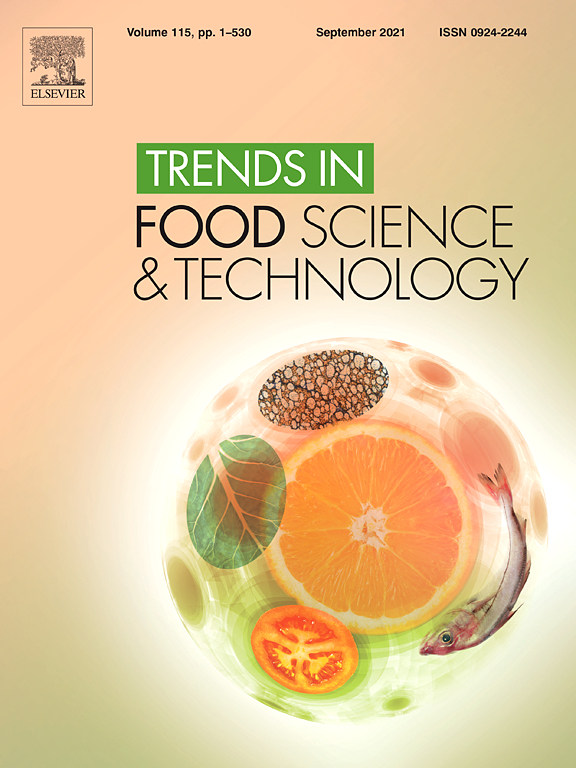
Review Article
The claimed health benefits of coix include anti-oxidation, anti-cancer, anti-inflammation, anti-allergy, enhancing immunological activity, regulating endocrine functions, anti-obesity, anti-diabetes, gastroprotection, hypolipidemia, and modulating gut microbiota.
Fan Zhu

The major bioactive polyphenol in green tea, EGCG, could potentially reverse the abnormal changes induced by oncogenic HPV strains.
Yap J, Luesley D, Woodman C, Dawson C

Review Article
Honeybee products like honey, propolis, and royal jelly have demonstrated potential benefits in treating metabolic diseases, cancers, and other illness types.
Pasupuleti VR, Sammugam L, Ramesh N, Gan SH

Systematic Review
The study's analysis of 272 articles comparing Traditional Chinese Acupuncture (TCA) and Sham Acupuncture (SA) for managing hot flashes in menopausal breast cancer patients indicates that while 3 studies leaned towards TCA's effectiveness, 2 showed both interventions to be beneficial.
Carlos, Luís et al.

Systematic Review
We found low-to moderate-quality evidence for the efficacy and safety of acupuncture for recovery after surgery in colorectal cancer patients.
Kim KH, Kim DH, Kim HY, Son GM.

Randomised Controlled Trial
The combination of traditional Chinese medicine and endocrine therapy may be more effective in slowing prostate cancer progression and increasing patients' survival time.
Cao H, Mu Y, Li X, Wang Y, Chen S, Liu J

Systematic Review
Acupuncture appears to be a potentially effective treatment for reducing hot flashes in women diagnosed with breast cancer.
Chen YP, Liu T, Peng YY, Wang YP, Chen H, Fan YF, Zhang L

Review Article
Previous records suggest pleiotropic pharmacological activities of capsaicin such as an analgesic, anti-obesity, anti-pruritic, anti-inflammatory, anti-apoptotic, anti-cancer, anti-oxidant, and neuro-protective functions. Emerging data indicate its clinical significance in treating vascular-related diseases, metabolic syndrome, and gastro-protective effects.
Basith S, Cui M, Hong S, Choi S
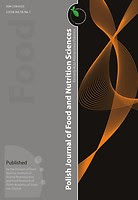
Review Article
Goji berries, classified as superfruits, possess potential beneficial implications in the dietary prevention of diseases like diabetes, cardiovascular diseases, and cancer.
Kulczyński B, Gramza-Michałowska A

Systematic Review
Acupuncture and related therapies are effective in reducing pain, fatigue, and in improving quality of life when compared with conventional intervention alone among cancer patients.
Lau CH, Wu X, Chung VC, Liu X, Hui EP, Cramer H, Lauche R, Wong SY, Lau AY, Sit RS, Ziea ET, Ng BF, Wu JC.

Systematic Review
Acupuncture may be used as a complementary therapy for breast cancer survivors experiencing hot flashes and other menopause-related symptoms.
Chiu, Hsiao-Yean; Shyu, Yuh-Kae; Chang, Pi-Chen, Tsai, Pei-Shan
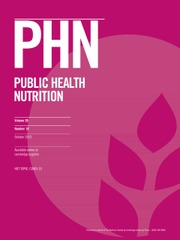
Systematic Review
Eating apples appears to be linked to a reduced risk of cancer in various parts of the body.
Fabiani R, Minelli L, Rosignoli P
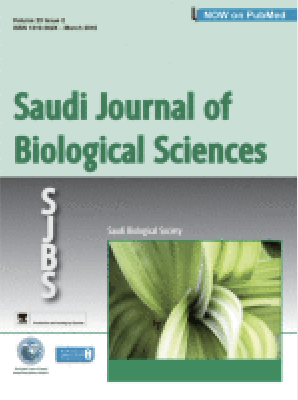
Coix extracts have anti-colorectal cancer potential.
Manosroi, A., Sainakham, M., Chankhampan, C., Manosroi, W., & Manosroi, J.
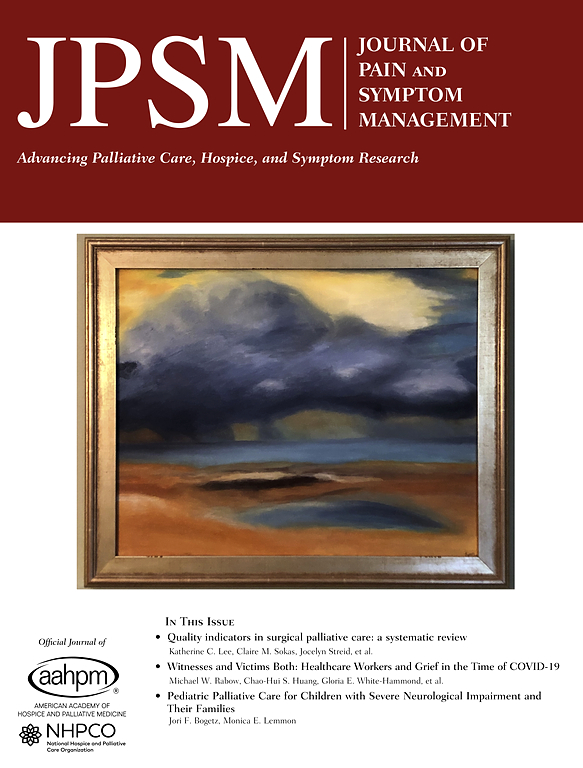
Systematic Review
A tentative conclusion can be reached that acupuncture, tuina, tai chi and qigong represent beneficial adjunctive therapies for cancer patients.
Wei-Wei Tao,Hua Jiang,Xiao-Mei Tao,Ping Jiang,Li-Yan Sha,Xian-Ce Sun

Systematic Review
There is a low level of evidence that acupuncture may be superior to sham acupuncture, drugs or hormone therapy for managing cancer-related insomnia.
Choi TY, Kim JI, Lim HJ, Lee MS.

Systematic Review
Traditional Chinese medicine psycho-behavioral interventions represent beneficial adjunctive therapies for cancer patients.
Tao W, Luo X, Cui B, Liang D, Wang C, Duan Y, Li X, Zhou S, Zhao M, Li Y, He Y, Wang S, Kelley KW, Jiang P, Liu Q.
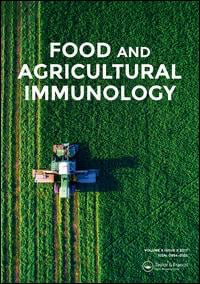
Review Article
Adzuki beans possessed strong ABTS free-radical-scavenging capacity and α-glucosidase inhibition activity.
Zhenxing Shi, Yang Yao, Yingying Zhu & Guixing Ren

Clinical Study
Pomegranate juice consumption slightly decreases estrone and testosterone levels in normal weight postmenopausal women.
Kapoor R, Ronnenberg A, Puleo E, Chatterton Jr. RT, Dorgan JF, Seeram NP, Sturgeon SR
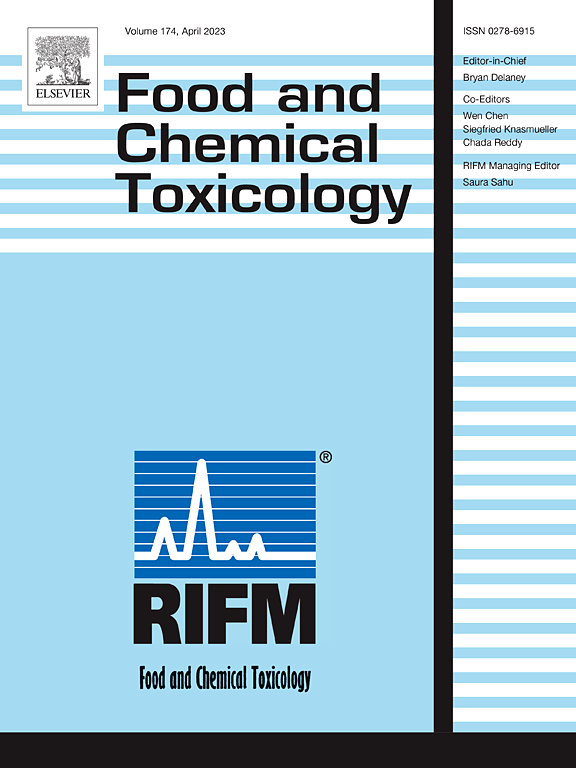
Randomised Controlled Trial
Green tea extract consumption can potentially cause mild adverse reactions, notably nausea, skin conditions, and increased alanine aminotransferase levels.
Dostal AM, Samavat H, Bedell S, Torkelson C, Wang R, Swenson K, Le C, Wu AH, Ursin G, Yuan JM, Kurzer MS

Review Article
Among the bioactive compounds present in jujube fruit, triterpenic acids and polysaccharides have antiproliferative and anticancer effects on various cancer cell lines.
Zoya Tahergorabi, Mohammad Reza Abedini, Moodi Mitra, Mohammad Hassanpour Fard, and Hossein Beydokhti

Randomised Controlled Trial
Bee pollen and honey may alleviate menopausal symptoms in breast cancer patients undergoing antihormonal treatment.
MÜNSTEDT KARSTEN, VOSS BENJAMIN, KULLMER UWE, SCHNEIDER URSULA, HÜBNER JUTTA
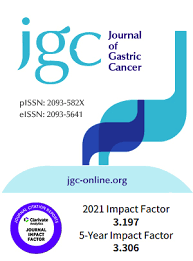
Systematic Review
Consuming carrots reduces the risk of gastric cancer by an indicated 26%.
Fallahzadeh H, Jalali A, Momayyezi M, Bazm S
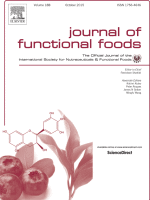
Systematic Review
The bioactive components and biological activities were superior for green (unripe) jujube fruit (as pulp and seed) compared to the ripe fruit.
Sirithon Siriamornpuna, NatthidaWeerapreeyaku, Sahapat Barusrux

Systematic Review
Regular carrot consumption could potentially reduce the risk of prostate cancer.
Xu X, Cheng Y, Li S, Zhu Y, Xu X, Zheng X, Mao Q, Xie L

Systematic Review
Acupuncture can be tried based on the available data in the treatment of xerostomia in cancer patients.
Hanchanale S, Adkinson L, Daniel S, Fleming M, Oxberry SG.
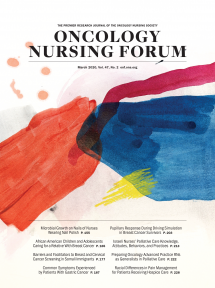
Systematic Review
Although results are inconclusive, acupuncture and acupressure tend to be effective in relieving cancer related fatigue, with the former producing a greater improvement.
Ling WM, Lui LY, So WK, Chan K.
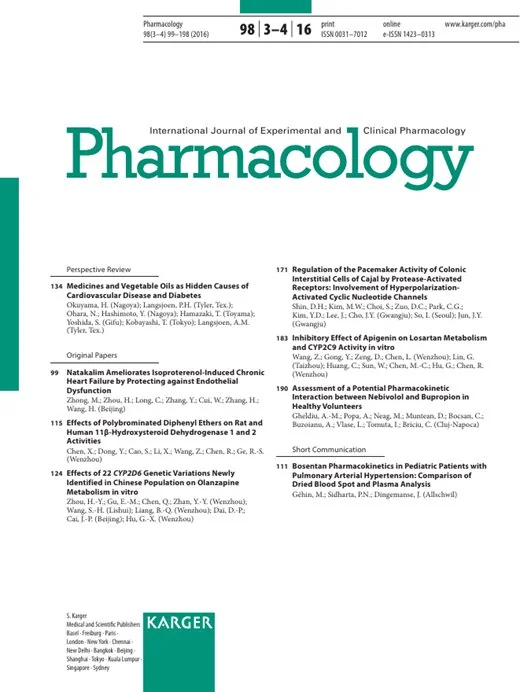
Systematic Review
Green tea polyphenols may enhance effectiveness of specific breast cancer endocrine treatments through both estrogen-dependent and -independent mechanisms.
Yiannakopoulou EC
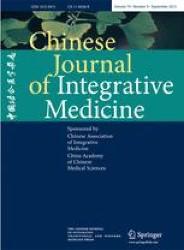
Systematic Review
Acupuncture shows promising evidence in cancer palliative care, particularly in reducing therapy-induced side effects and cancer pain.
Lian, WL., Pan, Mq., Zhou, Dh. & Zhang, ZJ.
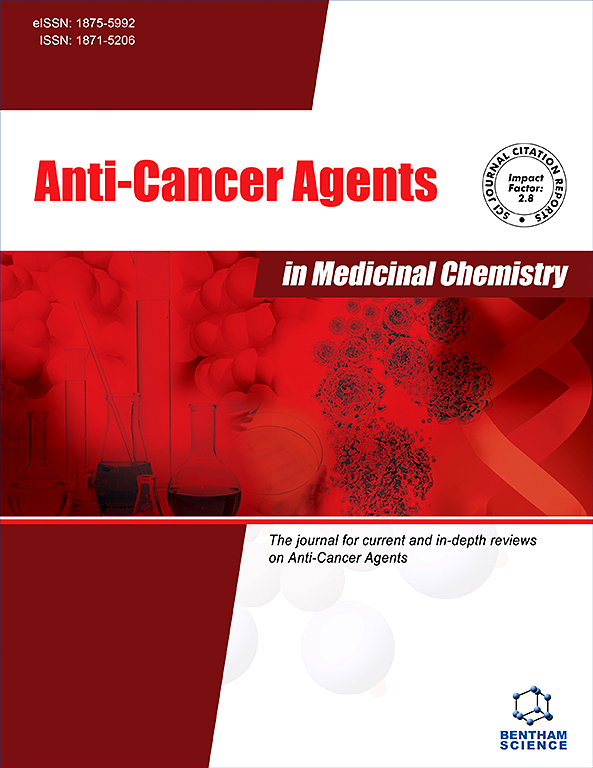
Review Article
Blueberries, due to their phenolic compounds, show potential as both dietary and supplemental anti-cancer agents by inhibiting cancer cell growth and promoting apoptosis.
Johnson S, Arjmandi B
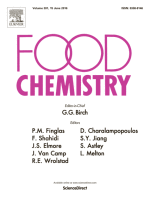
Experimental Study
Adzuki bean exhibited the strongest antiproliferative properties in a dose-dependent manner against all digestive system cancer cell lines, ovary cancer cell SK-OV-3 and breast cancer cell MCF-7 among all legumes tested.
Xu B, Chang SKC
Executive Summary
Write an executive summary in the form of a blog article on the topic of "Research into Chinese medicine treatment for Cancer" summarising the research below and using language that can be easily understood by patients and avoiding medical jargon using a professional and caring tone of voice.
Write an executive summary in the form of a blog article on the topic of "Researched Chinese medicine treatments for Cancer" summarising the research below in an objective and easy to understand way, and using language that can be easily understood by patients. Group the article into Chinese medicine treatments first, followed by nutrition and other treatments. Avoid using medical jargon and use a professional and caring tone of voice.
Write me a concise but easy to understand executive summary on the topic of "Chinese medicine treatments for Cancer" based on the following research that I will give you. Your summary should be 2 paragraphs long in Australian English spelling and include references to the studies.
A Review Article published in 2024 in the journal Life found that Pomegranate extract could potentially benefit women's reproductive health, enhance fertility, regulate menstrual cycles, support pregnancy, and help treat polycystic ovary syndrome. In establishing the potential benefits of pomegranate extract in women's reproductive health, a wide array of methods was employed. Primarily, these included in vitro studies, animal modeling and certain clinical trials. Analyses of the antioxidant properties of the extract were done to ascertain its effectiveness in reducing oxidative stress and consequently, improving fertility. The influence of pomegranate extract on hormonal imbalances and menstrual regulation was also studied. Discussions on the results emphasized the potential of pomegranate extract in supporting women's reproductive health. The extract was found beneficial in enhancing fertility, regulating menstruation and supporting pregnancy. Further, it could help in polycystic ovary syndrome therapy by improving insulin sensitivity and reducing oxidative damage. Its rich nutrient composition was appreciated for potentially fostering placental development and fetal growth, thus possibly mitigating the risk of early birth. Apart from reproductive health, some studies pointed towards pomegranate extract's potential anticancer properties, primarily against breast cancer.
A Animal Study published in 2024 in the journal Nutrients found that Manuka honey has demonstrated the potential to inhibit the proliferation of human breast cancer cells and stimulate apoptosis in these cells. In the experiment, Manuka honey was applied to three different types of cells: MCF-7 human breast cancer cells, MDA-MB-231 breast cancer cells, and non-malignant human mammary epithelial cells. The concentrations applied ranged from 0.3 to 5.0% to observe different effects. In addition to inhibiting cancer cell proliferation, the honey was tested for its ability to cause apoptosis (cell death) among the MCF-7 cells. It was also compared to the effects of tamoxifen, an antiestrogen medication used in breast cancer treatment. The results showed that Manuka honey was able to significantly inhibit the proliferation of MCF-7 cells, though its effects were less pronounced in the MDA-MB-231 breast cancer cells. The non-malignant cells were not affected. The honey's antitumor activity was comparable to that of tamoxifen. Moreover, Manuka honey stimulated apoptosis in the MCF-7 cells. It was also observed that the honey activated AMPK, which inhibits specific cellular growth signals, and reduced STAT3 levels, a protein often elevated in tumors.
A Review Article published in 2024 in the journal Nutrients found that Carrageenan, a common food additive, potentially exacerbates Inflammatory Bowel Disease (IBD) symptoms by altering gut microbiota, inducing intestinal permeability, and triggering inflammation. The study involved a comprehensive literature review, where the researchers carried out an in-depth analysis of past studies evaluating carrageenan's impact on gut health, particularly in relation to Inflammatory Bowel Disease (IBD). Using predefined search terms, they scoured medical and scientific databases, MEDLINE and SCOPUS. They considered research focusing on carrageenan's effect on the gut microbiota, intestinal permeability, inflammatory processes, its relationship with cancer, and its role as a food additive in the context of autoimmune diseases. The review divulged that degraded carrageenan, as used in animal studies, appeared to promote intestinal ulceration and inflammation, suggesting a potential risk in exacerbating IBD. Additionally, carrageenan also appeared to disrupt gut microbiota, reducing bacterial diversity therein, and increased intestinal permeability, which in turn could possibly contribute to 'leaky gut' syndrome. Interestingly, some studies suggested a possible anti-cancer effect, since carrageenan might inhibit the growth of cancer cells by affecting cell cycle progression. Besides, the additive seemed to elevate glucose intolerance and insulin resistance.
A Network Pharmacology published in 2024 in the journal Medicine found that Bruceolic oil emulsion, when combined with androgen antagonists, shows the greatest efficacy in treating prostate cancer amongst Chinese patent medicines. A Network Meta-analysis was conducted to review the safety and effectiveness of different Chinese patent medicines in treating prostate cancer. Various databases were systematically searched for randomized controlled trials of Chinese patent medicines until June 1, 2023. The risk of bias in the included studies was assessed using a tool specifically for randomized controlled trials. Main outcome indicators were how effective the medicine was, its impact on Prostate Specific Antigen, and any adverse reaction. Due to varying treatment durations across the studies, Bayesian mesh meta-regression was implemented to investigate the effects of these different courses on efficacy and safety. The meta-analysis considered 27 articles involving 1885 patients and nine types of Chinese patent medicine. The findings indicated that certain medicines, namely Bruceolic oil emulsion and Compound Kushen injection, showed significant advantages compared to androgen antagonists regarding efficacy and Prostate Specific Antigen level reduction. However, no significant difference was found among all the Chinese patent medicines in terms of adverse reactions. With these findings, it was deduced that the effectiveness of Chinese patent medicines isn't greatly impacted by the duration of treatment and dosage. Overall, the combination of Bruceolic oil emulsion and androgen antagonist emerged as a promising intervention measure.
A Systematic Review published in 2024 in the journal Phytotherapy Research found that Noni fruit and its compounds demonstrate significant potential in cancer therapy by inducing apoptosis, arresting cell cycle, inhibiting angiogenesis, and modulating immune system. In this study, a systematic review was put forth to scrutinize the therapeutic effectiveness of Morinda citrifolia L., commonly known as Noni, specifically looking into its effects on various forms of cancer. The review employed an extensive search of various scientific databases to gather relevant literature. This included both in vitro and in vivo studies, as well as clinical trials, specifically focusing on the outcomes of Noni fruit and its phytoconstituents - anthraquinones, flavonoids, sugar derivatives, and neolignans - on cancer. A carefully structured keyword and criteria search ensured a robust collection and analysis of data. The plethora of studies compiled point out to Noni's complex role in cancer therapy, underlining its various bioactive elements and their methods of activity. Significant anticancer and chemopreventive potential of Noni was observed, establishing it as potentially a safe and effective option in cancer prevention and treatment.
A Review Article published in 2024 in the journal The Natural Products Journal found that Pumpkin seeds are recognised for their medicinal, nutritional, and cosmetic benefits, including anti-diabetic, heart disease prevention, anti-cancer, and antioxidant qualities. The review article undertakes a comprehensive exploration of the nutraceutical importance of pumpkin seeds. The methodology includes an examination of the various known substances in the seeds, such as phytoestrogens, unsaturated fatty acids, and vitamin E. The study then delves into the different benefits and therapeutic uses of these components stretching from medicinal to nutritional to cosmetic applications. The results of this research are diverse and impressive, with implications for several major health sectors. Their potential anti-diabetic and hypoglycemic properties could suggest a significant role in the management and prevention of diabetes. Meanwhile, the seeds' potential in cardiovascular disease prevention could help to address one of the most pressing global health issues. Moreover, potential anti-cancer properties imply that these seeds could even have a part to play in cancer prevention. The review also described potential additional qualities, such as antidepressant, anti-helminthic (parasite-removing), and antioxidant effects.
A Meta-Analysis published in 2024 in the journal Integrative Cancer Therapies found that Adding Compound Kushen Injection (CKI), a traditional Chinese medicine, to chemotherapy treatment enhanced treatment response and reduced side effects in advanced colorectal cancer patients. This study systematically collected data from a myriad of sources including, but not limited to, PubMed, the Cochrane Library, and ClinicalTrials.gov up to April 20, 2024. An assessment tool, ROB2, was used to measure the quality of the included trials, while data analysis was done using Stata 16. Publication bias was evaluated with the funnel plot and Egger's test. To calculate the final required sample size in this meta-analysis and verify whether the results presented a stable conclusion, trial sequential analysis was used. The data collected from these sixteen trials, consisting of 1378 patients showcased that when compared to chemotherapy alone, the combination of CKI and chemotherapy resulted in improved response rates and enhancement of the patient's performance status. Furthermore, this combination therapy was associated with fewer adverse reactions like leukopenia, thrombocytopenia, gastrointestinal reactions, and liver damage. Patients also exhibited high CD4 ratios and comparatively low CD8 T cell ratios. A subgroup analysis further demonstrated that the response rates improved significantly when CKI was combined with specific chemotherapy regimens. Overall, this data strongly suggests that the addition of CKI to chemotherapy provided statistically significant and clinically relevant improvements in treatment response rates, patient wellbeing, reduction in adverse reactions, and enhanced immune function.
A Meta-Analysis published in 2023 in the journal Critical Reviews in Food Science and Nutrition found that Consuming carrots can significantly decrease the risk of cancer. The methodology used in this research involved examining the links between carrot intake and the incidence of cancer. The scope was broad, examining all studies published before June 2022 that offered risk estimates connecting cancer incidence with either carrot consumption, α-carotene intake, or α-carotene plasma levels. Possible sources of such studies included those found via digital searches, manually identified within other studies, or garnered from existing reviews. Analysis was carried out comparing the highest and lowest reported intakes from prospective studies, estimating summary relative risks using a random-effects model. The study's results indicated a strong correlation between carrot consumption and a notable reduction in cancer risk. This conclusion was derived from the analysis of 198 observational studies, 50 of which were prospective studies involving a total of 52,000 cases that specifically recorded carrot intake. Comparatively, on the correlation between α-carotene plasma levels and cancer risk, analysis from 30 prospective studies with 9,331 cases indicated that a higher presence of α-carotene also resulted in decreased cancer risk. Despite a moderate variance between studies, these findings serve as significant evidence in support of the anticancer benefits of carrots.
A Review Article published in 2023 in the journal Molecules found that Bee pollen showcases a range of biological activities, such as anti-inflammatory, antimicrobial, and potential antiviral properties, which could contribute to the creation of innovative therapies. The methodology used in the study involved analysing a diverse array of pollen types, in combination with their various chemical compositions. The primary aim of this was to updatedly assess the bioactive constituents present in bee pollen and consider the therapeutic possibilities they present. A focus of the study was on beehive pollen since it is a rich natural source of proteins and nutrients and exhibits immense chemical and therapeutic potential. Discussion of results emphasized that the range of biological activities associated with bee pollen is truly remarkable. This activity ranges from anti-inflammatory and antimicrobial properties to potential antiviral and anticancer applications. Despite the challenge presented in fully understanding the vast array of biological properties across various pollen sources, this study has succeeded in emphasizing the potential extent of the therapeutic effectiveness of bee pollen. Its potential contribution on the path to discovering innovative therapies cannot be underestimated.
A Review Article published in 2023 in the journal Nutrire found that Almond consumption has beneficial impacts on cardiovascular diseases, diabetes, obesity, and it can improve cognitive performance and protect against skin aging. The methodology employed in this study included analyzing a range of clinical studies centered on the health benefits linked to the consumption of sweet almond nuts. Various health outcomes correlated with almond consumption were investigated such as body weight, food intake, blood pressure, blood lipid composition, glucose and insulin levels, oxidative status, liver enzymes, and some inflammation biomarkers. The discussion of the results reveals that almond consumption has been found to create favorable alteration in aspects like body weight, food intake, blood pressure, blood lipid composition, glucose, and insulin levels, as well as oxidative status, liver enzymes, and inflammation biomarkers. These findings highlight the beneficial impact of almonds on multiple health issues including cardiovascular diseases, diabetes, and obesity. Additionally, the consumption of almonds has been associated with improved cognitive performance and protection against skin photodamage and aging.
A Review Article published in 2023 in the journal Chinese Herbal Medicines found that Chinese herbal medicines (CHMs) possess multiple advantages, including multiple targets, pathways, and low toxicity, for the treatment of prostate cancer. The research team undertook an in-depth review of experimental research and clinical practices related to the use of CHMs for prostate cancer treatment, with the data being sourced from PubMed, Embase, and Web of Science. The focus of the review was on recent studies published within the last five years. The research identified five CHM formulas and six single CHM extracts, along with 12 CHM-derived compounds. The research findings demonstrated that CHMs induced apoptosis, autophagy, and cell cycle arrest in prostate cancer cells, and concurrently suppressed angiogenesis, proliferation, and cell migration. The CHMs also displayed efficacy in overturning drug resistance and in enhancing anti-tumor immunity. The modes of action were identified as the phosphatidylinositol 3-kinase/protein kinase-B/mammalian target of rapamycin, androgen receptor, epidermal growth factor receptor, and Wnt/beta-catenin signaling pathways which are known to play key roles in the development of prostate cancer. Additionally, the researchers discussed the benefits of CHMs in treating hormone-sensitive and castration-resistant prostate cancer.
A Review Article published in 2023 in the journal Food Chemistry Advances found that Pomegranate and its by-products, particularly the peel, contain bioactive compounds with potential antimicrobial, anticancer and antiviral properties. In the methodological approach of the study, a comprehensive review was undertaken to collate information on the bioactive components found within pomegranates and their by-products (aril, seed, and peel). The study emphasized the pomegranate peel's properties owing to its high content of the bioactive compounds. The aim was to elucidate the nutritional and functional aspects of pomegranates, particularly as a functional food. The results outlined that pomegranates, especially their peel, contain bioactive compounds, including punicalagin, punicalin, ellagic acid, punicic acid, and anthocyanins. Therefore, they have potential functional properties such as antimicrobial, anticancer, and antiviral characteristics. These results suggest that pomegranates could be explored to develop nutraceutical or functional food products due to their profound properties. The peel of the pomegranate, specifically, showcases significant potential for development due to its higher bioactive compound content compared to other parts of the fruit.
A Review Article published in 2023 in the journal PharmaNutrition found that Soy protein, bioactive peptides, and isoflavones are generally safe for consumption and may help reduce the risk of several significant health conditions. Methodology: This review followed the Preferred Reporting Items for Systematic reviews and Meta-Analyses guidelines. It began with a sophisticated multi-database search, featuring resources like Google Scholar, Scopus, and others. This search targeted articles published from 2017 to March 2023 and used specific keywords for accuracy. Forty-three articles were handpicked from this process after excluding reviews, conference reports, duplicates, inaccessible texts, and any non-English publications. Discussion of Results: A thorough examination of the chosen articles resulted in the conclusion that soy proteins, soy bioactive peptides, and soy isoflavones are typically safe for human consumption. Furthermore, it was found that the consumption of these compounds may have beneficial effects, potentially lowering risk factors for ailments such as osteoporosis, various cancers, hypertension, atherosclerosis, and more.
A Review Article published in 2023 in the journal Journal of Microbiology and Biotechnology found that Soybean intake can potentially reduce risks of several cancers, type 2 diabetes, osteoporosis, and hot flashes, and it may negatively impact some drug treatments and cause allergies. This research primarily involves review and analysis of current clinical studies focusing on the benefits and risks of soybean ingredients. The method appears to be a systematic review of various epidemiological studies which were investigating the correlation between soybean consumption and the risk of developing multiple types of cancers including breast, prostate, colorectal, ovarian, and lung cancers. Besides cancer, other common diseases such as type 2 diabetes, osteoporosis, and menopausal symptoms like hot flashes were also investigated. Moreover, any potential adverse effects of soybean, including its possible detrimental impact on certain drug treatments and its allergenicity, were also factors of study in these clinical evidences. In the discussion of results, the researchers found a significant inverse association between soybean intake and cancer risks, wherein an increase in the consumption of soybean foods was associated with a reduced likelihood of cancer. Besides showing potential anticancer properties, soybean consumption was found inversely correlated with risks of type 2 diabetes. Soy isoflavones, compounds present in soybeans, also showed potential benefits in the management of osteoporosis and hot flashes. On the other hand, the adverse effects of soybean, including interference with certain drug therapies and causing allergies, were also duly noted. Therefore, the research concludes that while soybean promises several significant health benefits, caution should be exercised for individuals under specific drug treatments or with allergies to soy.
A Review Article published in 2023 in the journal International Journal of Food Properties found that Plums, which are rich in bioactive compounds, antioxidants, and vitamins, can help maintain blood glucose level, bone health, heart health and even treat certain cancers. The research explored the health benefits and medicinal effects of plums, a common fruit belonging to the Prunus genus. The study focused not only on their consumption as a food source but also their uses in beverages. Special attention was given to the polyphenolic compounds, bioactive compounds, and antioxidants inherent in plums, such as phenolic acids, anthocyanins, carotenoids, and various organic acids, alongside an array of necessary minerals and vitamins. Apart from detailing traditional nutritional components, the study analyzed the unique constituents of plums like caffeic acid, chlorogenic acid and other phenolic compounds which contribute to its antioxidant property. The broader health benefits provided by these compounds spanning bone health, cardiovascular health, blood glucose stabilization, and potential impacts on gastrointestinal diseases were studied, with a particular emphasis on their possible role in the prevention and treatment of heart disease and specific kinds of cancer: lung and oral. The role of plums' low fat and high dietary fibre content in heart disease prevention was of special focus.
A Network Pharmacology published in 2023 in the journal Journal of Ethnopharmacology found that Gold kiwifruit extracts contained different bioactive materials which showed selective cytotoxic activity against human oral tumor cells and displayed anti-HIV, antioxidant, and antibacterial activities. The methodology involved stepwise extraction of gold kiwifruit with hexane, acetone, methanol, and 70% methanol; the extracts were then fractionated using silica gel and ODS column chromatographies to examine their biological activities. Different fractions like H1, H2 (from the hexane extract), A1, A2 (from the acetone extract), and M2 (from the methanol extract) were tested, as well as more hydrophilic fractions from the 70% methanol extract. In the discussion of the results, fractions H1, H2, A1, A2 and M2 displayed notable cytotoxic activity against human oral tumor cell lines, with these showing more sensitivity compared to human gingival fibroblasts. The hydrophilic fractions from the 70% methanol extract demonstrated higher anti-HIV activity, radical generation, and oxygen scavenging activity. However, the antibacterial activity of these fractions was generally lower than that of the more lipophilic (hexane, acetone, methanol) extracts, indicating no distinct antimicrobial action. Interestingly, all fractions were inactive against Helicobacter pylori.
A Review Article published in 2023 in the journal PeerJ found that Crocin, a compound derived from saffron, has shown considerable potential in hindering tumor growth and improving immune status, across various malignant tumors. The methodology for the study involved an in-depth review of modern pharmacological studies that have analyzed the therapeutic effects of crocin, a natural compound that can be extracted from saffron. Various anti-tumor effects were assessed including the induction of tumor cell death (apoptosis), restrictions on tumor cell proliferation, and potential barriers to invasion and metastasis of these cells. The potential for enhancement of sensitivity to chemotherapy and improvement of immune status were also examined. Following the review, the study revealed that crocin has significant anti-tumor properties. It showed that this natural compound can induce apoptosis in tumor cells, inhibit their expansion and progression, and even prevent their invasiveness and metastasis. Furthermore, crocin demonstrated the potential to enhance the body’s responsiveness to chemotherapy and help boost the immune system. These effects were observed across a range of different malignant tumors, including stomach, liver, cervical, breast, and colorectal cancers.
A Review Article published in 2023 in the journal Food Science & Nutrition found that Eating apples and apple products can enhance health by protecting the cardiovascular system, combating cancer and cognitive impairment, and improving hair growth, among other beneficial effects. The study took a comprehensive approach to evaluate the health benefits of apples and apple products by conducting a literature review of relevant clinical, epidemiological, in vitro, and in vivo studies. It involved an exhaustive search of the PubMed database for a ten-year period, sourcing studies that reported on the effects of different apple products: juices, purees, pomaces, dried apples, and extracts rich in apple bioactives. The findings indicate that the consumption of apples and their derivations contributes to multiple aspects of human health. These products exhibited a range of protective effects against diseases such as cardiovascular conditions and cancer. Moreover, they were associated with enhanced cognitive function, facilitated hair growth, the healing of burn wounds, and improved oral health. The use of apples and apple-based products also helped to reduce UV-induced skin pigmentation, alleviated the symptoms of atopic dermatitis and cedar hay fever, and even prevented skin flushing caused by niacin. The beneficial impacts of apple consumption can be attributed to a variety of mechanisms including, but not limited to, vascular endothelial protection, blood lipid regulation, anti-inflammatory and antioxidant effects, as well as anti-invasion and antimetastatic tendencies. These results provide a significant reference point for various fields, including medicine and nutrition, contributing to their development and application.
A Systematic Review published in 2023 in the journal Annals of Medicine found that Consuming dairy products might reduce the risk of developing breast cancer. The researchers conducted a systematic literature review where they scrutinized various databases for studies published in English up to January 2022. They began with 82 articles, but only 18 met their pre-set inclusion criteria. The studies varied in type - nine were prospective, seven were retrospective, and two were cross-sectional. The results indicated an inverse relationship between dairy consumption and the risk of developing breast cancer. However, the effect of different types of dairy products and the exact dose-response relationships on breast cancer risk remains unclear. Nevertheless, this review provides a foundation for considering dairy products in preventive strategies to reduce breast cancer occurrence.
A Experimental Study published in 2023 in the journal Molecules found that The anthocyanins from the Gardenblue variety of blueberries exhibit strong antiproliferative effects on various cancer cells, especially liver cancer cells. 65 varieties of blueberries were collected, focusing on their nutritional and functional values. Among these, the Gardenblue variety showed the highest anthocyanin content in fresh fruit. This content was further increased through the process of ultrasound-assisted solvent extraction and macroporous resin absorption, transforming it into a dried powder. Biological experiments were then conducted to determine the antiproliferative effects of Gardenblue anthocyanins on various cancer cell strains, such as cervical, liver, breast, and lung cells. Furthermore, these anthocyanins were combined with the chemotherapy drugs, cisplatin and doxorubicin, to assess any potential enhanced antiproliferative effects. The research results confirmed that Gardenblue anthocyanins exert a substantial antiproliferative effect on multiple cancer cell types, particularly hepatoma or liver cancer cells. These anthocyanins displayed no evident toxic effects, as measured by the MTT assay, a laboratory colorimetric technique. Notably, the antiproliferative benefits were amplified when the anthocyanins were combined with doxorubicin, a treatment for liver cancer. Analysis suggests that the anthocyanins might induce cell apoptosis (cell death) by bonding with DNA in a manner that modifies or damages the DNA, thus preventing cell proliferation. This suggests potential application of Gardenblue anthocyanin extract as a functional agent against liver cancer cells.
A Case Report published in 2023 in the journal Journal of Personalized Medicine found that The combination of epigallocatechin gallate, vitamin B12, folic acid, and hyaluronic acid could effectively counter precancerous lesions of the uterine cervix caused by HPV infections. The methodology used in this research centred around treating a 39-year-old patient who had a history of HPV, cervix lesions, and multiple failed surgical attempts to treat the condition. The treatment plan applied was unique, utilizing a blend of epigallocatechin gallate, vitamin B12, folic acid, and hyaluronic acid, administered over an eight week period. The results showed promising effects, with the patient's histological and cytological analyses revealing only a chronic cervicitis instead of any malignant lesions or cellular dysplasia. Therefore, the necessity for invasive total hysterectomy was minimized, demonstrating the potential for the selected treatment plan to manage precancerous lesions of the uterine cervix.
A Clinical Study published in 2023 in the journal Antioxidants found that Preclinical studies related to osteoporosis have reported favorable effects of honey on cortical and trabecular bone microstructure, bone strength, and oxidative stress. Honey is able to protect the bone mainly due to antioxidant and anti-inflammatory properties, primarily through its content of polyphenols, which act on several signaling pathways, resulting in anabolic and antiresorptive effects. From the group of polyphenols, the anti-osteoporotic impact of quercetin, kaempferol, and luteolin was recorded. In addition, vitamin D3 and its hydroxyderivatives with antioxidant properties were also detected in honey. Vitamin D3 supplementation was found to have protective effects on the inhibition of bone loss and BMD in both experimental animals and postmenopausal women.
A Clinical Study published in 2023 in the journal Antioxidants found that Clinical studies related to breast cancer have revealed that honey is effective in increasing blood cell counts, interleukin-3 levels, and quality of life. In relation to breast cancer, in vitro experiments revealed the anti-proliferative and pro-apoptotic impact of honey on breast cancer cells, as well as their increased apoptosis. Animal studies have shown that honey reduces the number, growth rate, volume, and tumor weight. Findings from clinical trials reported its immunomodulatory properties showing that honey is effective in increasing leukocyte and platelet counts, IL-3 levels, and quality of life. In this context, the potential role of honey and its oligosaccharides as prebiotics for specific beneficial bacteria might be examined in future clinical studies.
A Systematic Review published in 2023 in the journal Frontiers in Psychiatry found that Acupuncture, especially TEAS, is safer and more effective than medication for improving sleep quality in cancer related insomnia Acupuncture methods like transcutaneous electrical acupuncture stimulation (TEAS) and acupuncture+moxibustion were better for sleep than medication. Acupuncture had fewer side effects than medication with positive impact on canner-related insomnia linked to factors like melatonin regulation. Amongst all treatment types, TEAS was probably the more effective.
A Systematic Review published in 2023 in the journal Frontiers in Psychiatry found that Acupuncture and Moxibustion Show Promise for Chronic Renal Insufficiency Acupuncture and moxibustion emerge as effective and safe interventions for chronic renal insufficiency, with Transcutaneous Electrical Acupuncture Stimulation showing the highest potential for efficacy.
A Cohort Study published in 2023 in the journal Nutrients found that Regular consumption of raw carrots is associated with a significant, dose-dependent reduction in lung cancer incidence, suggesting a potential cancer-protective effect attributed to polyacetylenic compounds, particularly falcarinol and falcarindiol, present in raw carrots. This research involved a long-term study of 55,756 Danish citizens over a period of more than 25 years. The focus was on investigating the relationship between regular consumption of raw carrots and the development of various cancers, predominantly adenocarcinomas and leukemia. The study assessed whether the frequency of carrot consumption influenced the incidence of lung, pancreatic, breast, prostate cancer, and leukemia. Additionally, it compared the effects of eating raw versus processed carrots. The study found that eating raw carrots regularly was associated with a reduced occurrence of lung cancer. This link was less clear for pancreatic cancer and non-existent for breast and prostate cancer. The research suggested that the cancer-preventive properties of raw carrots could be attributed to specific compounds, namely falcarinol and falcarindiol. These compounds are not present in cooked carrots. This significant finding points towards the potential of raw carrots in cancer prevention, particularly for lung cancer.
A Review Article published in 2023 in the journal Journal of the Science of Food and Agriculture found that Carrot and carotene consumption could diminish the risk of a wide range of negative health consequences, including multiple types of cancer. An umbrella review methodology was adopted to identify connections between carrot and carotene intake and various health outcomes. We turned to databases such as Web of Science, PubMed, and Embase to find the needed data. The analysis included the collected evidence from both interventional and observational studies that focused on carrots, carotene, and any related health impact. To estimate the summary effect size for each correlation, both random and fixed effects models were employed. The study reviewed a total of 1329 studies and utilized the data from 30 meta-analyses with 26 health outcomes that fit the eligibility requirements. These featured outcomes related to various types of cancer, fractures, age-related cataract, sunburn, and Alzheimer's disease. The associations were analyzed between the health outcomes and the intake of carrots, intake of carotene, and serum carotene levels.
A Systematic Review published in 2023 in the journal SSRN Electronic Journal found that Carrot consumption, beyond its β- and α-carotene content, significantly reduces cancer risk, highlighting polyacetylenes as potential anti-cancer agents, urging active promotion of carrot intake. The study conducted a comprehensive search across various databases for studies published until June 9, 2022, exploring the relationship between carrot intake, α-carotene intake, α-carotene plasma concentration, and cancer incidence. Involving 198 observational studies, the systematic review identified 50 prospective studies (52,000 cases) linking carrot intake (directly or as α-carotene) to a substantial reduction in cancer risk (RR 0.90, 95% CI 0.87–0.94, P < 0.0001). Additionally, 30 prospective studies (91,331 cases) examining plasma α-carotene levels revealed a similarly significant risk reduction (RR 0.80, 95% CI 0.72–0.89, P < 0.0001), with moderate inter-study heterogeneity (I2 = 36% and 26%) and nonsignificant interaction with cancer types. The findings emphasize the robust association between carrot consumption and decreased cancer risk, urging active encouragement of carrot intake. While α-carotene was used as a marker, the study suggests the need for further investigations into non-carotene-focused hypotheses to understand the underlying mechanisms of this association.
A Network Pharmacology published in 2022 in the journal Frontiers in Immunology found that Manuka honey exhibits a dual role in immune modulation, triggering a pro-inflammatory response by elevating cytokine expression and neutrophil recruitment via TLR signaling, while also influencing the phenotypic and functional maturation of macrophages. In vitro experiments using RAW 264.7 macrophages demonstrated that 1% Manuka honey significantly upregulated the expression and secretion of pro-inflammatory cytokines, including TNF-α, IL-1β, IL-6, and iNOS, as well as chemokines such as CXCL2 and CCL2. In vivo studies with C57BL/6 mice revealed a robust peritoneal response characterized by increased neutrophil recruitment and phenotypic changes in peritoneal macrophages after intraperitoneal administration of Manuka honey. Notably, this response persisted in TLR4-defective mice, suggesting independence from TLR4 and ruling out LPS contamination. However, the dependence on MyD88 protein, a crucial adaptor in TLR signaling, was evident, shedding light on the immunostimulatory properties of Manuka honey and its potential as an immunomodulatory agent in diverse disorders. The study delineates Manuka honey's immunomodulatory actions, showcasing its pro-inflammatory impact through cytokine release and neutrophil recruitment, independent of TLR4 but reliant on MyD88 signaling. Additionally, the observed phenotypic alterations in macrophages underscore the potential utility of Manuka honey as an immunomodulatory agent across various health conditions, offering insights into its complex yet promising role in immune regulation.
A Systematic Review published in 2022 in the journal Phytomedicine found that Acupuncture shows positive effects on cancer-related issues; research calls for further exploration of acupuncture's efficacy and safety, especially for conditions like depression, offering further potential support for cancer survivors This review summarizes evidence from 51 systematic reviews on acupuncture for cancer-related conditions. Acupuncture was found to have positive effects on various conditions such as cancer-related pain, fatigue, insomnia, nausea, and more. The methodological quality of the reviews was generally low, and some biases were identified. Acupuncture was considered safe, with only mild adverse events reported. In clinical practice, acupuncture can be a beneficial option for cancer survivors for certain conditions.
A Experimental Study published in 2022 in the journal Plants found that Broccoli sprouts may reduce the viability of thyroid cancer cells and prevent inflammation, demonstrating a promising safety profile for normal thyroid function. The methodology of the study involved two models - in vitro and in vivo. The in vitro model involved evaluating the impact of broccoli sprouts on normal and neoplastic thyroid cells and determining their anti-inflammatory and antioxidant potentials in macrophages. The in vivo model involved analyzing the thyroid glands of healthy and hypothyroid rats (induced by iodine deficiency or sulfadimethoxine ingestion) that were fed with broccoli sprouts. The results of the study showed that broccoli sprouts effectively decreased the viability of thyroid cancer cells and forestalled inflammation. Further, regardless of the condition in vitro and in vivo, the results confirmed a satisfactory safety profile of broccoli sprouts. The research concluded that understanding the influence of brassica vegetables like broccoli sprouts on thyroid function carries significant public health implications considering the increasing risk of iodine deficiency, hypothyroidism, and thyroid cancer worldwide.
A Review Article published in 2022 in the journal International Journal of Molecular Sciences found that Compounds found in green tea, especially EGCG, show significant anti-cancer activity and hold promise as potential anticancer drugs or adjuvants to standard chemotherapy. The study used a combination of epidemiological and laboratory studies to examine the effects of catechins in green tea on combating cancer. The researchers focused their attention on the four main catechin derivatives found in green tea: epicatechin, epigallocatechin, epicatechin gallate, and epigallocatechin gallate—the latter found to be most potent. Attention was given to the quantity of hydroxyl groups and the presence of certain structural groups in these compounds, and how these factors affected antioxidant activity. The study centered around the effects of catechins on tumor survival, proliferation, invasion, angiogenesis, and metastasis. By doing this, the researchers could observe the influence of the identified compounds on the various processes that lead to the development and spread of cancer. The main point of observation was the capacity of catechins to neutralize reactive oxygen species, a key facet in their anti-cancer activity.
A Clinical Study published in 2022 in the journal Phytomedicine found that Acupuncture has shown potential in enhancing structural nerve regeneration in Chemotherapy-induced peripheral neuropathy, leading to subjective improvements and positive neurological findings. This research was conducted at the HanseMerkur Center for TCM at the University Medical Center, Hamburg-Eppendorf. Sixty patients who had been diagnosed with Chemotherapy-induced peripheral neuropathy underwent acupuncture treatment. Patients were selected based on physical examinations, subjective and quantitative evaluations conducted using nerve conduction studies. They were then randomly divided into two groups. The first group received a ten-week acupuncture treatment while the latter was put on a waiting list. After fourteen weeks, evaluations were carried out on both groups. The second group then received the acupuncture treatment while group one was put on the waiting list. Both groups were subjected to another evaluation after 28 weeks. The results showed noticeable improvements in sural sensory nerve amplitude and sural nerve conduction velocity among patients who received acupuncture treatment. This can be seen in the subjective improvements reported by the patients in the form of reduced burning pain, cramps, numbness, frequency of symptoms and improved gait. Significantly positive findings from the physical examination, including blind walking, heel-to-toe walking, and distal pallhypesthesia further bolster the potential benefits of acupuncture treatment in managing Chemotherapy-induced peripheral neuropathy.
A Review Article published in 2022 in the journal Nutrients found that Bee pollen, enriched with multiple nutrients, serves as a protective shield against a variety of ailments such as diabetes, allergies, and cancers, and potentially useful in cosmetic applications. The methodology employed involved a detailed review of clinical trials and patents related to the use of bee pollen. The researchers critically analyzed cases where bee pollen has been applied, particularly focusing on its use in treating allergies, prostate illnesses, cancer, and skin issues. Insights were also gained from the various patents and health recipes that utilize bee pollen to treat chronic health problems. In discussion of the results, it was found that bee pollen stands out for its multiple health benefits. Its impressive nutritional profile makes it a strong agent against diseases like diabetes, cancer, and cardiovascular conditions. Furthermore, the research indicated that bee pollen could be effectively utilized as a supplementary food given its nutrient richness. It was also observed that bee pollen holds a significant potential for usage in cosmetic applications, posing it as a natural and cost-effective choice for skincare and beauty industry.
A Cohort Study published in 2022 in the journal Frontiers in Nutrition found that Moderate consumption of carrots is associated with a lower incidence of colorectal cancer, implying a potential cancer prevention effect in a certain dose-range. The research analysed the dietary intake of carrots/carotene and their relationship to colorectal cancer incidence and mortality in a cohort from the Prostate, Lung, Colorectal, and Ovarian Cancer Screening. The study involved 101,680 participants who joined the cohort between November 1993 and July 2001. The hazard ratios were estimated through multivariable Cox regression analyses. Additionally, subgroup analyses and interaction tests were conducted to check for potential effect modifiers. A generalised additive model was used to examine the non-linear trend of the exposure to cancer-related outcomes. In total, the study documented 1,100 colorectal cancer cases and 443 cancer-related deaths. It was discovered that dietary carrot intake was linked to a 21% lower risk of colorectal cancer incidence for those in the 4th quintile group compared to the lowest quintile group. Increase in carrot intakes, on a per standard deviation, did not reveal any statistically significant associations with the disease incidence. There were no significant associations found between dietary α-, and β-carotene intake and colorectal cancer incidence, nor were there any associations between carrot/carotene intakes and cancer mortality. They also observed no non-linear dose-response relationships between dietary carrot, α-, and β-carotene intake and colorectal cancer incidence and mortality. Notably, the study found that smoking status could potentially modify the association of dietary carrot intake with incidence of colorectal cancer, but not mortality.
A Review Article published in 2022 in the journal Frontiers in Nutrition found that The underutilized pomegranate peel, full of abundant bioactive substances, could be repurposed for its potential health benefits like anti-inflammatory, anti-cancer, cardiovascular protection, and antibacterial activities. This paper conducts a miniature review of the characterization and physiological functions of the key bioactive compounds present in pomegranate peel. The exploration underscores the main phenolic compounds in the peel, illustrating substances such as tannins, flavonoids, phenolic acids, dietary fibers, alkaloids, minerals, and vitamins. A deep understanding of these components and their potential benefits is vital to the study and future applications. The research finds that these core components essentially function as antioxidants, either enhancing oxidative biomarkers or proactively neutralizing reactive oxygen species. By establishing these key functions, it essentially links these activities to a broader context of benefits, including but not limited to anti-inflammatory, anti-cancer, cardiovascular protection, and antibacterial attributes, thereby indicating a potential for substantial health benefits. With comprehensive understanding and appropriate application of these substances, the pomegranate peels, often classified as waste, could find a new life as robust health-enhancing elements.
A Systematic Review published in 2022 in the journal Oxidative Medicine and Cellular Longevity found that Ginger, native to Southeast Asia, possesses antioxidant and antiviral properties, contributing to healthy ageing and potential prevention of age-related disorders. The study explored the natural benefits of ginger, a plant native to Southeast Asia renowned for its culinary and medicinal uses. The approach focused on examining the plant's antioxidant, anti-inflammatory, anticancer, antimicrobial, and particularly antiviral properties from its rich collection of antiviral compounds. The process involved digging into accumulated evidence that suggests ginger's role in promoting healthy ageing, reducing morbidity, and prolonging a healthy lifespan, thus providing a natural solution for an age-old problem. In terms of results, the examination of evidence proved affirming. Ginger displayed significant potential in boosting healthy ageing, reducing the risk of age-related disorders, and extending a wholesome life expectancy due to its inherent properties. The plant's antioxidant characteristics played a key role in these outcomes, along with its anti-inflammatory and antiviral attributes. In essence, the research unfolded a rather underexplored potential of a common natural product in tackling age-induced health conditions.
A Review Article published in 2022 in the journal Phytomedicine found that Ellagic acid, commonly found in various plant foods, can enhance cancer treatment by boosting the effects of chemotherapy and radiotherapy while reducing their side effects. The presented review compiled in vitro and in vivo experimental evidence of the synergistic effect of Ellagic acid (EA) in cancer therapy from multiple databases including PubMed, Web of Science, and Google Scholar. The focus was on the use of EA in conjunction with conservative treatment methods such as chemotherapy and radiotherapy. The results suggest that EA, a polyphenolic compound found in various plant foods, has the potential to enhance the effectiveness of these treatment methods. It was found to improve treatment outcomes when combined with a low dosage of therapeutic drugs or optimized radiation levels. Additionally, EA appears to have a preventative effect against the adverse reactions normally associated with chemotherapy, possibly due to its antioxidant and anti-inflammatory properties. This makes it a promising candidate as a drug adjuvant in cancer treatment.
A Experimental Study published in 2022 in the journal Pak-Euro Journal of Medical and Life Sciences found that Ethanol and n-hexane extracts of Chrysanthemum indicum reveal potent anticancer activity against HepG2 cancer cells by promoting apoptosis and reducing cell proliferation. The research methodology involved extracting compounds from Chrysanthemum indicum using ethanol and n-hexane. These extracts were then applied to HepG2 cancer cells. The study then carefully examined the effect on cell viability and proliferation, as well as indications of apoptosis, in the treated cells compared to untreated control cells. In addition to this, the antioxidative capabilities and antioxidative scavenging activity of the extracts were assessed, particularly focusing on their ability to neutralize nitric oxide, DPHH radicals, H2O2, and superoxide. The results of this process demonstrated that both the ethanol and n-hexane extracts of Chrysanthemum indicum exhibited significant anticancer activity. This was evidenced by a marked decrease in cell viability and proliferation in the treated cancer cells, alongside an increase in indicators of apoptosis. Particularly, the ethanol extract showed more potent anticancer activity and antioxidative capability than the n-hexane extract. The treated cancer cells also showed greater antioxidative scavenging activity, further hinting at the antioxidant potential of these plant extracts.
A Review Article published in 2022 in the journal Applied Sciences found that Purple carrot roots, rich in bioactive compounds like anthocyanin, may be effective in preventing metabolic syndrome and cancer by reducing inflammation and metabolic changes. The methodology employed in the research deeply studies the role of purple carrot’s main bioactive compounds against metabolic syndrome and cancer. The main focus lies on anthocyanin, a phenolic compound present in purple carrot roots. This natural food source was shifted towards as a healthier nutritional approach instead of dietary supplements. The research leans on the effectiveness of these compounds in evading or delaying the onset of cardiovascular diseases, obesity, diabetes, and cancer by inhibiting inflammatory effects. The discussion primarily surrounds the role of bioactive compounds found in purple carrots, specifically anthocyanin, in their potential prevention of metabolic syndrome and cancer. The study focused on how these components could disrupt the onset of cardiovascular disease, obesity, diabetes, and similar health issues. The results suggest that these compounds were successful in decreasing metabolic changes and inflammation. It has been suggested that purple carrots' inherent components might serve as a major tool in the prevention and treatment of metabolic syndrome and cancer.
A Review Article published in 2022 in the journal Critical Reviews in Food Science and Nutrition found that Modern extraction techniques improve the extraction of bioactive compounds from black soybeans, which have potential use in functional foods and nutraceutical components. These modern extraction techniques involve the application of technologies such as microwaves, ultrasounds, and enzymes. Contrary to traditional methods that depend on simple yet toxic solvents, these contemporary options yield higher amounts of bioactive substances from black soybeans, are quicker, and are less damaging to the environment. The exact bioactive compounds extracted include anthocyanins, phenolic acids, isoflavones, and flavones, among others. Researchers discovered that black soybeans, and specifically their seed coat, are rich in various bioactive compounds. These compounds have been reported to possess numerous health benefits, showing antioxidant, anti-cancer, anti-diabetic, anti-obesity, anti-inflammatory, cardio and neuroprotective activities. The study also explores how these soybean extracts have been used in the manufacture of food products like noodles, in the development of biodegradable films with pH sensitivity, and in therapeutic applications such as promoting wound healing and alleviating inflammation. The comprehensive review, therefore, serves as a handy reference for food manufacturers and scientists, showcasing the vast potential of black soybeans in the development of functional foods and nutraceuticals.
A Systematic Review published in 2022 in the journal Biomedicine & Pharmacotherapy found that Plums, specifically European and Japanese species, exhibit anti-inflammatory and antioxidant properties that may be used for the treatment and prevention of cancer. Methodology: The researchers conducted a systematic review of existing literature related to the effects of plums on cancer prevention and treatment. They used a variety of databases including Scopus, Google Scholar, PubMed, Medxriv, and the Cochrane Library, considering studies published from the inception of each database till July 2021. The validity of the studies was checked using the CONSORT checklist tool for quality assessment. A total of 6639 studies were initially scrutinized, narrowing down to 54 relevant studies for in-depth review. Discussion of Results: The analysis of the chosen studies revealed high antioxidant content in plum extracts. While the majority of the research supporting these findings were conducted in vitro, a smaller quantity of clinical studies involved in vivo testing. The promising results gathered from these studies suggest the potential of plums being used both for treatment and preventing cancer, especially due to their antioxidative properties.
A Clinical Study published in 2022 in the journal BMC Palliative Care found that Consuming chocolate with higher cocoa content can improve the nutritional status and functionality of older cancer patients in palliative care. In the conducted study, 46 older cancer patients under palliative care were divided into three groups. The control group did not have a change in their diet (CG, 15 patients). The other two groups were given intervention foods—55% cocoa chocolate (IG1, 16 patients) and white chocolate (IG2, 15 patients)—for a duration of four weeks. The primary outcome was assessed based on changes in the patients' nutritional status, as measured by the Mini Nutritional Assessment tool. Other factors examined included food consumption, body measurements, body composition, laboratory parameters, and quality of life, using the European Organization for the Research and Treatment of Cancer instrument. Discussion of the results revealed that the group consuming 55% cocoa chocolate showed an improvement in nutritional scores and functionality, as evidenced by the Mini Nutritional Assessment and the quality of life scores respectively. On the other hand, the group consuming white chocolate displayed decreased oxidative stress levels. However, body composition and anthropometric measurements remained largely unchanged across all three groups.
A Systematic Review published in 2022 in the journal Integrative Cancer Therapies found that Noni, a medicinal plant, has illustrated diverse anticancer properties across different cancer models through numerous mechanisms including antitumor and immunomodulatory activities. A systematic review was undertaken to compile scientific evidence on the anticancer properties of Noni. The process involved the use of predefined search terms across five electronic databases - MEDLINE, CENTRAL, LILACS, Web of Science, and EBSCOHost. As a result, 51 clinical and preclinical studies, of which 41 were efficacy and 10 safety studies, were used for this review. The results of this review demonstrated that Noni exhibited various anticancer properties across differing cancer models. These effects were undertaken through multiple mechanisms ranging from antitumor, antiproliferative, and pro-apoptotic to antiangiogenesis, antimigratory, anti-inflammatory, and immunomodulatory activities. This underscores the potential value of Noni as a medicinal plant in cancer treatment.
A Experimental Study published in 2022 in the journal Human & Experimental Toxicology found that Ellagic acid, found naturally in pomegranates, significantly inhibits growth and migration of gastric cancer cells without causing notable side effects. In the methodology of this study, High Performance Liquid Chromatography (HPLC) was employed to detect the presence of Ellagic Acid (EA) in samples. Various methods were then used to determine the various anti-cancer properties of different concentrations of pomegranate fruit juice, pomegranate peel extract, and pure EA. This included an MTT assay, apoptosis and scratch assay, gelatin zymography and quantitative RT-PCR. Additionally, the study examined the impact of these compounds on immunocompromised C57BL/6 mice carrying human gastric cancer tumors. Extending to discussing the results, it was found that EA inhibited both the proliferation and migration of gastric cancer cells in mice and altered gene expressions related to apoptosis and inflammation. The treatments with EA or pomegranate extract resulted in a noticeable decrease in tumor size in the lab mice. No significant side effects were reported from EA use. In sum, the results showed EA's potential as a safe and effective anti-cancer agent specific to gastric adenocarcinoma.
A Review Article published in 2022 in the journal South African Journal of Botany found that Chrysanthemums, popular floricultural crops, not only hold significant ornamental value but also exhibit various therapeutic potentials including antioxidant, antimicrobial, and anticancer activities. The method involved in this research aimed at studying the genus Chrysanthemum through a decade-long review (2010-2020) of scientific evidence, focusing on its therapeutic potential, phytochemistry, and pharmacological activities. Various phytochemical compounds including flavonoids, terpenoids, polysaccharides, and unsaturated fatty acids, which are present in the genus Chrysanthemum, were identified. In addition, the taxonomy, distribution, horticultural, and traditional uses of the genus were also studied. The results demonstrated that Chrysanthemum species show numerous potential medicinal benefits, ranging from antioxidant to antimicrobial, anti-inflammatory, anticancer, anti-allergic, anti-obesity, immune regulation, hepatoprotective and nephroprotective activities. The research also underlined the opportunity of medicinal exploitation of the genus Chrysanthemum, given the extreme popularity of these plants and the wide range of phytochemical compounds they contain. The ornamental, medicinal, environmental, and industrial values of these plants further establish them as leading floricultural crops.
A Review Article published in 2022 in the journal Reference Series in Phytochemistry found that Coconut water possesses unique compound profiles that imbue it with a broad spectrum of medical properties, incorporating aspects of nutrition, pharmacology, and disease prevention. The study utilized comprehensive analysis to assess the chemical profile of coconut water, identifying a range of components including phytohormones, enzymes, antioxidant compounds, vitamins, minerals, and phenolic compounds. These components are known to contribute to the water's biological activity and pharmacological effects, thereby enabling a raft of medicinal properties inherent to coconut water. The water was found to feature anti-microbial, anti-bacterial, anti-inflammatory, anti-hypertensive, rejuvenating, hepatoprotective, hypolipidemic, and diuretic properties. An examination of the therapeutic effects of coconut water revealed a significant impact on gastric dysfunction, dysentery, and child malnutrition alongside notable capabilities to manage hypertension. The water was found to promote exercise performance, reduce swelling, dissolve kidney stones, improve kidney function, improve digestion, relieve constipation, reduce the risk of heart disease, lower high blood pressure, and improve cholesterol levels. Consumption of tender coconut water was specifically found to reduce the risk of heart disease, help prevent Alzheimer’s disease pathologies and prevent osteoporosis in experimental animals. The unique nutritional profile of coconut water was also found to provide it with the capacity to balance body chemistry and fight cancer.
A Theoretical Article published in 2022 in the journal Traditional Medicine Research found that The jujube tree bears fruit endowed with substantial nutritional value and contains numerous phytochemical components with reported antioxidant, anti-cancer and neuroprotective properties. The research implemented an analysis of the jujube tree, its fruit, and its long history of usage in traditional medicine, focusing primarily on its use in traditional Persian and Chinese medicines. The varied geographical distribution of the tree was studied, especially its presence in tropical and subtropical regions across Europe and Asia. Researchers took into account the tree’s resilience to soil salinity and alkalinity as part of its general characteristics. The core of the study involved an in-depth investigation into the nutritional composition and pharmacological properties of the jujube fruit. The fruit's contents were categorized into proteins, minerals, vitamins, organic acids, and carbohydrates. Furthermore, a range of phytochemical components such as polyphenols, flavonoids, terpenoids, anthocyanins, alkaloids, and carotenoids were identified. Research noted both the fruit's nutraceutical and cosmeceutical potential. It also explored the medicinal properties of all elements of the plant, not just the fruit. The physiological impacts of the jujube were also evaluated across various medical contexts, seeking to understand its impact on different organs and tissues, as well as its influence on various health conditions and concerns. Culminating in the identification of antioxidant, anti-cancer, antimicrobial, neuroprotective, cardioprotective, hepatoprotective properties. Noteworthy, are also its health-promoting effects, with strong references to anti-aging properties.
A Review Article published in 2021 in the journal Current Drug Delivery found that Pomegranate juice and its bioactive components may serve as cost-effective, next-generation non-pharmacologic anticancer therapies, particularly against colorectal and prostate cancer. Methodology: The present review was undertaken to provide current information on the impact of pomegranate juice and its bioactive elements, critically focusing on the effects on the most common six types of cancer. The inherent polyphenolic compounds of pomegranate, such as ellagitannins and punicalagin, are known to have substantial antioxidant capability which has been evaluated through in vitro and in vivo studies. These compounds' ability to avert free radicals and design metal-chelates in biological tissues have offered a useful basis to extrapolate their impact on various types of cancers. Discussion of Results: The findings indicate that the antioxidant and anti-inflammatory properties of pomegranate possess significant antimutagenic and antiproliferative activities, which proved to be beneficial in modifying gene expression, moderating cellular mechanisms, and limiting the metastasis of cancerous cells. In addition to this, there are reports from a few clinical trials showing the potential of pomegranate ingredients to prevent and treat cancer, notably colorectal and prostate cancer. It’s been noticed that the pomegranate driven therapies may prove to be a cost-effective alternative to costly chemotherapies which often carry drug resistances and severe side effects. Such therapies could offer lesser side effects, making them potential candidates for future non-pharmacologic anticancer treatments.
A Experimental Study published in 2021 in the journal Molecular & Cellular Toxicology found that Cocoa bean husk, a by-product of cocoa processing, exhibits potent antioxidant and anticancer effects on prostate cancer cells due to its high phenolic compound content. The methodology of the study involved fractionating ethanol crude extract of cocoa bean husk (CBH) and comparing the total polyphenol and flavonoid content, as well as radical scavenging activities, of the various fractions. The phenolic compounds present in the ethanol ethyl acetate (EAF) and butanol (BF) fractions were further analysed using High-Performance Liquid Chromatography (HPLC). These fractions were then applied to prostate cancer cell lines PC3 and DU145 to ascertain their impact. The results indicated that the ethyl acetate fraction exhibited the highest phytochemical content and antioxidant activity, closely followed by the butanol fraction. The presence of abundant phenolic compounds, namely catechin, epicatechin, and procyanidin B, was observed in both fractions. Moreover, both fractions induced apoptosis and DNA fragmentation in the prostate cancer cells in a concentration-dependant manner, demonstrating their potential anticancer effects.
A Randomised Controlled Trial published in 2021 in the journal Evidence-Based Complementary and Alternative Medicine found that Jiawei Danggui Beimu Kushen pills were shown to be effective in treating prostate cancer, improving patients' quality of life and potentially regulating serum PSA levels. In this study, 234 patients suffering from prostate cancer were randomly assigned into two groups: an observation group and a control group, with 117 patients in each. The control group were administered oral bicalutamide tablets, while the observation group received Jiawei Danggui Beimu Kushen pills in addition to the control group's treatment. Numerous factors such as the treatment effectiveness, scores related to symptoms, immune function and quality of life were compared before and after the treatment. The levels of serum PSA and f-PSA in the patients were also monitored and compared at different intervals during the treatment. After the treatment, the observation group showed a higher effective rate than the control group. The scores related to symptoms were reduced in both groups post treatment, but more so in the observation group. The quality-of-life scores increased in both groups but were particularly higher in the observation group. The levels of serum PSA and f-PSA were noted to decrease as the treatment time increased and were significantly lower in the observation group after 180 days of treatment. The observation group also showed a higher five-year cumulative survival rate. There was no significant difference in the occurrence of dizziness, fatigue, and gastrointestinal reactions; however, rates of dysuria and hematuria were found to be significantly less in the observation group. The pills were effective in reducing IPSS score and TCM syndrome scores, alleviating pain, and enhancing the quality of life.
A Review Article published in 2021 in the journal Journal of Food Composition and Analysis found that Cocoa, including its often discarded shell, has promising potential in providing benefits to human health due to its high content of health-boosting phytochemicals. Cocoa, extracted from the seeds of Theobroma cacao L., contains a wide range of phytochemicals, with polyphenols being the most predominant. These compounds contribute to a variety of beneficial biological properties such as antioxidant, anti-inflammatory properties, among others. Furthermore, the cocoa bean shell, usually seen as a by-product, has started to attract attention for its own significant phytochemical content, emphasizing the potential health benefits it could also provide. The review gathered and examined existing literature investigating these health benefits. While the benefits of cocoa have been explored in relation to various health conditions like heart diseases and nervous system disorders, the focus of the review was to assess the role of cocoa and its potential therapeutic capacity in the context of cancer. Without revealing specifics, the review not only outlined the potential health benefits that cocoa and its shells can offer, but also delved into the potential mechanisms that enable such benefits, thus presenting a holistic view on the topic.
A Review Article published in 2021 in the journal Critical Reviews in Food Science and Nutrition found that Coffee consumption may contribute to the prevention of several inflammatory diseases and types of cancer, with reduced mortality risk deemed safe up to 400mg of caffeine per day. The methodology used in this scholarly review was based on an extensive literature review using the PubMed/Medline database. As the primary research tool, this database facilitated the authors' collation and analysis of relevant studies concerning the impact of coffee consumption on health outcomes. The focus was to determine both the positive and negative aspects of coffee consumption, with an additional aim of providing dosage recommendations. The data collated from these studies was then summarised and analysed through a narrative approach, making the findings more digestible and interpretable. The findings suggested that coffee consumption may play a significant role in preventing inflammatory and oxidative stress-related diseases such as obesity, metabolic syndrome and type 2 diabetes. In addition, findings indicated that coffee consumption also seemed to have an association with a lower incidence of several types of cancer and a reduction in the risk of all-cause mortality. However, notable is the need for a time gap between coffee consumption and the intake of some drugs to avoid potential interactions. It was also concluded that the consumption of up to 400mg/day of caffeine was generally found to be safe for the average person.
A Systematic Review published in 2021 in the journal BMC Cancer found that D-Limonene, a bioactive compound found in citrus peels, shows potential anticancer activity and is better tolerated in breast cancer patients compared to its derivative perillyl alcohol. For the methodology, the researchers conducted a comprehensive scoping review. They included peer-reviewed journal articles that reported on the effects of d-limonene and its derivatives on breast cancer in human subjects. They retrieved articles from academic databases including PubMed, EMBASE, CINAHL, Web of Science, and Cochrane reviews, and also through iterative review of bibliographies of relevant manuscripts. Titles and abstracts underwent a first round of screening against the inclusion criteria, followed by consensus meetings and full article review which resulted in the selection of a final set of studies. The results were reported in accordance with the PRISMA extension for scoping reviews. In the discussion of the results, out of 367 records, five articles reporting on both phase 1 and phase 2 trials were included in the final review. Studies assessing the effect of d-limonene indicated it was well tolerated in participants and demonstrated that d-limonene concentrated in breast tissue could cause a reduction in tumor cyclin D1 expression, associated with halting tumor proliferation. Trials with perillyl alcohol, however, showed low tolerance and no effect on breast cancer. The analysis did not reveal a meaningful change in serum biomarkers linked with breast cancer, with the exception of an increase in insulin-like growth factor-1 levels, which is typically associated with higher cancer risk.
A Systematic Review published in 2021 in the journal Nutrition, Metabolism and Cardiovascular Diseases found that Drinking coffee may be linked to lower mortality risk in type 2 diabetes patients. In this study, the researchers conducted an exhaustive literature search through PubMed, Scopus, and Web of Sciences up to November 2020. They were looking for prospective cohort studies that evaluated the link between coffee consumption and the risk of cardiovascular disease and mortality in patients with type 2 diabetes. Two reviewers took on the work of extracting relevant data and assessing the certainty of evidence using the GRADE approach. A random-effects model was deployed to estimate hazard ratios. Dose-response connections were modeled using a one-stage mixed-effects meta-analysis. The researchers included ten prospective cohort studies that totalled 82,270 cases. The results showed an interesting trend: compared to those who did not consume coffee, the hazard ratios were consistently lower for mortality outcomes and cardiovascular disease, especially where the consumption rate was four cups per day. Importantly, no such association was found for either cancer mortality or stroke. The evidence suggested a potential inverse monotonic association between coffee drinking and mortality across all causes and cardiovascular disease, alongside a linear association for coronary heart disease and total cardiovascular events. The degree of certainty in these results was moderate for all-cause mortality, but was low or very low for all other reported outcomes.
A Cohort Study published in 2021 in the journal Aging found that Regular consumption of chocolate relates to lowered risk of death from all causes, cardiovascular disease, and Alzheimer’s disease, particularly in non-smokers. The study traps a population-based cohort of 91,891 participants aged between 55-74 years from across the United States. The consumption of chocolate by these participants is gauged through a food frequency questionnaire. The Cox regression model was utilized to generate risk estimates. In an average monitoring period of 13.5 years, 19,586 all-cause deaths were recorded. In the discussion of the outcomes, the study reveals an inverse correlation between regular chocolate intake and all-cause mortality. This advantage was more significant in those participants who never smoked compared to current or ex-smokers. A stronger inverse association was found for deaths from cardiovascular disease and Alzheimer's disease. A nonlinear dose-response pattern was discovered for all-cause and cardiovascular deaths, with the least risk seen at a chocolate intake of 0.7 and 0.6 servings per week, respectively.
A Systematic Review published in 2021 in the journal Frontiers in Oncology found that Current evidence suggests that acupuncture might improve breast cancer treatment-related symptoms measured with patient-reported outcomes including quality of life, pain, fatigue, hot flashes, sleep disturbance and anxiety. Out of the 2, 524 identified studies, 29 studies representing 33 articles were included in this meta-analysis. At the end of treatment (EOT), the acupuncture patients’ quality of life (QoL) was measured by the QLQ-C30 QoL subscale, the Functional Assessment of Cancer Therapy-Endocrine Symptoms (FACT-ES), the Functional Assessment of Cancer Therapy–General/Breast (FACT-G/B), and the Menopause-Specific Quality of Life Questionnaire (MENQOL), which depicted a significant improvement. The use of acupuncture in BC patients lead to a considerable reduction in the scores of all subscales of the Brief Pain Inventory-Short Form (BPI-SF) and Visual Analog Scale (VAS) measuring pain. Moreover, patients treated with acupuncture were more likely to experience improvements in hot flashes scores, fatigue, sleep disturbance, and anxiety compared to those in the control group, while the improvements in depression were comparable across both groups. Long-term follow-up results were similar to the EOT results.
A Review Article published in 2021 in the journal Molecules found that Green tea and its chief bioactive component have the potential to improve certain female reproductive disorders such as endometriosis, polycystic ovary syndrome, and dysmenorrhea. The study reviews the beneficial effects of green tea and its major bioactive component on female reproductive disorders, focusing on endometriosis, polycystic ovary syndrome (PCOS), and dysmenorrhea. The research highlights the role of catechins, phenolic compounds found in tea, which have been known for their health benefits due to their high antioxidative properties. The green tea or its derivative works on endometriosis through anti-angiogenic, anti-fibrotic, anti-proliferative, and proapoptotic mechanisms. In the discussion of results, it was found that green tea not only enhances ovulation and reduces cyst formation in PCOS, but it also ameliorates generalised hyperalgesia, reduces plasma corticosterone levels, and mitigates uterine contractility in dysmenorrhea. Despite the promising findings, the study acknowledges the need for more comprehensive clinical trials to fully translate these findings into clinical practice.
A Systematic Review published in 2021 in the journal Cells found that The evidence from numerous studies proves sirtuin 1 significance in both chronological and premature aging as well as its dual role in cancer development. The past few decades have witnessed rapidly growing interest in the topic of skin aging. Research advances in the field of molecular mechanisms involved in both intrinsic and extrinsic aging may translate into novel effective therapeutic antiaging interventions. SIRT1 regulates the proliferation and differentiation of the major cell types of the skin. It mediates antiaging effects through the target molecules, participating in the maintenance of genome stability, oxidative stress response, extracellular matrix turnover, and regulation of the cell cycle. The same mechanisms are involved in the skin carcinogenesis, however, SIRT1 may serve as tumor suppressor or oncogene, depending on the gene dosage and downstream pathways. Experimental studies support the conclusion that SIRT1 may prevent UVR-related premature aging and skin cancer development. Modulation of SIRT1 activity may constitute a novel approach to photoprotection, and hold a great potential for improving outcomes in patients with skin cancers. In addition, small interventional studies in humans demonstrated encouraging results of topical SIRT1 activators in reducing premature aging symptoms. Although SIRT1 has been extensively researched, further studies are needed to explore the topic of SIRT1 activity in terms of skin changes, induced by environmental pollutants, which help to exploit the full potential of this longevity protein.
A Systematic Review published in 2021 in the journal International Journal of Immunopathology and Pharmacology found that Tremella polysaccharide is a safe natural active ingredient, which can be used in the prevention, treatment and rehabilitation of diseases. Tremella polysaccharide is a full-functioning active substance, and any of its activities are not independent, but complementary to other activities. For example, Tremella polysaccharides can participate in various physiological activities such as type II diabetes, cardiovascular disease, metabolic syndrome, inflammation and aging by regulating the expression of SIRT1 protein, which is in line with the guidelines of eastern medicine to maintain the dynamic balance of the human body through conditioning. Tremella polysaccharides are non-toxic and harmless natural ingredients that can be used for long-term contact with the human body by smearing or oral administration. It means that Tremella polysaccharides are suitable for the daily health needs of sub-healthy people and can be widely used in food, medicine and daily chemical products.
A Network Pharmacology published in 2021 in the journal Scientific Reports found that The traditional formula Danggui Beimu Kushen Wan (DBKW) contains multi-targeting agents that simultaneously act on more than one pathway in prostate cancer. The study investigated the mechanisms of Danggui Beimu Kushen Wan (DBKW) in relation to prostate cancer. DBKW compounds were identified from previous reviews, potential targets for prostate cancer were determined from a literature search, approved drugs and the Open Targets database. Targets were chosen based on their relationship with protein-protein interaction network analysis for a total of 26 targets connected to three cancer-related pathways. Molecular docking using PyRx and AutoDock Vina was used to screen a total of 621 compounds against 21 targets for prostate cancer, generating multiple docking results. The results of the research show that a small number of highly-binding compounds from DBKW could strongly and selectively interact with three identified targets. The top five high-binding-affinity compounds were selected to generate a network. The analysis revealed that compounds from all three herbs within DBKW demonstrated high binding affinity against the 21 targets and may exhibit potential biological activities with these targets, thereby acting upon several pathways of prostate cancer simultaneously.
A Systematic Review published in 2021 in the journal International Journal of Molecular Sciences found that Isoflavones found in soybeans can reduce risks of certain cancers and alleviate menopause-related symptoms among women, such as vasomotor syndromes, spinal bone loss, and hypertension. The study overviewed soybeans' chemical composition and focused mainly on isoflavones. The research examined the processes of soybean preparation that includes cleaning, drying, crushing, and dehulling, and extraction methods to derive various soy products, particularly focusing on isoflavones - daidzein, genistein, and S-equol. Various soy products such as refined soy oil, soy lecithin, free fatty acids, glycerol, and soybean meal were discussed, along with the presence of the minor biological constituents in remaining components. The study explored the relationship between isoflavone consumption and disease prevention, particularly in relation to heart disease, cancer incidence—of the breast, bladder, and endometrial and colorectal—and menopause-related symptoms. The therapeutic effects of isoflavones were studied in the context of vasomotor syndromes, spinal bone loss, hypertension regulation, depressive symptoms during pregnancy, and in vitro glycemic control. In contrast, it failed to find definitive effects of isoflavones on cognition improvement and urogenital symptoms. The inconsistencies in defining the ingredients, doses, study durations, and outcomes of isoflavone studies proved challenging for the research.
A Review Article published in 2021 in the journal Journal of Food Biochemistry found that Pomegranate demonstrates anti-proliferative, anti-oxidant, anti-inflammatory properties that can effectively control the progression of various respiratory diseases. The research methodology involved both in vivo and in vitro studies to examine the potential effects of pomegranate fruit, juice, extract, peel powder, and oil on a variety of respiratory disorders such as asthma, lung cancer, and chronic obstructive pulmonary disease. The focus was to understand the properties of pomegranates that led to its anti-proliferative, anti-oxidant, anti-microbial, anti-inflammatory, anti-cancer, and anti-tumorigenic effects, and how these qualities could potentially attenuate these diseases through modulation of various signaling pathways. The discussion of results revealed that pomegranate was effective in controlling the progression of diverse respiratory diseases, suggesting it could be a key therapeutic target. These results not only demonstrated the potential medical benefits of pomegranate against lung-based diseases but also highlighted its possible role in influencing the lung fibrinolytic system. The findings from both preclinical and clinical studies underscored the influence of pomegranate in tackling lung diseases.
A Review Article published in 2021 in the journal Pharmacological Research found that Baicalin, a Scutellaria baicalensis extract, has been found to have numerous therapeutic applications in liver and gut diseases by mediating apoptosis and immune response pathways. High-throughput screening and bioinformatics technology were utilized in the extraction and study of baicalin from the dried root of Scutellaria baicalensis Georgi, an herb traditionally used in Chinese medicine. The research sought to understand the biological action of baicalin, particularly how it affects diseases related to the liver and gut. The effects were associated mainly with downstream apoptosis and immune response pathways, which are induced by upstream oxidative stress and inflammation. In the discussion of the resultant findings, it was identified that baicalin engages various key factors during oxidative stress regulation. These include PI3K/Akt/NRF2, Keap-1, NF-κB, and HO-1, contributing to the healing effects of baicalin on non-alcoholic fatty liver disease/non-alcoholic steatohepatitis, ulcerative colitis, and cholestasis. Further, it was discovered that baicalin plays a therapeutic role in regulating inflammatory response and apoptosis pathways. This ability aids in the alleviation of liver diseases and suppression of hepatocellular carcinoma. Baicalin was also found to regulate the intestinal flora by promoting the production of short-chain fatty acids, shedding new light on the full range of baicalin's pharmacological effects.
A Clinical Study published in 2021 in the journal Molecules found that Pomegranate polyphenols have shown strong potential in preventing and treating breast cancer through various anti-cancer effects. The researchers conducted a systematic review of scientific literature available on PubMed and Google Scholar, that included articles written in English over the past two decades. They focused on the original research articles examining the potential role of pomegranate and its polyphenols in breast cancer prevention and treatment. In total, they selected 28 papers for review, including both clinical and preclinical studies. The research revealed that pomegranate polyphenols display potent anti-cancer properties through several mechanisms on breast cancer cells. These mechanisms include anti-estrogenic, anti-proliferative, anti-angiogenic, anti-inflammatory, and anti-metastatic effects. Additionally, pomegranate extracts could induce cell cycle arrest, cytotoxicity, and inhibit invasion in breast cancer cells. However, findings from two small clinical trials were contradicting. Overall, pomegranate was recognised as a promising natural strategy for managing breast cancer.
A Experimental Study published in 2021 in the journal Antioxidants found that Pomegranate juice extract (PPJE) appears to reduce chemotherapy-induced skin side effects by inhibiting inflammation and promoting wound repair on the skin. In this study, the impact of pomegranate (L.) juice extract (PPJE) on skin cells treated with 5-Fluorouracil (5-FU), an antineoplastic agent, was evaluated. This involved assessing the extract's ability to inhibit the release of reactive oxygen species and enhance the cellular antioxidant response of the treated skin cells. Specific attention was given to observe the overexpression of cytoprotective enzymes such as heme oxygenase-1 and NAD(P)H dehydrogenase [quinone] 1 after the introduction of PPJE. The results indicated that PPJE indeed blocked the formation of nitrotyrosine and reduced the release of cytokines, therefore indicating a dampened inflammatory response. Furthermore, it was revealed that the extract could inhibit the nuclear translocation of p65-NF-κB, a key regulator of inflammation. The study also pointed out that PPJE could curb apoptosis in cells treated with 5-FU, whilst fostering wound repair. The overall findings suggest that PPJE holds potential as a supplementary agent for managing oxidative and inflammatory issues associated with chemotherapy-induced skin side effects.
A Review Article published in 2021 in the journal Molecules found that Green tea, coffee, wine, and curry have beneficial health effects due to the polyphenols they contain, which possess both antioxidant and pro-oxidant properties. The research leverages epidemiological studies, clinical trials, cell-based studies and animal tests to examine the effects of green tea, coffee, wine, and curry -- and their key polyphenols -- on human health. The polyphenols investigated include epigallocatechin gallate in green tea, chlorogenic acid in coffee, resveratrol in wine, and curcumin in curry. The study concentrates on the workings of these polyphenols, primarily focusing on reactive oxygen species (ROS), and how they perform both anti- and pro-oxidant functions, fundamentally influencing different enzymes and factors with health contributions. In the discussion of the results, it is mentioned that the anti-oxidative actions of these polyphenols assist in the scavenging of ROS and the downregulation of the nuclear factor-κB, yielding beneficial anti-inflammatory effects. Conversely, their pro-oxidant actions appear to elevate ROS production, encouraging the activation of 5'-AMP-activated protein kinase that regulates different enzymes and factors for health improvement. However, the exact mechanism of how these polyphenols exhibit either pro- or anti-oxidant effects remains unclear. Also, the research underscores that while many studies note their health benefits, some others show no positive effects on health conditions such as obesity, suggesting that outcomes could be influenced by various study factors.
A Systematic Review published in 2021 in the journal BMJ Supportive & Palliative Care found that Acupuncture may be an effective and safe treatment associated with pain reduction in the palliative care of patients with cancer. Five studies (n=189) were included in this systematic review. Results indicated a favourable effect of acupuncture on pain relief in palliative care for patients with cancer. According to OCEBM 2011 Levels of Evidence, they were level 2 in one case (20%), level 3 in two cases (40%) and level 4 in the remaining (40%). Low-level evidence adversely affects the reliability of findings. Acupuncture may be an effective and safe treatment associated with pain reduction in the palliative care of patients with cancer. Further high-quality, adequately powered studies are needed in the future.
A Review Article published in 2021 in the journal International Review of Neurobiology found that Goji berries have significant potential as a natural medicine in anticancer efforts due to their high content of active compounds. The research involved extraction and analysis of various fractions from goji berries to ascertain their impact on different types of cancer. These fractions included polysaccharides, polyphenols, flavonoids, carotenoids and their derivatives, and they were tested against particular types of cancer cells, such as those of breast carcinoma. The effect of these extracts on normal human cells, however, has not been explored. Two distinct stages were mapped out: one with a pectin-free fraction of goji berry extract used to inhibit the growth of two breast cancer cell types, and another phase involving an ethanol extract inhibiting a different breast cancer cell line. In the discussion of results, the study revealed that various extracts from goji berries exhibit antiproliferative properties against different types of cancer cells. Evidence shows that a certain pectin-free fraction of the goji extract inhibited the growth of specific types of breast cancer cells, while an ethanol extract curtailed the proliferation of another type in a time- and dose-dependent manner. The study also found that goji polysaccharides not only influence estrogen metabolism but also activate certain cellular signaling pathways and increase the expression of a certain protein.
A Experimental Study published in 2021 in the journal JBRA Assisted Reproduction found that Pomegranate seed oil, rich in conjugated linolenic acid, potentially acts as a cytotoxic agent on tissue tumor cells, reducing polycystic ovary syndrome manifestations. First, data for this study was collected from several databases including the Cochran library, Medline, PubMed, SID, and Science Direct. Keyword searches incorporating phrases such as "medicinal plants", "polycystic ovary syndrome", "plant", "pomegranate extract", and "menstrual irregularities" were used to uncover relevant articles spanning from 1985 to 2021. The focus of the research was to investigate the impact of pomegranate seed oil, particularly its conjugated linolenic acid (CLN) content, on polycystic ovary syndrome, a prevalent endocrine disorder among women. The results revealed that CLN, found abundantly in pomegranate seed oil, had been previously reported to exert a potent cytotoxic effect on tumor tissue cells within the body. This characteristic placed CLN as a potential agent in predenting cancer, lowering LDL cholesterol in the blood, reducing triacylglycerol accumulation in the liver, and importantly, mitigating the effects of polycystic ovary syndrome. Alongside this, the research also underscored the beneficial effects of conjugated linoleic acid (CLA), another group of linoleic acid isomers, in cancer growth inhibition, risk reduction of atherosclerosis, and body fat decrease.
A Experimental Study published in 2021 in the journal Food & Function found that The Lycium ruthenicum Murr variety of goji berry exhibits a stronger antioxidant activity and antiproliferative effect on cancer cells compared to Lycium barbarum L. For methodology, the researchers examined the phytochemical profiles of two different varieties of goji berries: Lycium ruthenicum Murr (LRM) and Lycium barbarum L. (LB). They then evaluated the antioxidant activity of these varieties using multiple assays. For the assessments of antiproliferative effect, they tested the ability of high dose LRM and LB supplementation to interfere with cell cycle progression and induce apoptosis in MDA cells, a specific type of cancer cells. In the discussion of results, it was found that LRM overpowered LB in both antioxidant activity and antiproliferative mechanism, owing to its higher total phenolics and flavonoids. LB, while it was higher in VE and carotenoids, had less remarkable effects on cell cycle interference and apoptosis induction. Both LRM and LB triggered the activation of a proliferation-related signaling pathway; however, LB did not manage to lower the levels of two specific proteins which indicates a weaker antiproliferative effect. Despite these differences, both varieties were considered potential assets for managing the growth of cancerous cells and enhancing human health.
A Review Article published in 2020 in the journal International Journal of Molecular Sciences found that Regular coffee consumption, due to its bioactive compounds, may have protective effects against chronic disorders and certain neurodegenerative conditions. The paper evaluates the neuroprotective potential of the main bioactive elements in coffee: caffeine, chlorogenic acid, caffeic acid, trigonelline, kahweol, and cafestol. The analysis is focused on the coffee beverage as a complex mixture of these bioactive compounds. The comprehensive study includes in vitro and in vivo preclinical tests to determine the specific health benefits each of these compounds can offer. The results indicate that regular coffee intake may have defensive effects against a variety of enduring disorders; including cardiovascular disease, type 2 diabetes, obesity, and some forms of cancer. Additionally, an interesting correlation is found between coffee consumption and a lower risk of developing certain neurodegenerative conditions such as Alzheimer's disease, Parkinson's disease, and dementia. The study also highlights that regular coffee intake could possibly lower the risk of stroke. However, the study mentions that the mechanisms enabling these effects are yet to be fully understood.
A Review Article published in 2020 in the journal Nutrients found that Isoflavones, mainly found in soy-derived products, show beneficial effects on bone health, potential cancer risk reduction, and alleviation of menopausal symptoms, but not on cardiovascular risk. The study examined the potential uses of isoflavones, phenolic compounds mostly found in soy-derived foods and several vegetables. Isoflavones are seen as potential alternative therapies for hormone-dependent disorders due to their near-identical chemical structure to estradiol. These disorders include certain cancers, cardiovascular diseases, and menopausal symptoms. The investigation involved reviewing existing scientific evidence to evaluate the potential effects of isoflavones on these diseases and health concerns. In assessing the results, the review found evidence suggesting that isoflavones could have a beneficial effect on postmenopausal women's bone health, contributing to osteoporosis prevention and treatment. However, observed study results were not entirely conclusive due to discrepancies among study designs. Contrarily, there appeared to be no significant protective effect against cardiovascular risk with soy isoflavones. In terms of cancer, preliminary observations suggested that isoflavones may reduce some types of cancer risks, such as breast and endometrial cancer. Lastly, isoflavones showed a potential role in reducing hot flushes associated with menopause. Concerning safety, most common adverse effects were mild and observed at the gastrointestinal level.
A published in 2020 in the journal Toxicology Mechanisms and Methods found that Mandarin peel oil induced preferential inhibition of human prostate cancer cell proliferation in a concentration-dependent manner. The time-dependent induction of DNA breaks demonstrated in PC3 cells treated with MPO safe concentration-stimulated ROS generation and apoptotic DNA damage through increased expression of tumor suppressor p53 and Bax genes and decreased expression of Bcl2 and MDM2 genes. In contrast, non-significant changes were observed in the DNA integrity, ROS levels and expressions of the tested genes in the normal HFB4 cells treated with MPO. Thus, we concluded that MPO induced preferential cytotoxic and genotoxic effects toward cancerous PC3 with no noticeable toxic effects in normal HFB4 cells and therefore further in vivo studies are recommended to test its possible use as anticancer drugs.
A Experimental Study published in 2020 in the journal Medicines found that Pomegranate juice increases the effectiveness of lung cancer treatment with the low dose chemotherapy drug Cisplatin, while simultaneously reducing its toxicity on normal cells. The study performed classical tests for initial phytochemical screening of the pomegranate extract, measuring both total phenolic and sugar contents. The antioxidant activity of the pomegranate juice was then evaluated using an accepted method for determining its ability to eliminate harmful oxidative molecules. The viability of lung cancer cells and normal blood cells, when treated with pomegranate and the Cisplatin, was gauged using a neutral red assay, a test that determines cell health by noting their capacity to incorporate neutral red dye. In the discussion of results, the findings highlighted the high density of antioxidant compounds (such as flavonoids, alkaloids, etc) in the pomegranate juice. The juice had strong oxidative molecule scavenging activity, indicating potential as an antioxidant treatment. Most notably, the combination of pomegranate juice with a low dose of Cisplatin significantly reduced the viability of lung cancer cells while enhancing that of normal blood cells when compared to treatment with just Cisplatin or pomegranate juice.
A Experimental Study published in 2020 in the journal Molecules found that The major components of green tea and coffee, EGCG and CGA respectively, may have anti-cancer effects, though these effects seem to vary for different types of cancer. Studies were conducted across cell-based and animal trials to explore the health benefits, particularly in anticancer effects, of epigallocatechin gallate (known as EGCG) and chlorogenic acid (CGA), the predominant elements in green tea and coffee, respectively. It was observed that the results were inconsistent due to possible confounding factors. A conceivable mechanism suggested, a part of those shared between EGCG and CGA, was related to the alterations in reactive oxygen species. However, the variance in the anti-cancer effects may be attributed to the different target molecules of EGCG and CGA, signifying the site-specific differences of anti-cancer effects observed in human studies.
A Systematic Review published in 2020 in the journal European Journal of Clinical Nutrition found that The literature overall supports an inverse association between green tea and cardiovascular disease-related health outcomes, while the included meta-analyses generally suggested an inverse association between green tea and BMI-related and blood pressure outcomes. The evidence on green tea consumption and health outcomes presented in this review suggests green tea may be favorable for cardiovascular disease, particularly stroke, and certain cancers such as endometrial, esophageal, lung, non-Hodgkins lymphoma, oral, and ovarian cancer. More evidence is needed to assess the impact of green tea on breast, gastric, and liver cancer risk. Additional studies could also help clarify the suggested null association with certain cancer sites: colorectal, pancreatic, and prostate cancer. Possible minor adverse events on health from green tea consumption were reported in one study, however these must be interpreted cautiously within the study context and possible finer dose-response implications. The findings for green tea and diabetes risk were inconclusive. For BMI the current evidence suggests a possible weak association, while the evidence is stronger supporting a decrease in blood pressure from green tea. More studies investigating a possible association between green tea consumption and other health outcomes such as cognition, injuries, respiratory disease would be informative to more completely assess the impact of green tea on human health. In conclusion, our review suggests green tea may have health benefits especially for cardiovascular disease and certain cancer sites.
A Systematic Review published in 2020 in the journal Journal of Gastrointestinal and Liver Diseases found that Higher consumption of coffee correlates with a significant decrease in the risk of liver cancer or hepatocellular carcinoma. In the methodology, a systematic review and meta-analysis was performed on original articles, published in English from 1996 to June 2019, that linked coffee consumption with liver cancer or hepatocellular carcinoma. Numerous databases, including PubMed/MEDLINE/EMBASE/Ovid/Google Scholar, were searched for relevant case-control, cohort or prospective studies. The Relative Risk (RR) for these conditions was calculated for coffee drinking, further stratified by the increments of one cup of coffee per day. The final analysis involved 20 studies, analysed using random effects models, with heterogeneity between studies calculated by Cochrane Q and the I2 statistics. The results indicated that the overall Relative Risk (RR) displayed significant heterogeneity among the studies. A subgroup analysis was performed to evaluate the impact of additional coffee intake, and it was discerned that higher coffee consumption was associated with a substantial drop in the risk of developing hepatocellular carcinoma(HCC) or liver cancer. Additionally, there was no indication of significant publication bias observed in the funnel plot.
A Systematic Review published in 2020 in the journal Applied Sciences found that Eggplant may possibly be used in the treatment of anemia, atherosclerosis, and fatty degeneration. Eggplant is progressively becoming more well-known due to its composition of carbohydrates, proteins, vitamins, and several other bioactive compounds, such as phenolic acids. Eggplant also contains traces of minerals such as copper, zinc, and iron. Due to this biochemical composition, eggplant may possibly be used in the treatment of anemia, atherosclerosis, and fatty degeneration. Its antioxidant property potentially reduces the risk of various types of cancer, protects against cardiovascular diseases, and prevents acute respiratory infections. Further, eggplant fibers help in digestion by removing toxins and harmful materials from the stomach and reducing colon cancer. Plant polyphenols present in eggplants can help protect cell membranes and boost the brain’s memory function.
A Systematic Review published in 2020 in the journal Integrative Cancer Therapies found that The pooled results suggested that acupuncture led to moderate improvements in hot flashes, fatigue, and stiffness. Evidence for outcome indicators of symptom management were downgraded by the GRADE system for inconsistency, indirectness, and imprecision in the included RCTs. Nonetheless, acupuncture is a moderately appropriate alternative therapy for hormone therapy–related side effects in breast cancer patients. However, it still lacks large-sample, multicenter, prospective RCTs. Future research should focus on standardizing comparison groups and treatment methods, be at least single-blinded, assess biologic mechanisms, have adequate statistical power, and involve multiple acupuncturists.
A Experimental Study published in 2020 in the journal Molecules found that Probiotic-enriched mung and adzuki bean sprouts demonstrate increased antioxidant potential and exhibit cytostatic and cytotoxic effects on human stomach cancer cells. The study utilized mung bean sprouts (MBS) and adzuki bean sprouts (ABS), enriched with probiotic strain 299v, and their gastric digests were tested on human stomach cancer cells, AGS. Differentiation was shown through ABS containing quercetin and kaempferol derivatives while MBS featured kaempferol and apigenin derivatives, each displaying a higher antioxidant potential compared to controls. The viability of AGS reduced notably with low concentrations of ABS extracts, displaying inhibitive action which pointed to their cytostatic effects. In discussing the results, it is noticed that the sprouts showcased dose-independent cytostatic effects. However, ABS extracts were found to be more effective in reducing the proliferation of AGS, compared to MBS. Notably, the ABS extracts exerted about 70% inhibitions, elucidating their strong inhibitive power. Concurrently, the phytochemicals from these probiotic-enriched sprouts were observed to reduce the associated activity significantly. Observations of increased vinculin level, apoptotic shape of cell nuclei, alongside decreased cell motility and proliferation provide evidence that these extracts exhibited not only cytostatic but also cytotoxic activity.
A Theoretical Article published in 2020 in the journal Nutrients found that Coffee, like many fruits and vegetables, activates a cellular response that boosts antioxidants and repair enzymes, which contributes to a lower risk of several diseases. The research paper proposes a new perspective on the health benefits of habitual coffee consumption. Instead of focusing on individual elements in coffee, the study compares coffee as a whole, acting as a plant food, with the advantageous properties of many vegetables and fruits. By linking coffee, vegetables and fruits, researchers identified a common mechanism that promotes health - the activation of an adaptive cellular response which leads to an upsurge of proteins involved in cell protection such as antioxidant, detoxifying and repair enzymes. It was also noted that this response hinges on the activation of the Nuclear factor erythroid 2-related factor-2 (Nrf2) system by phenolic phytochemicals, leading to the expression of cell defense genes. The discussion of the paper's results reveals that coffee plays a significant role in health promotion, the main reason being that it is the primary dietary source of phenolic acids and polyphenols in the developed world. Additionally, a supportive function might be associated with the modulation of the gut microbiota by non-digested prebiotic constituents of coffee. Conclusively, the paper suggests that coffee uses similar health promotion pathways as other vegetables and fruits, and that coffee beans could be seen as healthy vegetable food and a leading supplier of dietary phenolic phytochemicals.
A published in 2020 in the journal Natural Product Communications found that The pharmacological actions of Coix seed in gastric cancer treatment may involve pathways in cancer, the DNA damage response, transcription factor binding, the apoptotic process, and the cell–cell junction. Coix seed, the mature seed of Coix lacryma-jobi L., is a traditional herb widely used in various cancer adjuvant treatments; however, its mechanism is unknown. The aim of this study was to reveal the multitarget mechanisms of Coix seed in the treatment of gastric cancer (GC) by biological network and modular analysis methods. Forty-one ingredients and 482 targets of Coix seed and 165 GC-related genes were obtained from databases. Twelve on-target genes (AICDA, CASP3, EP300, ERBB2, FGFR2, IL12A, IL12B, IL1B, LOX, TJP1, TP53, and TRIB3) of Coix seed overlapped with GC-related genes. Using compound-target and protein–protein interaction network analyses, we discovered the core targets of Coix seed. Markov cluster algorithm-based modular analysis identified 5 potential module targets of Coix seed for GC. Gene Ontology and Kyoto Encyclopedia of Genes and Genomes pathway analysis demonstrated the vast actions of Coix seed, which involve pathways in cancer, the cell cycle, receptor signal transduction, deoxyribonucleic acid damage response, transcriptional regulation, apoptosis, and cell connections. This study elucidated the potential mechanisms of Coix seed on GC, which may lead to the development of an effective drug. Additionally, this study showed the feasibility of network and modular analysis methods to investigate traditional Chinese medicinal herbal mechanisms and may provide a new angle for further research in the field of anticancer mechanisms and multitarget drugs.
A Systematic Review published in 2020 in the journal Evidence-Based Complementary and Alternative Medicine found that This systematic review and meta-analysis provides evidence that acupuncture moxibustion therapy is serviceable and safe in treating breast cancer-related lymphedema. Twelve RCTs with 778 participants were identified for further analysis. On account of the evidence we assessed, the conclusion that can be reached is that acupuncture moxibustion therapy (AMT) could be considered as an alternative option to enhance the efficacy of breast cancer-related lymphedema (BCRL) treatment. Eight trials showed that AMT combined with physiotherapy or functional exercise for the treatment of BCRL significantly improved the total effective rate, in comparison with using conservative treatment alone. Based on changes in the difference of upper limbs before and after treatment, five trials suggested that AMT or AMT plus physical therapy was more effective than physical therapy alone. The differences in arm dimension changes were smaller in patients treated with AMT than those in untreated patients. These results showed that acupuncture and moxibustion enhance the beneficial effects of physical therapy. Moreover, pooled data from five studies showed that AMT (including cupping) had advantage over Western medicine and physiotherapy at improving the quality of life among BCRL patients. Among the included studies, only one trial clearly recorded the adverse events that occurred during the treatment period. It can be said that AMT is basically safe and hardly bring about harm to the human body. Several studies have taken moxibustion as an intervention measure. The results indicated that moxibustion efficiently alleviated the symptoms of edema in BCRL patients, without any obvious adverse events. Hence, after several times of professional guidance, patients could carry out moxibustion by themselves, which is free of time and place restrictions. These findings indicated that the efficacy of AMT was higher compared to other conservative treatments. Apart from this, since the adverse events of AMT were negligible, it was extraordinary attractive to women with BCRL.
A Review Article published in 2020 in the journal Current Developments in Nutrition found that Citrus peel flavonoids exhibit a remarkable spectrum of biological activities including anti-inflammatory, anticancer, antiproliferation, antiangiogenesis, antioxidant, cell cycle regulation, and antimetastasis effects. This review has summarized a selection of the key preclinical and clinical studies that show an anticancer utility for citrus-derived flavonoids. This property is linked to the chemical structures of flavonoids, which can dramatically affect a range of molecular and cellular mechanisms for inhibiting cancer initiation and progression. Overall, citrus flavonoids act not only as free radical scavengers but also as modulators of several key molecular events implicated in cell survival and apoptosis.
A Systematic Review published in 2020 in the journal Cochrane Database of Systematic Reviews found that Green tea, containing antioxidative catechins, may possess some beneficial effects in reducing the risk of specific types of cancer. The study team performed an extensive review of 142 completed and 2 ongoing studies up to January 2019. These studies encompassed all types of epidemiological studies: experimental (randomised controlled trials) and nonexperimental (observational studies with both cohort and case-control design) that looked into the association of green tea consumption with cancer risk or quality of life, or both. Data extraction and methodological quality assessment of these studies were performed independently by two or more review authors. These efforts were organized and the results summarized according to the type of cancer diagnosis. The data was sourced from CENTRAL, MEDLINE, Embase, ClinicalTrials.gov, and referenced lists of earlier reviews and included studies. The studies focused on investigating the links between cancer incidence and mortality rates, safety data, quality of life, and green tea consumption. Numerous studies came with a high degree of methodological quality, based on 'Risk of bias' assessment. The placebos in 11 studies involving a total of 1795 participants were green tea extracts. On another note, the studies indicated some side effects linked to high intakes of green tea with more than a million participants undertaking the non-experimental studies. Despite inconclusive evidence, experimental and nonexperimental epidemiological studies suggested potential beneficial effects of green tea consumption on the overall risk of cancer or on certain types of cancer. Variations of the beneficial effects of green tea were observable across different cancer types, indicating a decrease in rate ratios (RR) in the highest category of green tea consumption versus the lowest. A detailed analysis based on study design exhibited conflicting results for some types of cancers, showing an increased RR in cohort studies and a decreased or no difference in RR in case-control studies. However, the overall interpretability of these RR estimates was limited by methodological issues, such as low study numbers and inconsistencies with cohort study results. Lastly, it's important to note that the majority of included studies were conducted within populations with a high intake of green tea, mainly Asian, thus limiting the general applicability of the findings to other populations.
A Meta-Analysis published in 2020 in the journal BMC Cancer found that Coffee consumption shows a strong association with decreased risk of liver and endometrial cancer. The randomized umbrella review included a total of 28 individual meta-analyses and 36 summary associations for 26 different types of cancer. In order to collect this data, a variety of databases like PubMed, Embase, Web of Science and the Cochrane database were searched to find systematic reviews and meta-analyses of relationships between coffee consumption and cancer incidence. The summary effect size was estimated for each association using both the fixed and random effects model. A detailed evaluation of heterogeneity, small-study effects, and excess significance bias was also carried out. The results showed 17 out of 28 meta-analyses to be significant. For the highest versus the lowest categories, 4 out of 26 associations showed a more stringent value. There were notable dose-response associations for five types of cancer. Majority of the studies (69%) displayed low heterogeneity. There was evidence of excessive significance bias and publication bias in three and six associations respectively. Data exhibited that coffee intake was inversely proportional to the risk of contracting liver and endometrial cancer. All this remained constant even when the analysis was restricted only to the meta-analysis of cohort studies.
A Systematic Review published in 2020 in the journal Nutrients found that Ginger has been effective in a majority of studies, including those that examined the alleviation of nausea and vomiting of pregnancy, digestive function, improvement in the expression level of markers for colorectal cancer risk, and anti-inflammatory functions. Ginger is a natural spice that is used in diverse regions to add a pungent flavor to food. Furthermore, ginger has been used as an herbal medicine for common health problems. This systematic review is the first study that has exclusively collected RCTs regarding the efficiency of ginger in several human health conditions. The clinical effects of ginger have been introduced as six subsections: nausea and vomiting, gastrointestinal function, pain, inflammation, metabolic syndromes, and other symptoms. Reportedly, ginger has been effective in a majority of studies, including those that examined the alleviation of nausea and vomiting of pregnancy, digestive function, improvement in the expression level of markers for colorectal cancer risk, and anti-inflammatory functions. Several other functions have also been regarded as beneficial in trials, with some confronting results. However, a few drawbacks regarding the quality of the trials, inconsistent evaluation systems or parameters, and the generally small size of the studies need to be noted. Therefore, systematically designed research with detailed descriptions of methodology and a sufficient pool of participants is necessary for future clinical trials to address the functional characteristics of ginger.
A Review Article published in 2020 in the journal Food Reviews International found that Bioactive compounds found in avocado waste products exhibit various biological properties, with potential applications in the food and pharmaceutical industries. In this study, we delved into the archived scientific research concerning bioactive compounds and their sources, particularly focusing on avocado waste products such as leaves, peels, and seeds. We identified the primary compounds found in these parts to include carotenoids, tocopherols, phytosterols and a group of natural organic structures known as polyphenols. In the results discussion, we found that the compounds discovered in avocado waste products have credible biological activities that have distinct health implications. The wastes extracts demonstrated antimicrobial properties, along with anti-inflammatory characteristics. Additionally, they showed potential anticancer, antidiabetic and antihypertensive capabilities. These findings infer that the bioactive compounds from avocado wastes may be successfully used in the food and pharmaceutical industries.
A Cohort Study published in 2020 in the journal Nutrients found that Regular consumption of raw carrots, specifically 2-4 or more per week, is associated with a decreased risk of colorectal cancer. The methodology of the study involved examining the risk of being diagnosed with colorectal cancer in correlation with carrot intake in a Danish population of 57,053 individuals over a lengthy follow-up period. Self-reported intake of raw carrots was recorded, setting a baseline of 2-4 or more carrots each week as the metric for study. Results derived from this study show that individuals who consumed 2-4 or more raw carrots per week showed a decrease in the risk of colorectal cancer, as compared to individuals with no intake of the same. However, an intake of less than 2-4 carrots per week did not show a significant association with reduced colorectal cancer risk. Therefore, this supports the notion from previous studies that stated consumption of carrots could have a preventive effect against colorectal cancer.
A Randomised Controlled Trial published in 2020 in the journal Evidence-Based Complementary and Alternative Medicine found that Group acupuncture was noninferior to individual acupuncture for treating cancer pain and was superior in many health outcomes. Group acupuncture is more cost-effective for alleviating cancer pain and should be considered for implementation trials. Biweekly acupuncture therapy offered in the group setting for 6 weeks, delivered for half the cost of individual acupuncture, was as effective as individual acupuncture for reducing cancer-related pain interference and severity and was superior to individual acupuncture in improving sleep quality, fatigue, and psychological distress. Group acupuncture may be an effective treatment option for patients who may otherwise be unable to afford it due to relatively high costs and the lack of universal coverage for acupuncture treatment. Where possible, cancer centers and practitioners should consider offering acupuncture in group-based settings, rather than individually, for routine cancer pain treatments as a more cost-effective delivery model.
A Cohort Study published in 2020 in the journal Evidence-Based Complementary and Alternative Medicine found that Traditional Chinese Medicine when combined with Western methods, could improve survival rates in patients with colorectal cancer. The study undertook a retrospective analysis of patients, newly diagnosed with colorectal cancer during 2004-2014, who were treated at Dalin Tzu Chi Hospital. With the help of the hospital's cancer registry database and medical records, patients were categorized into two groups: those who used Chinese Herbal Medicine (CHM) and those who did not. Survival rates between these groups were investigated with Kaplan-Meier analyses and Cox proportional hazards regression analyses. The research findings indicated a noticeable difference between the survival rates of the CHM users and the non-users. Furthermore, four specific CHM formulae - Jia Wei Xiao Yao San, Zhi Bah Di Huang Wan, Ping Wei San and Qui Pi Tang - were noted as significantly associated with enhanced survival. Therefore, it seems that integrating Chinese Herbal Medicine with Western treatment protocols could enhance survival in patients afflicted with colorectal cancer.
A Review Article published in 2020 in the journal The American Journal of Chinese Medicine found that The Chrysanthemum indicum L. plant has been discovered to have multiple pharmacological capabilities including anti-inflammatory, antioxidation, antipathogenic, anticancer, immune regulation, and hepatoprotective effects. In their study, the researchers undertook an extensive review of Chrysanthemum indicum L., a longstanding staple of traditional Chinese medicine. They examined the botany, phytochemistry, and pharmacology of the plant, integrating historical records relating to traditional medicinal usage with modern scientific analyses. In the discussion of their findings, they made note of the plant's impressive pharmacological portfolio. More than 190 chemical compounds have been identified within the plant, including flavonoids, terpenoids, phenylpropanoids, and phenolic acids. These contribute to a variety of medical benefits - illustratively, its extracts show anti-inflammatory and anti-oxidation properties, and compounds isolated from the plant suggest potential anticancer, antipathogenic microorganism, immune regulation, and hepatoprotective effects.
A Systematic Review published in 2020 in the journal Integrative Cancer Therapies found that Acupuncture has therapeutic potential in management of cancer-related fatigue for cancer survivors. Given that CRF is a debilitating symptom among cancer survivors that has proven complex to manage, it is important to explore a wide range of treatment options. The findings of this systematic review and meta-analysis suggest that acupuncture has clinical applications in the management of CRF in conjunction with standard care. Investigating the physiological mechanisms underlying the effects of acupuncture on CRF with biomarkers including cytokines will provide important insights into future clinical applications. Acupuncture for cancer survivors with fatigue, particularly those receiving chemotherapy and radiation therapy that induce fatigue, can have a beneficial effect on fatigue and overall quality of life, when used as an adjunctive intervention to conventional cancer care. Therefore, it is recommended that acupuncture be incorporated into guidelines for the management of CRF in order to improve patient care.
A Review Article published in 2020 in the journal Journal of Ethnopharmacology found that Prunus mume fruit extracts display hepatoprotective, anti-inflammatory, antioxidative, antibacterial effects, and show promise for treating cancer and alleviating chemotherapy side-effects. The authors conducted an extensive database retrieval via SciFinder, PubMed, and various other resources using relevant keywords such as "Prunus mume", "Chinese plum", "Japanese apricot", and "cancer". They also consulted relevant textbooks, patents, reviews, and digital documents (in English). The purpose was to analyze the anticancer activities of the P. mume extracts and their potential use to prevent or treat cancers. They also aimed to review the use of the P. mume extracts to alleviate the side effects of chemotherapy, notably drug-induced gastrointestinal toxicities. In addition to showing hepatoprotective, anti-inflammatory, antioxidative, and antibacterial effects, the P. mume extracts were found to exhibit anticancer properties. Specifically, the extracts inhibited proliferation and induced apoptotic death of multiple types of cancer cells from both solid and hematological tumors. Furthermore, the extracts were found useful in treating mucositis and other gastrointestinal damages induced by anticancer drugs. The scientists profiled key natural products found in the extracts including ursolic acid and oleanic acid. However, they call for more robust evidence of anticancer activity in humans.
A Review Article published in 2020 in the journal International Review of Neurobiology found that The date fruit contains compounds such as flavonoids that can protect tissues from harm and reduce risks of illnesses like cardiovascular disease and cancer. The research focused on the properties of the date palm fruit (Phoenix dactylifera), known to be rich in bioactive compounds such as polyphenols. A particular interest was given to flavonoids, a group of phytochemicals renowned for their high antioxidant capacity, and other useful traits. The study investigated the fruit's capability in protecting tissues against harmful effects, examining the interference with enzymes that prompt the formation of damaging free radicals. In the discussions, it was indicated that the date fruits were not only appreciated for their organoleptic properties but also for their biological activities. The protective properties of the fruit against harmful effects arose from flavonoids and their ability to inhibit the formation of free radicals. Flavonoid-rich date fruit consumption was suggested to correlate to a decreased risk of various diseases, including cardiovascular diseases and cancer. This aspect uplifts date fruit as a prized option for consumers seeking health benefits from their diet.
A Clinical Study published in 2020 in the journal Integrative Cancer Therapies found that Tian Wang Bu Xin Dan can potentially alleviate symptoms of cancer-related insomnia similarly to cognitive-behavioral therapy. In this study, 22 participants were divided equally between a group given Cheonwangbosimdan and a control group who received cognitive-behavioral therapy for insomnia. Participants in the Cheonwangbosimdan group were required to consume the herbal liquid daily and participate in weekly visits for a period of four weeks. Conversely, the control group underwent behavioral therapy sessions 4 times over the same four-week period. The outcomes from these interventions were evaluated using key indices that measured participants' insomnia severity, sleep quality, fatigue, anxiety, and overall performance status. With the focus being on changes observed from the inception of the trial to the end, these measurements were taken at the conclusion of the fifth week. While no significant difference was found between the two study groups, both displayed a positive trend towards alleviating the symptoms of cancer-related insomnia, with anxiety levels markedly lower in the treatment group.
A Systematic Review published in 2019 in the journal JAMA Oncology found that Acupuncture and/or acupressure was significantly associated with reduced cancer pain and decreased use of analgesics. This study found a moderate level of evidence that acupuncture and/or acupressure was significantly associated with lower pain intensity in patients with cancer compared with a sham control, which suggests a potential for a combination of acupuncture and acupressure to help reduce opioid doses in patients with cancer.
A Systematic Review published in 2019 in the journal Integrative Medicine Research found that Danggui Beimu Kushen Wan (DBKW), originally used for difficult urination in pregnant women, has found use in male prostate disorders. The researchers traced the usages and implications of DBKW through a comprehensive search of the Encyclopedia of Traditional Chinese Medicine, where they gathered details about its ingredients, dosages, ailments it treated, processes causing those diseases, its actions, and indications. They studied these facts, as documented in ancient scripts, to provide a descriptive analysis of its characteristics. The ancient scripts revealed that the consistent formula of DBKW across the identified texts includes three key ingredients: Angelicae Sinensis Radix, Fritillariae Thunbergii Bulbus, and Sophorae Flavescentis Radix. These three ingredients are always mixed in the ratio of 1:1:1 and prescribed in dosages ranging from three to ten pills for each treatment. Primarily, the indication was easing urination problems due to heat stagnation. The comprehensive examination of the textual sources led the researchers to identify the formula's broader applications. Apart from its primary use for pregnant women with urination difficulties, it illustrated that DBKW can also benefit men suffering from similar urination problems.
A published in 2019 in the journal BMC Complementary Medicine and Therapies found that Coix lacryma-jobi sprout extract effectively inhibits cervical cancer cell growth by triggering cell cycle arrest and apoptosis. In the methodology, the research used human cervical cancer HeLa cells to investigate the effects of Coix lacryma-jobi sprout extract (CLSE). The researchers conducted a test known as Cell Counting Kit-8 assay to observe the activity of CLSE on cell multiplication. Flow-cytometric analysis and western blot analysis were also used to examine the impact of CLSE on the regulation of the cell cycle and apoptosis (cell death) in the HeLa cells. In terms of the results, it was found that CLSE significantly halted cell proliferation, and promoted cell cycle arrest in the HeLa cells. This arrest was associated with downregulation of certain key proteins involved in cell cycle regulation. Additionally, CLSE was seen to induce apoptosis, demonstrated by specific staining techniques used to observe nuclear DNA fragmentation. The induction of apoptosis was tied to the inhibition of certain anti-apoptotic proteins and the upregulation of apoptotic proteins. Lastly, it was observed that CLSE deactivated certain key pathways in HeLa cells. As a conclusion, CLSE's therapeutic potential against cervical cancer was emphasized due to these anti-cancer effects.
A published in 2019 in the journal International Journal of Molecular Sciences found that Coix seed extract could augment the efficacy of gemcitabine therapy in pancreatic cancer cells at least partly due to the alteration of ABC transporter-mediated drug efflux function. Results showed that coix seed extract could synergistically enhance the anti-cancer efficacy of gemcitabine. Meanwhile coix seed extract alone or in combination with gemcitabine could significantly increase the AUCluc while decreasing the Kluc. Western blot and immunohistochemistry assay demonstrated that coix seed extract could significantly mitigate gemcitabine-induced upregulation of ABCB1 and ABCG2 protein. The Pearson correlation analysis demonstrated that the bioluminescent pharmacokinetic parameters and pharmacodynamic index have strong association in vitro and in vivo. In conclusion coix seed extract could augment the efficacy of gemcitabine therapy in pancreatic cancer cells may at least partly due to the alteration of ABC transporter-mediated drug efflux function.
A Cohort Study published in 2019 in the journal Environmental Geochemistry and Health found that Caramanico Terme’s mineral water treatment significantly improves health and reduces the risk of major diseases like cardiovascular, cancer, and neurological conditions. The study conducted an epidemiological analysis of 370 subjects who received crenotherapy (treatment with medicinal mineral water) at Caramanico Terme in Italy, compared to 287 untreated control subjects. This location is known for its sulfurous and oligomer medicinal mineral waters. Participants’ health outcomes were observed, including relapses of pathology, symptom manifestation, and drug use. The study particularly focused on a subgroup who had undergone crenotherapy for over five years, comparing their health outcomes with age and gender-matched untreated individuals. The study found that those undergoing crenotherapy experienced significantly reduced pathology relapses, symptom manifestations, and need for medications. Particularly notable was the subgroup treated for over five years, showing a significantly lower prevalence of various major diseases, including cardiovascular, inflammatory, neurological, and cancer conditions, compared to untreated subjects. The study suggests both short-term and long-term health benefits from the Caramanico Terme’s medicinal mineral water, including improved life quality and reduced likelihood of developing major disabling pathologies.
A Systematic Review published in 2019 in the journal Climacteric found that Acupuncture significantly alleviated breast cancer treatment-related menopause symptoms for at least 3 months, but not hot flushes. In total, 943 patients from 13 RCTs were analyzed. The meta-analysis showed that acupuncture had no significant long-term maintenance effect on the frequency or severity of hot flushes, but had a significant 3-month maintenance effect of ameliorating menopause symptoms at 3 months after treatment ended. No adverse events were reported.
A Randomised Controlled Trial published in 2019 in the journal The Oncologist found that Acupuncture treatment significantly improves neuropathic symptoms in women suffering from chemotherapy-induced peripheral neuropathy after breast cancer therapy. In this randomized pilot trial, women with stage I-III breast cancer with grade 1 or higher chemotherapy-induced peripheral neuropathy post adjuvant chemotherapy were tested. Patients were split evenly into two groups: an immediate acupuncture group and a control group. Those in the immediate acupuncture arm underwent 18 acupuncture sessions over 8 weeks before the treatment was halted. Conversely, the control group received the usual care over eight weeks before beginning nine acupuncture sessions across the same time span. Different parameters such as sensory scores, neurotoxicity, and pain severity were evaluated at the start, then at 4, 8, and 16 weeks post enrollment. The results, which excluded any statistical references, showed a notable improvement in the immediate acupuncture group in terms of neuropathic symptoms, including sensory scores, neurotoxicity summary score, and pain severity score when observed at the end of eight weeks. No negative side effects were observed during the entire period. This indicates acupuncture as a potential therapeutic option for breast cancer patients suffering from chemotherapy-induced peripheral neuropathy.
A Systematic Review published in 2019 in the journal Journal of Obstetrics and Gynaecology Research found that Acupuncture intervention could significantly improve the treatment outcomes for breast cancer-related lymphedema, regardless of the control treatments used. The methodology of this study began with a detailed survey of public databases, including China Academic Journals Full-text Database, Database of Chinese Sci-Tech Journal, Wanfang, PubMed, Embase and the Cochrane Library, and focused on looking for randomized controlled trials related to the use of acupuncture for the treatment of breast cancer-related lymphedema. Clinical trials on the treatment of this condition, where acupuncture was used in conjunction with drugs or functional exercise, were singled out for inclusion in the study. The assessment of any potential risk of bias and quality was performed by two investigators using Cochrane Handbook standard, accompanied by meta-analysis with the help of Revman software. As for the discussion of the results, the study comprised 13 different studies, enrolling a total of 747 patients. Analysis of these enrolled studies revealed that the use of acupuncture intervention showed an increase in success rate in treating breast cancer-related lymphedema. This was evidenced by an observed improvement in the subjective pain, discomfort, and upper limb swelling in patients who received acupuncture therapy, irrespective of the control intervention used. However, it was mentioned that the majority of the studies used in the assessment contained inconsistent efficacy indicators.
A Systematic Review published in 2019 in the journal British Journal of Nutrition found that Higher carrot consumption is associated with a lower risk of developing lung cancer, particularly adenocarcinoma. The researchers carried out a meta-analysis of both case-control and prospective cohort studies. They executed a thorough search of PubMed and Embase databases from inception until April 2018 without limiting language. The studies included in their analysis were ones that reported odds ratios or relative risk for lung cancer risk within the highest and lowest categories of carrot consumption. The analysis incorporated a total of eighteen eligible studies that encompassed 17 case-control studies and one cohort study, involving 202,969 individuals and 5,517 lung cancer patients. The meta-analysis of the combined eighteen studies showed a significant association between higher carrot consumption and reduced risk of lung cancer. Subgroup analysis for different types of lung cancer showed that this association was especially pronounced for adenocarcinoma. Despite testing the robustness of their results by excluding each study one by one, the fundamental result regarding the protective effect of carrot intake against lung cancer remained unchanged. The comprehensive synthesis of observational studies therefore suggested that higher carrot consumption might serve as a preventative measure against lung cancer, notably adenocarcinoma.
A Review Article published in 2019 in the journal Agricultural Reviews found that Cocoa and cocoa products, enriched with polyphenols, have potential health benefits including enhanced vascular function, cancer prevention, and improvement in learning and memory. The authors carried out an extensive review of the nutritional profile of cocoa beans, focusing on the high content of carbohydrates, protein, fat, fiber, and minerals. Significantly, they pinpointed bioactive compounds, especially polyphenols (flavonoids and nonflavonoids), as key constituents, attributing to cocoa its antioxidant and anti-inflammatory properties. Emphasis was placed on the consumption of flavonoid-rich chocolates and its potential health benefits. The findings of the research underscore multiple health benefits from cocoa's flavonoids. These include an improvement in peripheral vascular function and a suppression of molecular processes linked with cancer. Notably, the flavonoids have been observed to heighten insulin sensitivity and reduce oxidative damage. They also seem to concentrate in brain areas associated with learning and memory. These insights collectively support the integration of cocoa and its products as a part of a nutritious and balanced diet.
A Review Article published in 2019 in the journal Nutrition and Cancer found that Kiwifruit supplementation may be associated with direct and indirect anticancer effects, the former likely due to ascorbic acid-mediated reduction of DNA oxidative injury and cytotoxic effect on cancer cell lines. Overall, 58 items could be retrieved, fifty of which were excluded since they did not fulfilled all our search criteria. Eight studies (five in vitro studies, two human intervention trials, and one both in vivo and in human study) were finally included in this critical literature review. Taken together, the results of these published studies suggest that kiwifruit supplementation may be associated with direct and indirect anticancer effects, the former likely due to ascorbic acid-mediated reduction of DNA oxidative injury and cytotoxic effect on cancer cell lines, the latter more likely attributable to enhanced daily bowel movements and increased intestinal fecal content of lactic acid bacteria, which would finally contribute to lower the risk of malignancies, especially colorectal cancer.
A published in 2019 in the journal Frontiers in Pharmacology found that We showed that Angelica sinensis is not that stimulatory in breast cancer both in vitro and in vivo, though Angelica sinensis should still be used with caution in estrogen receptor-positive breast cancer patients. The present findings provided further scientific evidences, which showed that the estrogenic herb AS are not that stimulatory in breast cancer both in vitro and in vivo, though it should still be used with caution particularly in ER-positive breast cancer patients. This is the first systematic pre-clinical study to illustrate the safety use of AS in breast cancer patients by providing varied levels of evidences.
A Systematic Review published in 2019 in the journal Acupuncture in Medicine found that Acupuncture has been presented as an effective intervention for reducing limb oedema in women post breast cancer surgery. The methodology involved a broad electronic search through six databases for research papers published till November 2017. Only randomized controlled trials focused on the use of acupuncture for breast cancer-related lymphedema were included in the process. Ultimately, six trials, involving a cumulative total of 318 patients, were identified for evaluation. The main outcomes looked at were the pre/post-treatment differences in the diameter of the elbow joint, reductions in upper limb lymphedema and effectiveness index based on arm measurement data in patients with breast cancer. The analysis of results revealed an overall positive effect of acupuncture intervention on the parameters examined. Two of the studies observed a significant reduction in elbow joint diameter and upper limb lymphedema in the acupuncture groups. Another two studies noted a marked difference in the effectiveness index based on arm measurements between the acupuncture and control groups, favoring the former. The fifth study used bioelectrical impedance spectroscopy and reported a significant reduction in lymphedema. The sixth study, however, did not report any significant difference in bioimpedance between the groups. Overall the results suggest that acupuncture could be an effective method for managing limb oedema in patients post breast cancer treatment.
A Systematic Review published in 2019 in the journal Nutrients found that Coffee consumption shows a protective effect against colorectal and colon cancers, particularly among US subjects and European men. A systematic review and meta-analysis of 26 prospective studies was conducted to explore the relationship between coffee consumption and the risk of colorectal cancer. The studies included in the review were appraised for their quality using the Newcastle-Ottawa Quality Assessment Scale for Cohort studies, with only one study deemed to be of low quality. The analysis was stratified by ethnicity to determine if this variable could explain the heterogeneity of the studies. In the discussion of the results, it was found that while coffee consumption didn't show a significant relationship with colorectal cancer overall, when stratified for ethnicity, a protective effect emerged in US subjects. This effect was especially pronounced when looking at colon cancer, with coffee showing a protective effect in men and women combined, and in men alone. When examined by ethnicity, there was a significant protective impact in European men and Asian women. However, there was no significant association found with rectal cancer. Decaffeinated coffee also exhibited a protective effect against colorectal cancer in both men and women combined.
A Experimental Study published in 2019 in the journal Folia Medica found that The pectin-free fraction of Lycium barbarum, or goji berry, strongly inhibits growth in breast cancer cells, and this effect is enhanced by adding polysaccharides. In this study, the researchers isolated three fractions of Lycium barbarum, also known as goji berry, and tested their antioxidant activity using Oxygen Radical Absorbance Capacity and Hydroxyl Radical Averting Capacity assays. After this, the antiproliferative effects of these extracts were evaluated on three separate breast cancer cell lines. To see the influence of different components of the berry, a distinct pectin-free fraction was used and its effects were studied in conjunction with those of added polysaccharides. The results indicate that the pectin-free fraction produced the most significant growth inhibitory effect on the breast cancer cells. This inhibitory effect was found to be enhanced when polysaccharides were added to the pectin-free fraction. A determining factor for the observed effects seemed to be the polyphenolic content of the extracts, with higher content correlating to stronger effects.
A Experimental Study published in 2019 in the journal Folia Medica found that The pectin-free fraction from Lycium barbarum fruit exhibits significant antioxidant activity and inhibits the growth of breast cancer cells. In this study, researchers took three portions from Lycium barbarum fruit – total water, pectin-free, and polysaccharide, and analyzed their antioxidant potential using Oxygen Radical Absorbance Capacity and Hydroxyl Radical Averting Capacity assays. The team also examined the pectin-free and the polysaccharide fraction's antiproliferative effects on non-tumorigenic and tumorigenic breast cell lines through the MTT dye reduction assay. The results revealed that the pectin-free fraction from Lycium barbarum fruit demonstrated growth inhibition in a concentration-dependent manner on the three cell lines. This effect was highly pronounced on the breast cancer cells. The polysaccharide fraction showed limited activity, only reducing the proliferation of one type of breast cancer cell at maximum concentration. Surprisingly, pairing the pectin-free and polysaccharide fraction did not produce a synergistic effect. A relationship was observed between the polyphenolic content in the extracts and the resulting effects, with the pectin-free extract containing the most polyphenols and demonstrating the most potent antioxidant and antineoplastic impact against breast cancer cells.
A Systematic Review published in 2019 in the journal European Journal of Nutrition found that Consumption of chocolate shows a possible slight reduction in risk for coronary heart disease and stroke, with no association with other chronic diseases studied. Researchers analyzed information available up to July 2018 from PubMed, Embase, and Web of Science, focusing on prospective studies evaluating the correlation between chocolate intake and rates of all-cause mortality, coronary heart disease, stroke, heart failure, type 2 diabetes, colorectal cancer, and hypertension. Meta-analyses using random-effects models were performed, comparing highest and lowest intake categories, and applying linear and non-linear dose-response studies. The NutriGrade scoring system was utilized to assess the credibility of the evidence obtained. The study's findings were based on 27 identified investigations. It was discovered through linear dose-response meta-analyses that there were no associations of heart failure and type 2 diabetes with each 10 g/day increase in chocolate intake. A small inverse association was found for the risk of coronary heart disease and stroke with each 10 g/day increase in chocolate consumption. The credibility of the evidence was found to be either very low (for all-cause mortality, heart failure, type 2 diabetes, colorectal cancer, or hypertension) or low (for coronary heart disease, stroke).
A Systematic Review published in 2019 in the journal Nutrients found that Bioactive compounds present in different parts of radishes, such as leaves, sprouts, stem and roots, act on a variety of potential drug targets associated with ailments, such as cancer, inflammation, liver injury and diabetes. Radishes is of great pharmaceutical importance, most of which has been attributed to its antioxidant property. The administration of radish extracts under numerous pathological conditions aids in the recovery of diseases and in the prevention of harmful ailments because of their attributed bioactivities. Bioactive compounds present in different parts of radishes, such as leaves, sprouts, stem and roots, act on a variety of potential drug targets associated with ailments, such as cancer, inflammation, liver injury and diabetes. However, the in-depth molecular mechanistic studies are required to address the regulatory roles of bioactive compounds in radish extracts. In future, researches focusing on the determination and pharmacokinetic elucidation of the bioactive compounds in radishes could facilitate the designing of plant based drugs for life threatening disorders, such as cancer and diabetes. Overall, the knowledge gained from the present researches in radish should be utilized in the discovery of novel drug molecules with higher efficacy towards drug targeting with less side effects.
A Systematic Review published in 2019 in the journal BioMed Research International found that Results from existing studies suggest that goji berry polysaccharide is a promising therapeutic agent, particularly in the management of liver disease, hyperlipidemia, and diabetes. Lycium barbarum polysaccharides (LBPs) have a number of promising therapeutic uses in the liver disease, metabolic disorders, immune dysfunction, aging, neuroprotection, cancer, and ocular surface diseases. These potential applications should be thoroughly assessed through further in vivo studies and ultimately in well-designed randomized controlled clinical trials. One major limitation of current research is a lack of standardization and quality control for the LBP used. The availability of research-grade LBP, of consistent concentration, will help promote further interest and robust research work in this field.
A Systematic Review published in 2019 in the journal Critical Reviews in Food Science and Nutrition found that Black pepper, beyond its culinary use, offers medicinal benefits like antimicrobial, antioxidant, anticancer, anti-diabetic, and anti-inflammatory properties mainly attributed to the compound piperine. The study was a systematic review of existing scientific data on the traditional uses, composition, and pharmacological attributes of black pepper. Information was gathered from recognized databases such as Science Direct and Google Scholar, as well as books and other online resources. The study primarily focused on literature in English and evaluated traditional medicinal uses of black pepper in various regions, the common ailments it was used to address, and the preferred modes of preparation. The results of the study affirm the significant medicinal qualities of black pepper. Its antimicrobial activity was demonstrated against various pathogens, and it showed strong antioxidant effects against several reactive oxygen and nitrogen species. The research also highlighted the anticancer effects of black pepper on cell lines from various sites including breast, colon, cervix, and prostate. Furthermore, the benefits of black pepper in managing diabetes and lipid levels in the body were also confirmed. It was also noted for its anti-inflammatory, analgesic, anticonvulsant, and neuroprotective effects. Piperine was identified as the major bioactive compound in black pepper which is responsible for these beneficial effects along with other compounds such as piperic acid, piperlonguminine, and more.
A Experimental Study published in 2019 in the journal Integrative Cancer Therapies found that Lemongrass extract has potential as a supplement to chemotherapy, reducing colon cancer growth, enhancing treatment effectiveness, and mitigating side effects like weight loss. The study utilized both human colorectal cancer models and APC transgenic mice to assess the effectiveness and potential preventive properties of lemongrass extract. The researchers initially tested the impact of the extract in vitro, observing its influence on cancer cells over time and in relation to does. Moreover, they analyzed the extract's effects when orally administered to mice with colon cancer xenografts. This was done to understand its effectiveness in handling colon cancer and potential negative impacts on healthy cells. The latter part of the study focused on the interaction of lemongrass extract with two common chemotherapy treatments used for colon cancer, FOLFOX and Taxol. This was done not only to understand how the extract might influence the chemotherapy's results but also to assess if it could ameliorate any side effects of these potent treatments. It was found that ethanolic lemongrass extract demonstrated a potent anticancer effect by inducing apoptosis (cell death) in colon cancer cells without negatively impacting the healthy cells. This effect was noticed to be both time and dose-dependent. Moreover, when fed to mice with colon cancer xenografts, the extract not only inhibited cancer growth but was well tolerated by the animals. Significant implications were evidenced when the extract was given alongside FOLFOX. Not only did it enhance the effectiveness of this chemotherapy treatment, but it also actively countered weight loss, one of the common side effects. Finally, the lemongrass extract effectively reduced intestinal tumors in APC transgenic mice, suggesting its potential role for preventative measures against colon cancer. Based on these results, the researchers concluded that lemongrass extract may be a promising supplemental treatment for colorectal cancer in the future.
A published in 2018 in the journal Experimental and Therapeutic Medicine found that The polyphenol epigallocatechin-3-gallate (EGCG) inhibits the growth of cervical carcinoma cell lines potentially by altering the expression of micro-RNAs, indicating its potential as an anti-cervical cancer drug. In the methodology, an MTT assay was used to measure cell proliferation and examine the inhibitory effects of EGCG, a polyphenol, on the growth of cervical carcinoma for HeLa cells subjected to a range of EGCG concentrations. The study also assessed the associated regulation of various microRNA expression involving HeLa, SiHa, CaSki and C33A cell lines, using quantitative polymerase chain reaction (PCR) analyses. The results revealed that the growth of HeLa cells was significantly reduced by EGCG in a dose- and time-dependent manner. Further, the study found noteworthy changes in the expression of particular microRNAs in various cell lines due to EGCG treatment. It was observed that certain microRNAs were significantly downregulated while others were upregulated. Therefore, the study suggests that EGCG likely suppresses the growth of cervical carcinoma cells by potentially regulating the expression of micro-RNAs.
A Review Article published in 2018 in the journal Annals of Otology, Rhinology & Laryngology found that Honey exhibits efficacy in otolaryngology, supported by high-quality evidence, particularly in preventing oral mucositis in cancer patients, alleviating pediatric cough, and managing post-tonsillectomy pain. The research involved a comprehensive review of 63 studies across diverse otolaryngology subspecialties. A literature search encompassed PubMed, EMBASE, and Cochrane databases. The studies comprised meta-analyses, randomized control trials, case reports, and animal/in vitro models. Notably, Level 1 evidence predominated, affirming honey's effectiveness in areas such as head and neck surgery, pediatrics, and rhinology. Specific applications include oral mucositis prevention, pediatric cough relief, and post-tonsillectomy pain control, supported by robust meta-analyses. The potential scope for honey in otolaryngology extends beyond current validated uses, suggesting avenues for future exploration.
A Systematic Review published in 2018 in the journal Journal of Cancer Research and Therapeutics found that The use of acupuncture as an adjunct to ameliorate hot flashes is still a relatively sound treatment for breast cancer patients. The therapeutic effect of acupuncture on hot flashes among breast cancer survivors is probably multifactorial, and the results of our research support the possibility that acupuncture could reduce hot flashes for patients suffering from breast cancer.
A Review Article published in 2018 in the journal Molecules found that (-)-Epigallocatechingallate (EGCG), a natural product, has potent anti-proliferation, anti-metastasis, and pro-apoptosis effects on cervical cancer cells, enhancing the effects of conventional drugs. This research paper discusses the potential of (-)-epigallocatechingallate (EGCG), a naturally occurring compound, as an anti-cancer treatment for cervical cancer. Traditional treatment methods involve the use of chemotherapy, but these have high toxicity and numerous side effects. The inherent low toxicity of EGCG makes it a promising alternative for treatment. The paper reviews the mechanisms by which EGCG inhibits the growth and spread of cervical cancer cells and promotes their apoptosis. Furthermore, the synergistic pharmaceutical effects of EGCG with conventional agents including cisplatin and bleomycin, have been evaluated. For the discussion of results, the research shows significant evidence of EGCG's abilities to inhibit growth and spread of cervical cancer cells as well as initiate programmed cell death, or apoptosis. The compound's synergistic properties when paired with conventional chemotherapy drugs such as cisplatin and bleomycin, further enhance its potential as a treatment method. The review also explains the underlying processes by which EGCG performs these roles, providing a comprehensive view on its potential applications in cervical cancer treatment.
A Meta-Analysis published in 2018 in the journal Medicine found that Dietary carrot intake is associated with a decreased risk of breast cancer. In order to investigate the relation between carrot intake and the risk of breast cancer, a comprehensive search spanning databases up until September 2017 was performed. Studies were included if they contained risk estimates for the breast cancer risk related to carrot consumption. To collate and analyze data from different studies, random-effects models were used. Publication biases were determined through means such as Begg's funnel plot and Egger's regression asymmetry test. From the search, a total of 10 articles were found that met the criteria and these accounted for 13,747 cases. Upon reviewing these studies, it was noted that the risk of breast cancer was lower for the group with the highest carrot intake when compared with the group with the lowest carrot intake. This association was more pronounced in case-control studies than in cohort studies. The associations did not appear to differ significantly by geographical region, the quality of the study or the method used to assess exposure. Completing the analysis without any single study showed that each study has a minimal effect on the summarised risk. The methodology therefore suggests and supports a link between high dietary carrot intake and reduced breast cancer risk.
A Experimental Study published in 2018 in the journal Aging found that Matcha green tea potentially inhibits the growth of breast cancer cells by disrupting metabolic action within the cells and reprogramming their activities. The research utilized MCF7 cells, a human breast cancer cell line, as a standard model for testing. To understand the effects of Matcha green tea (MGT) at the cellular level, the team conducted two sets of detailed examinations, metabolic phenotyping and proteomics analysis. Metabolic phenotyping explored the effects of the MGT on cellular metabolism, looking at its influence on both oxidative mitochondrial metabolism and glycolytic flux. Proteomics analysis identified specific proteins and enzymes which were affected by the MGT treatment. The findings from the metabolic phenotyping displayed that MGT treatment slowed down both oxidative mitochondrial metabolism and glycolytic flux, pushing cancer cells towards a less active metabolic state. The proteomics analysis discovered specific mitochondrial proteins and glycolytic enzymes down-regulated by the introduction of MGT. Detailed bioinformatics analysis of the proteomics data revealed that the MGT drastically affected mTOR signalling, particularly down-regulating numerous components of the 40S ribosome, suggesting a possibility of MGT being used as an inhibitor of mTOR. Other pathways, including anti-oxidant response, cell cycle regulation, and interleukin signalling, were also significantly affected.
A Systematic Review published in 2018 in the journal MOJ Food Processing & Technology found that Chili pepper has preventive and therapeutic properties for many ailments such as different types of cancer, rheumatism, stiff joints, bronchitis and chest colds with cough and headache, arthritis, heart arrhythmias and used as stomachic. A vanilloid receptor known as VR1 which was later found to be member of the family TRP and was called TRPV1 (transient receptor potential vanilloid subtype 1) is the receptor for capsaicin and is universally distributed in the brain, sensory nerves, dorsal root ganglia, bladder, gut, and blood vessels. Capsaicin is activate and then desensitize or block VR1 and was found to be powerful drug in animal models of human disease. Capsaicin plays a potential role in cardiometabolic protection through the activation of TRPV1 in different target organs or tissues, which suggests that TRPV1 may be a promising target for the management of cardiometabolic diseases such as obesity, hypertension, dyslipidemia, diabetes and atherosclerosis. However, association between the dosage of dietary capsaicin and the effect on cardiometabolic protection need to be clarified for determining the daily usage or intake of capsaicin or its derivatives. The activation of VR1 by capsaicin make it possible to be involved in various human disease states ranging from genetic pain insensitivity to chronic pain syndromes. In addition to that VR1 has much broader clinical benefits than mere pain case. Chili pepper has preventive and therapeutic properties for many ailments such as different types of cancer, rheumatism, stiff joints, bronchitis and chest colds with cough and headache, arthritis, heart arrhythmias and used as stomachic. Chili preparations for treating ailments can be standard capsaicin, pharmaceutically prepared gels, creams and plasters, essential oils distilled from pods, powder prepared by crashing pods and extracts by soaking pods in water or ethanol.
A Systematic Review published in 2018 in the journal Molecules found that The biomarkers that were significantly different between black seeds and white sesame seeds are highly related to the functions recorded in traditional Chinese medicine. Chemical composition of secondary metabolites is of great importance for quality control of agricultural products. Black sesame seeds are significantly more expensive than white sesame seeds, because it is thought that black sesame seeds are more beneficial to human health than white sesame seeds. However, the differences in nutrient composition between black sesame seeds and white sesame seeds are still unknown. The current study examined the levels of different metabolites in black and white sesame seeds via the use of a novel metabolomics strategy. Using widely targeted metabolomics data, we obtained the structure and content of 557 metabolites, out of which 217 metabolites were identified, and discovered 30 metabolic pathways activated by the secondary metabolites in both black and white sesame seeds. Our results demonstrated that the main pathways that were differentially activated included: phenylpropanoid biosynthesis, tyrosine metabolism, and riboflavin metabolism. More importantly, the biomarkers that were significantly different between black seeds and white sesame seeds are highly related to the functions recorded in traditional Chinese medicine. The results of this study may serve as a new theoretical reference for breeding experts to promote the genetic improvement of sesame seeds, and therefore the cultivation of higher quality sesame varieties.
A Systematic Review published in 2018 in the journal Food Science and Human Wellness found that The consumption of mung beans and sprouts in regular basis are not only providing nutrients, but also maintains the microbial flora in the gut, reduces the absorption of toxic compounds, decreases the menace of obesity, hypercholesterolemia, and cardiovascular diseases, and also prevents cancer and diabetes. Based on the high constituents and efficacy of the bioactive compounds, mung beans are playing a greater role in radical scavenging activities, detoxification, and also exhibits chemo-preventive effects. These compounds have the potential health benefit as a complementary and alternative medicine which is exerted for its antioxidant, hepatoprotective, antibacterial, antifungal, antiviral, cardioprotective, anti-inflammatory, antidiabetic, anticancer, anti-obesity, hypolipidemic, and potent chemopreventive properties.
A Theoretical Article published in 2018 in the journal Nutrients found that Traditional Chinese medicines have shown promising benefits for prostate cancer treatment due to unique formulas, extracts, and compounds that exhibit anti-cancer effects. In their study, the researchers analyzed numerous reports detailing the use of Chinese medicines in treating prostate cancer, specifically focusing on diverse traditional formulas, medicinal extracts and isolated compounds. Clinical trials of these diverse therapies were scrutinized to gain insights into their effects and potential advantages in the fight against prostate cancer. In discussing the results, it was evident that several Traditional Chinese Medicine (TCM) treatments exhibited distinct advantages in combating prostate cancer, offering protective effects. Compounds from these traditional medicines demonstrated significant anti-prostate cancer effects. However, the researchers noted difficulties in ascertaining the applications of Chinese medicines due to their multicomponent nature, complex action mechanisms, and high therapeutic doses. The researchers concluded by challenging the perspective of current research, questioning emphasis between formulas, extracts, and compounds in the context of clinical prostate cancer treatment.
A Review Article published in 2018 in the journal Oxidative Medicine and Cellular Longevity found that Honey, a natural food supplement, emerges as a potent therapeutic antioxidant with diverse medicinal effects, including wound healing, antibacterial, anti-inflammatory, antifungal, antiviral, and antidiabetic properties, suggesting its potential as a novel antioxidant in managing oxidative stress-related diseases. The research extensively reviews honey's medicinal effects, emphasizing its role as a therapeutic antioxidant. The study explores various mechanisms, including the modulation of multiple signaling pathways and molecular targets. The evidence-based research underscores honey's role in alleviating diseases linked to oxidative stress. The reviewed pathways include caspase induction, cytokine stimulation, cell cycle regulation, and modulation of inflammatory markers. The comprehensive exploration of honey's therapeutic potential indicates its promise as a standalone or adjuvant antioxidant, necessitating further experimental and clinical investigation.
A Meta-Analysis published in 2017 in the journal Supportive Care in Cancer found that Acupuncture significantly reduces cancer-related fatigue, especially in breast cancer patients and those undergoing anti-cancer treatment. In the methodology, seven different medical databases were systematically reviewed for randomized controlled trials concerning the effects of acupuncture on cancer-related fatigue up until November 2016. Two independent reviewers assessed for bias and extracted correlated data with the use of Review Manager 5. Ten trials met the eligibility criteria for the meta-analysis, which incorporated a total of 1327 patients; 733 received acupuncture and 594 served as control. The results showed that acupuncture markedly mitigated fatigue in cancer patients irrespective of whether they were simultaneously undergoing anti-cancer treatment, with particularly substantial effects among those with breast cancer. The duration and frequency of acupuncture sessions varied, but all schedules produced meaningful effects. While a majority of the trials reported no negative events, one highlighted manageable incidents such as spot bleeding and bruising. Overall, acupuncture was found to be a successful method for managing cancer-related fatigue.
A Practice Guideline published in 2017 in the journal Maturitas found that Long-chain omega-3 polyunsaturated fatty acids have various health benefits for postmenopausal women including reducing triglycerides and improving depression and psychotic symptoms. A panel of experienced experts from the Spanish Menopause Society embarked to establish a comprehensive set of recommendations for the intake of long-chain omega-3 polyunsaturated fatty acids by postmenopausal women. This was steered based on the best available evidence and research. It was especially noted that the consumption of these fatty acids, at doses higher than 3 grams per day, proved to significantly decrease the levels of triglycerides in the body. The results obtained from this study are promising and underline the potential health benefits of long-chain omega-3 polyunsaturated fatty acids for postmenopausal women. Alongside reducing triglyceride levels, they also contribute to antiarrhythmic effects, reduction in blood pressure, and improvements in depressive and psychotic symptoms. Furthermore, it was noted that their consumption does not increase the risk of cancer in these women. The potential of these fatty acids in providing relief from menopause symptoms and osteoporosis was also explored, yielding positive indications.
A Systematic Review published in 2017 in the journal PLOS One found that Acupuncture is non-inferior to hormone therapy or other applied relaxation therapies in alleviating the symptoms of menopause for its safety, non-invasive and especially considering the side effect of hormone therapy. This meta-analysis of women with breast cancer confirms that acupuncture had no significant effect on the severity of hot flush, but did significantly alleviate the symptoms of menopause. We conclude that acupuncture is non-inferior to hormone therapy or other applied relaxation therapies in alleviating the symptoms of menopause for its safety, non-invasive and especially considering the side effect of hormone therapy. Recent studies show that use of acupuncture does not correlate with increased levels of plasma estradiol. Considering the safety and lack of serious adverse effects associated with acupuncture, in contrast to hormone therapy, acupuncture should be considered for treating hot flush and menopause syndrome in women with breast cancer.
A Systematic Review published in 2017 in the journal Oncotarget found that High consumption of carrots is associated with a reduced risk of urothelial cancer. The methodology for this meta-analysis comprised of a comprehensive search across databases like PubMed, Web of Science, Scopus, EMBASE, Cochrane register, and Chinese National Knowledge Infrastructure. Studies up till January 2017 regarding the correlation between carrot intake and urothelial cancer risk were evaluated. The selected studies included four case-control studies and two cohort studies, six in total. The combined odds ratio for the highest versus the lowest intake of carrot was computed to measure risk correlation. The results showed a notable reduction in the risk of urothelial cancer for individuals with high intake of carrots. However, significant heterogeneity was observed among the included studies. Additionally, there was no substantial publication bias found by applying both Begg's test and Egger's test. Even in the light of the observed heterogeneity and limited studies, the key conclusion points towards high carrot intake as a potential contributor to lower urothelial cancer incidence.
A Systematic Review published in 2017 in the journal PLOS One found that Tai Chi could be an effective alternative and/or complementary approach to existing therapies for people with fatigue. The overall aggregated result showed that Tai Chi achieved better gains in relieving fatigue compared to the control interventions. For the subgroup analysis, Tai Chi was more beneficial for cancer-related fatigue. However, for multiple sclerosis-related fatigue, age-related fatigue, there were no significant difference between two groups. Tai Chi improved fatigue greater than conventional treatment and low-impact exercise control, while no difference was observed comparing with health education control. The length between ≤ 3 months and > 3 months and the frequency between < 5 times a week and ≥ 5 times a week, the pooled results indicated that they all have significant difference. However, in the duration≤ 60 minutes, Tai Chi was improved fatigue greater. In the duration > 60 minutes, there were no difference between two groups. So, the duration≤ 60 minutes may be better than > 60 minutes.
A Animal Study published in 2017 in the journal Oncology Letters found that Blueberries can reduce the proliferation of ovarian cancer cells by downregulating the levels of specific biomarkers, exhibiting potential for non-pharmaceutical therapy. The research method involved the overexpression or silencing of cyclooxygenase (COX)-1 and COX-2, known biomarkers of ovarian cancer, in SKOV3 ovarian cancer cells. The effect of blueberries on the cells' viability was then measured utilizing a colorimetric assay known as an MTT test. Additionally, a mouse model for ovarian cancer was established to further this investigation. The results revealed that the administration of blueberries led to the inhibition of ovarian cancer cell proliferation, primarily through decreased levels of COX-1 and COX-2. Furthermore, regular consumption of blueberries greatly reduced the tumor size in the ovarian cancer mouse model compared to the control without blueberry treatment. This indicates that blueberries might have considerable potential as a natural therapy for ovarian cancer due to fewer side effects and high effectiveness.
A Systematic Review published in 2017 in the journal European Journal of Cancer Care found that Acupuncture can be adopted as part of a multimodal approach for reducing cancer-related pain. A total of 29 RCTs yielding 36 effect sizes were included. The overall effect of acupuncture on cancer-related pain was -0.45. The subanalysis indicated that acupuncture relieved malignancy-related and surgery-induced pain but not CT- or RT-induced and HT-induced pain. Acupuncture is effective in relieving cancer-related pain, particularly malignancy-related and surgery-induced pain.
A Review Article published in 2017 in the journal Trends in Food Science & Technology found that The claimed health benefits of coix include anti-oxidation, anti-cancer, anti-inflammation, anti-allergy, enhancing immunological activity, regulating endocrine functions, anti-obesity, anti-diabetes, gastroprotection, hypolipidemia, and modulating gut microbiota. Coix seeds contain a range of bioactive components including polysaccharides, proteins, lipids, polyphenols, phytosterols, carotenoids, spiroenone and lactams. The chemical constituents of coix contribute to a range of medical and nutritional benefits. These claimed health benefits include anti-oxidation, anti-cancer, anti-inflammation, anti-allergy, enhancing immunological activity, regulating endocrine functions, anti-obesity, anti-diabetes, gastroprotection, hypolipidemia, and modulating gut microbiota. The bioactivity of coix depends on the varieties as well as the sample preparation methods such as the solvent type. Coix seed is rich in starch and has similar processing properties of other cereals for food formulation. Coix can be further developed as a healthy grain for human consumption.
A published in 2017 in the journal The Lancet found that The major bioactive polyphenol in green tea, EGCG, could potentially reverse the abnormal changes induced by oncogenic HPV strains. Methodology: This research involved organotypic raft cultures of keratinocytes infected with HPV18. The culture was established at an air-liquid interface for 10 days and then treated with EGCG for an additional 10 days. The treated raft sections were stained using antibodies specifically targeting cell proliferation, keratinocyte differentiation markers, and tumor suppressor genes. Further, western blotting was utilized on EGCG-treated cells to determine the levels of HPV18 E6 and E7 protein expression. Results: It was observed that the EGCG treatment blocked the ability of HPV18-positive keratinocytes to produce hyperplastic epithelium within the raft culture. EGCG allowed for a decline in cell proliferation as confirmed by bromodeoxyuridine label incorporation and Ki67 staining, and it led to the upregulated expression of various tumor suppressor genes. Meanwhile, productive viral replication was impaired. Importantly, the treatment did not significantly impact keratinocyte differentiation. Rather, EGCG treatment in the culture encouraged the degradation of E6 and E7 proteins and reinstated the tumor suppressor gene expression.
A Review Article published in 2017 in the journal Oxidative Medicine and Cellular Longevity found that Honeybee products like honey, propolis, and royal jelly have demonstrated potential benefits in treating metabolic diseases, cancers, and other illness types. The research reviewed the effects and mechanisms of honey, propolis, and royal jelly on various health conditions. Their uses in correlation to metabolic diseases and different types of cancers were meticulously explored. Honey was examined for its microbial inhibiting and wound healing properties and its role in treating other diseases. The study found that honey demonstrated potential benefits such as microbial inhibition, wound healing, and effects on other diseases. Propolis was reported to have various health benefits related to gastrointestinal disorders, allergies, and issues related to gynecology, oral health, and dermatology. Royal jelly displayed protective effects on reproductive health, neurodegenerative disorders, wound healing, and aging. While these were potential benefits and effects elucidated, the specific mechanisms of action remain undetermined.
A Systematic Review published in 2016 in the journal Revista Latino-Americana de Enfermagem found that The study's analysis of 272 articles comparing Traditional Chinese Acupuncture (TCA) and Sham Acupuncture (SA) for managing hot flashes in menopausal breast cancer patients indicates that while 3 studies leaned towards TCA's effectiveness, 2 showed both interventions to be beneficial. The study encompassed the analysis of 272 articles from five selected databases, resulting in the inclusion of five manuscripts meeting the eligibility criteria. The primary focus was on comparing the efficacy of Traditional Chinese Acupuncture (TCA) to Sham Acupuncture (SA) in managing hot flashes among menopausal women with breast cancer. Among the selected studies, three indicated that TCA was more effective in reducing the frequency and intensity of hot flashes, while two found both interventions to be beneficial, though not significantly distinct. These studies exhibited considerable diversity in their designs, sample sizes, treatment durations, and acupuncture protocols. TCA appeared to hold promise in mitigating hot flashes, yet several methodological limitations and potential biases within the reviewed studies were noted. Consequently, there's a call for further comprehensive, large-scale, and long-term trials to elucidate TCA's true potential and overcome the limitations observed in the current body of research.
A Systematic Review published in 2016 in the journal Acupuncture in Medicine found that We found low-to moderate-quality evidence for the efficacy and safety of acupuncture for recovery after surgery in colorectal cancer patients. Of 1225 screened hits, seven randomised trials with 540 participants were included. High or uncertain risk of bias and significant heterogeneity were observed. All outcomes were measured before discharge, and no trial explicitly reported post-discharge outcomes. The response to acupuncture in terms of postoperative symptoms was inconsistent across trials. QoL was not measured in the included studies. For certain outcomes reflecting physiological recovery, favourable effects of acupuncture were observed compared with sham acupuncture, namely time to first flatus and time to first defaecation. Two studies reported there were no acupuncture-related adverse events, whereas the remaining studies did not consider adverse events.
A Randomised Controlled Trial published in 2016 in the journal PLOS One found that The combination of traditional Chinese medicine and endocrine therapy may be more effective in slowing prostate cancer progression and increasing patients' survival time. The team of researchers carried out a comprehensive literature search across various databases until August 2015 to identify randomized controlled trials (RCTs) on the use of traditional Chinese medicine (CHM), or its combination with conventional medicine, in treating prostate cancer. Only reports on CHM versus no treatment or on CHM as an adjunctive treatment were considered. The main outcomes evaluated were patients' survival times, time to disease progression, and quality of life, using the Cochrane Handbook's risk of bias assessment to evaluate the quality of the methodologies used in the trials. From the total of 17 RCTs involving 1,224 participants, a single trial compared CHM to no treatment, whereas the other 16 assessed CHMs as an additional treatment to endocrine therapy. However, due to the poor quality of most of the methodologies used in the trials, only limited evidence was available. This evidence suggested that the combination of CHM and endocrine therapy might be more successful in slowing the progression of the disease and improving patients' performance statuses when compared to endocrine therapy alone. Importantly, no severe adverse events related to CHM were reported.
A Systematic Review published in 2016 in the journal Journal of Cancer Research and Therapeutics found that Acupuncture appears to be a potentially effective treatment for reducing hot flashes in women diagnosed with breast cancer. In this systematic review, seven extensive databases including internationally recognized sources like PubMed, Web of Science, and Embase were searched without any language restrictions to identify relevant randomized controlled trials (RCTs) investigating the impacts of acupuncture on hot flashes in women with breast cancer. The timeframe of these searches spanned from the inception of each database to June 2015. The results of the 12 identified RCTs suggested an overall potential therapeutic effect of acupuncture on hot flashes in women with breast cancer. Notably, out of these, three studies highlighted a significant difference compared with control groups while one showed encouraging trends. Six studies suggested no notable difference between acupuncture and control treatments. A further two trials revealed negative results when compared to hormone therapy. A meta-analysis of the results also suggested differences in the number of hot flashes post-treatment and during subsequent follow-ups compared with control groups. In three trials, Kupperman index scores were reported, indicating a significant difference between acupuncture and controls after treatment and during follow-up. However, due to the overall relatively small number and inconsistent quality of the reviewed studies, these results should be interpreted with caution.
A Review Article published in 2016 in the journal Molecules found that Previous records suggest pleiotropic pharmacological activities of capsaicin such as an analgesic, anti-obesity, anti-pruritic, anti-inflammatory, anti-apoptotic, anti-cancer, anti-oxidant, and neuro-protective functions. Emerging data indicate its clinical significance in treating vascular-related diseases, metabolic syndrome, and gastro-protective effects. Capsaicin has elicited enormous interest for several centuries due to its conspicuous culinary and clinical applications. Despite its adverse effects, capsaicin is still being used as an active principle in several pharmaceutical formulations for treating various human ailments. Moreover, emerging studies have shown that capsaicin is implicated in a broader range of functions than previously anticipated. Even though it is best characterized in the field of nociception and pain, several experimental and clinical studies also demonstrate its role in other important pathological states like cancer, obesity, skin disorders, cardiovascular diseases, etc. Additionally, it has also been implicated in other activities including treatment of the upper respiratory reflexes, prevention of adipogenesis, boosting metabolic rate, and regulation of innate and adaptive immune responses.
A Review Article published in 2016 in the journal Polish Journal of Food and Nutrition Sciences found that Goji berries, classified as superfruits, possess potential beneficial implications in the dietary prevention of diseases like diabetes, cardiovascular diseases, and cancer. The paper begins with a brief introduction of goji berries, their rich nutrient content, and the ideal conditions for their cultivation. It proceeds to delve into the berry's chemical composition and an extensive enumeration of health benefits that these chemicals can offer. The discussion of results further exemplifies how the myriad bioactive compounds found in these superfruits could potentially combat prevalent diseases of affluence such as diabetes, cardiovascular diseases, and cancer. Nonetheless, the paper also addresses safety concerns of goji consumption by discussing potentially harmful components for human health, possible allergic reactions, and interactions with other substances.
A Systematic Review published in 2016 in the journal Medicine found that Acupuncture and related therapies are effective in reducing pain, fatigue, and in improving quality of life when compared with conventional intervention alone among cancer patients. Thirteen RCTs were included. Compared with conventional interventions, meta-analysis demonstrated that acupuncture and related therapies significantly reduced pain (2 studies, n = 175, pooled weighted mean difference: −0.76, 95% confidence interval: −0.14 to −0.39) among patients with liver or gastric cancer. Combined use of acupuncture and related therapies and Chinese herbal medicine improved quality of life in patients with gastrointestinal cancer (2 studies, n = 111, pooled standard mean difference: 0.75, 95% confidence interval: 0.36–1.13). Acupressure showed significant efficacy in reducing fatigue in lung cancer patients when compared with sham acupressure. Adverse events for acupuncture and related therapies were infrequent and mild. Acupuncture and related therapies are effective in reducing pain, fatigue, and in improving quality of life when compared with conventional intervention alone among cancer patients. Limitations on current evidence body imply that they should be used as a complement, rather than an alternative, to conventional care. Effectiveness of acupuncture and related therapies for managing anorexia, reducing constipation, paresthesia and dysesthesia, insomnia, and limb edema in cancer patients is uncertain, warranting future RCTs in these areas.
A Systematic Review published in 2016 in the journal Cancer Nursing found that Acupuncture may be used as a complementary therapy for breast cancer survivors experiencing hot flashes and other menopause-related symptoms. We analyzed 7 studies involving 342 participants. Acupuncture significantly reduced the frequency of hot flashes and severity of menopause-related symptoms immediately after the completion of treatment. In comparison with sham acupuncture, effects of true acupuncture on the frequency and severity of hot flashes were not significantly different. At 1 to 3 months' follow-up, the severity of menopause-related symptoms remained significantly reduced. Acupuncture may be used as a complementary therapy for breast cancer survivors experiencing hot flashes and other menopause-related symptoms; however, whether acupuncture exerts specific treatment effects other than needling or placebo effects needs to be further evaluated.
A Systematic Review published in 2016 in the journal Public Health Nutrition found that Eating apples appears to be linked to a reduced risk of cancer in various parts of the body. The method applied in this research involved identifying relevant observational studies through a literature search of databases such as PubMed, Web of Science and Embase. Then, a random-effect model was utilized to estimate the cancer risk in different anatomical sites. Moreover, tests were conducted to assess between-study heterogeneity and publication bias. In the discussion of results, forty-one studies were considered, including varied cancer types and sources. A significant reduction of lung cancer risk was observed in relation to high apple consumption in both case-control and cohort studies. However, in the cases of colorectal, breast, and overall digestive tract cancers, significant preventative effect of apples was only found in case-control studies, while prospective studies suggested no effect. There was no evidence of publication bias for colorectal, oral cavity, oesophageal and breast cancer, but the presence of some potential confounding effects related to consumption of other fruits has been recognized.
A published in 2016 in the journal Saudi Journal of Biological Sciences found that Coix extracts have anti-colorectal cancer potential. The whole seed (W), endosperm (E) and hull (H) of five cultivars of Job’s tears (Coix lachryma-jobi Linn. var. ma-yuen Stapf) including Thai Black Phayao, Thai Black Loei, Laos Black Loei, Laos White Loei and Laos Black Luang Phra Bang were processed before solvent extraction by non-cooking, roasting, boiling and steaming Each part of the Job’s tears was extracted by the cold and hot process by refluxing with methanol and hexane. The extract from the hull of Thai Black Loei roasted before extracting by hot methanol (M-HTBL-R2) showed the highest anti-proliferative activity on HT-29 with the IC50 values of 11.61 ± 0.95 μg/ml, while the extract from the non-cooked hull of Thai Black Loei by cold methanol extraction (M-HTBL-N1) gave the highest apoptosis (8.17 ± 1.18%) with no necrosis. In addition, M-HTBL-R2 and M-HTBL-N1 indicated free radical scavenging activity at the SC50 values of 0.48 ± 0.12 and 2.47 ± 1.15 mg/ml, respectively. This study has demonstrated the anti-colorectal cancer potential of the M-HTBL-R2 and M-HTBL-N1 extracts.
A Systematic Review published in 2016 in the journal Journal of Pain and Symptom Management found that A tentative conclusion can be reached that acupuncture, tuina, tai chi and qigong represent beneficial adjunctive therapies for cancer patients. We identified 67 RCTs (5465 patients) that met our inclusion criteria to perform this meta-analysis. Analysis results showed that a significant combined effect was observed for QOL change in patients with terminal cancer in favor of acupuncture and Tuina, whereas Tai Chi and Qigong had no effect on QOL of breast cancer survivors. The meta-analysis also demonstrated that acupuncture produced small-to-large effects on adverse symptoms including pain, fatigue, sleep disturbance, and some gastrointestinal discomfort; however, no significant effect was found on the frequency of hot flashes and mood distress. Tuina relieved gastrointestinal discomfort. TCM-FEMT lowered depression level. Tai Chi improved vital capacity of breast cancer patients. High risk of bias was present in 74.63% of the selected RCTs. Major sources of risk of bias were lack of blinding, allocation concealment, and incomplete outcome data.
A Systematic Review published in 2016 in the journal Integrative Cancer Therapies found that There is a low level of evidence that acupuncture may be superior to sham acupuncture, drugs or hormone therapy for managing cancer-related insomnia. Three RCTs showed equivalent effects on the Pittsburgh Sleep Quality Index and 2 RCTs showed the similar effects on response rate to those of conventional drugs at the end of treatment. The other RCT showed acupuncture was better than hormone therapy in the numbers of hours slept each night and number of times woken up each night. The 3 weeks of follow-up in 2 RCTs showed superior effects of acupuncture compared with conventional drugs, and a meta-analysis showed significant effects of acupuncture. Two RCTs tested the effects of acupuncture on cancer-related insomnia compared with sham acupuncture. One RCT showed favourable effects, while the other trial failed to do so. There is a low level of evidence that acupuncture may be superior to sham acupuncture, drugs or hormone therapy. However, the number of studies and effect size are small for clinical significance. Further clinical trials are warranted.
A Systematic Review published in 2015 in the journal Oncotarget found that Traditional Chinese medicine psycho-behavioral interventions represent beneficial adjunctive therapies for cancer patients. The six TCM PBIs analyzed were acupuncture, Chinese massage, Traditional Chinese Medicine five elements musical intervention (TCM FEMI), Traditional Chinese Medicine dietary supplement (TCM DS), Qigong and Tai Chi. Although both TCM PBIs and non-TCM PBIs reduced functional impairments in cancer patients and led to pain relief, depression remission, reduced time to flatulence following surgery and sleep improvement, TCM PBIs showed more beneficial effects as assessed by reducing both fatigue and gastrointestinal distress. In particular, acupuncture relieved fatigue, reduced diarrhea and decreased time to flatulence after surgery in cancer patients, while therapeutic Chinese massage reduced time to flatulence and time to peristaltic sound.
A Review Article published in 2015 in the journal Food and Agricultural Immunology found that Adzuki beans possessed strong ABTS free-radical-scavenging capacity and α-glucosidase inhibition activity. All the adzuki beans possessed strong ABTS free-radical-scavenging capacity and α-glucosidase inhibition activity. Significant positive correlations of the antioxidant activity with total phenolic acids, total flavonoids and free caffeic acid contents were observed. These results are anticipated to providing useful information on the development of adzuki bean-based functional food.
A Clinical Study published in 2015 in the journal Nutrition and Cancer found that Pomegranate juice consumption slightly decreases estrone and testosterone levels in normal weight postmenopausal women. In this study, 64 healthy postmenopausal women were randomly assigned to consume 8 ounces of either 100% commercial pomegranate juice or apple juice daily for a period of 3 weeks. The aim was to observe the effect of pomegranate juice intake on the serum levels of various sex hormones and sex hormone-binding globulin. Despite no significant alterations observed in the serum sex hormones or SHBG overall, a subgroup analysis of 38 normal weight participants indicated a significant reduction in estrone and testosterone levels for those who consumed pomegranate juice compared to the control group. The decrease was seen only in this subgroup, and not in the total group of participants. Hence, the direct effect of pomegranate juice on hormonal levels may be more apparent in normal weight postmenopausal women.
A Randomised Controlled Trial published in 2015 in the journal Food and Chemical Toxicology found that Green tea extract consumption can potentially cause mild adverse reactions, notably nausea, skin conditions, and increased alanine aminotransferase levels. In our study, we utilized a randomized, double-blind, and placebo-controlled method. We selected 1075 postmenopausal women to participate over the course of one year. They were randomly assigned to daily consumption of green tea extract containing a specified quantity of epigallocatechin gallate (EGCG) or a placebo. With regards to the results, there was no significant difference observed with general adverse events between those consuming the green tea extract and those taking the placebo. However, it was recognized that those women taking the green tea extract reported a higher incidence of nausea and skin conditions, but a lower occurrence of diarrhea. More women in the green tea extract group experienced an elevation in alanine aminotransferase levels. Overall, adverse events were mainly mild and transient, highlighting a general tolerance for daily consumption of GTE. Yet, it was noted that a small percentage of GTE consumers experienced elevated alanine aminotransferase levels, including a few serious cases.
A Review Article published in 2015 in the journal Journal of Cancer Research and Therapeutics found that Among the bioactive compounds present in jujube fruit, triterpenic acids and polysaccharides have antiproliferative and anticancer effects on various cancer cell lines. Phytochemical data combined with information about biological activity confirm that jujube fruits are rich in bioactive compounds that can benefit human health. This review article shows that among the bioactive compounds present in jujube fruit, triterpenic acids and polysaccharides have antiproliferative and anticancer effects on various cancer cell lines. It seems that the induction of apoptosis is one of the main mechanisms for the anticancer activities of the jujube fruit, due to the presence of the bioactive compounds. However, the biological effects of other identified and unidentified compounds in these fruits should be also investigated in areas where there are suitable climatic conditions for the cultivation of these plants.
A Randomised Controlled Trial published in 2015 in the journal Molecular and Clinical Oncology found that Bee pollen and honey may alleviate menopausal symptoms in breast cancer patients undergoing antihormonal treatment. The study used a prospective, randomized crossover trial to compare the effects of a pollen-honey mixture with pure honey in alleviating menopausal symptoms in breast cancer patients undergoing antihormonal treatment. The patients' symptoms were measured using the Menopause Rating Scale. The results showed that a significant number of patients reported improvement in their menopausal symptoms while taking both honey and the pollen-honey mixture. Interestingly, honey, originally intended as a placebo, had similar effectiveness as the pollen in easing symptoms, with both exceeding the expected placebo effect. From these findings, the researchers concluded that bee pollen and honey could be potential aids in managing menopausal symptoms in breast cancer patients on antihormonal therapy.
A Systematic Review published in 2015 in the journal Journal of Gastric Cancer found that Consuming carrots reduces the risk of gastric cancer by an indicated 26%. Using specific search terms related to gastric cancer and carrot consumption, a comprehensive search through databases such as PubMed, Cochrane Library, Scopus, ScienceDirect, and some Persian databases was conducted. Comprehensive Meta Analysis/2.0 software was utilized for statistical analysis. The initial search yielded 81 articles, but only 5 met the inclusion and exclusion criteria and were included in the study. Without mentioning specifics, a fixed effects model determined a significant reduction in the risk of gastric cancer associated with carrot consumption. The results showed no indication of publication bias through a funnel graph depiction. The results demonstrate an inverse relationship between carrot consumption and the risk of gastric cancer.
A Systematic Review published in 2014 in the journal Journal of Functional Foods found that The bioactive components and biological activities were superior for green (unripe) jujube fruit (as pulp and seed) compared to the ripe fruit. Compared to the properties of ripe pulp, the green pulp of each variety possessed higher phenolic contents, DPPH scavenging activity, and FRAP value. The anti-glycation properties of the jujube samples ranged between 52 and 72%, depending on the ripening stage and variety. Phenolic content was positively correlated with antioxidant and anti-glycation activities, but not with total flavonoid content. Green jujube pulp possessed greater anti-glycation than the ripe jujube pulp in all varieties studied. The water extracts of Bombay and Taiwan jujubes caused moderate Jurkat leukemic cell deaths but with low apoptosis induction effects. This study provides practical information about how best to take advantage of the bioactive compounds and health implications of the jujube as a potential source for functional and nutritive applications.
A Systematic Review published in 2014 in the journal European Journal of Nutrition found that Regular carrot consumption could potentially reduce the risk of prostate cancer. The study methodology entailed conducting an extensive literature search of papers published in August 2013 via various academic databases as well as scanning references from retrieved articles. Key focus was given toward summary risk estimates for individuals with the highest versus the lowest intake of carrots. A vital component of the study was the conducting of a dose-response meta-analysis for those studies that reported categorical risk estimates for a range of exposure levels. The study's findings suggest a statistically considerable lower risk of prostate cancer in connection with carrot consumption, being deemed significant even after testing for publication bias. Furthermore, a dose-response meta-analysis proposed that a weekly serving, or an incremental daily intake of 10 grams of carrots, contributed to the decreased risk estimate of prostate cancer. The application of Begg's funnel plot and Egger's test indicated that the publication bias was not statistically significant.
A Systematic Review published in 2014 in the journal Supportive Care in Cancer found that Acupuncture can be tried based on the available data in the treatment of xerostomia in cancer patients. Six studies met the eligibility criteria for review: three randomized controlled trials and three prospective studies. The quality assessment and reporting was performed using PRISMA, Jadad and STROBE. These studies compared acupuncture, pilocarpine, Saliva Orthana and chewing gum with each other or with placebo. All interventions were considered effective in treating xerostomia. However, effectiveness versus placebo could not be demonstrated for Saliva Orthana. Meta-analysis could not be performed due to heterogeneity of the study type and intervention. Limited published data exists reporting the effectiveness of measures in the treatment of xerostomia in cancer patients. Based on primary research of low quality, firm conclusions cannot be drawn. However, pilocarpine, artificial saliva, chewing gum and acupuncture can be tried based on the available data. This highlights the explicit need to improve our evidence base. Properly constructed randomized controlled trials demonstrating effectiveness of pharmacological and non-pharmacological interventions for dry mouth are required.
A Systematic Review published in 2014 in the journal Oncology Nursing Forum found that Although results are inconclusive, acupuncture and acupressure tend to be effective in relieving cancer related fatigue, with the former producing a greater improvement. Although results are inconclusive, acupuncture and acupressure tend to be effective in relieving CRF, with the former producing a greater improvement. Future research is recommended to contribute further evidence. Implications for Nursing: Nurses should know about the relative effectiveness of acupuncture and acupressure in the management of CRF to educate and support their patients.
A Systematic Review published in 2014 in the journal Pharmacology found that Green tea polyphenols may enhance effectiveness of specific breast cancer endocrine treatments through both estrogen-dependent and -independent mechanisms. The methodology used in this systematic review involved a comprehensive search for relevant studies across various electronic databases. The search terms used were tailored to uncover data specifically regarding the interaction of green tea catechins with breast cancer endocrine treatment. Importantly, this review was focused on experimental trials which studied the synergistic effects of green tea catechins and certain breast cancer treatments, namely tamoxifen and raloxifene. The analysis of results indicated that green tea catechins potentially work in conjunction with tamoxifen or raloxifene—used for treating both estrogen receptor-positive and receptor-negative breast cancer—via mechanisms that may depend or not depend on the estrogen receptor. At the same time, the review found no existing evidence showing any interaction of green tea catechins with aromatase inhibitors or fulvestrant. Notably, given their nature as natural compounds and their known safety profile, green tea catechins used along with tamoxifen could constitute a viable direction for enhancing chemoprevention, adjuvant, and metastatic breast cancer treatments.
A Systematic Review published in 2013 in the journal Chinese Journal of Integrative Medicine found that Acupuncture shows promising evidence in cancer palliative care, particularly in reducing therapy-induced side effects and cancer pain. The study examined data from 33 randomized clinical trials that investigated the effectiveness of acupuncture in palliative care for cancer patients. The data were collected from seven different databases dating up to December 2010. The extraction and validation process was overseen by two independent reviewers who also assessed the trials using the Jadad scale. The trials evaluated revealed diverse impacts of acupuncture on numerous cancer-related conditions. These include effects on side effects arising from chemotherapy or radiotherapy, cancer pain, post-operative urinary retention and other aspects of quality of life. The results showed promising potential for acupuncture being beneficial in palliative care, particularly in the reduction of chemotherapy or radiotherapy-induced side effects, and pain related to cancer.
A Review Article published in 2013 in the journal Anti-Cancer Agents in Medicinal Chemistry found that Blueberries, due to their phenolic compounds, show potential as both dietary and supplemental anti-cancer agents by inhibiting cancer cell growth and promoting apoptosis. The researchers synthesized evidence from previous in vitro, in vivo, and a limited number of clinical studies to evaluate the anti-cancer efficacy of blueberries. These studies primarily focused on the fruit's phenolic compounds, which are known for their high antioxidant capacity. The mechanisms underlying the anti-cancer effects of blueberries were analyzed, such as their capacity to inhibit the production of pro-inflammatory molecules, oxidative stress, and products of oxidative stress like DNA damage. In the discussion of the results, it was found that blueberries manifest their anti-cancer properties through the inhibition of cancer cell proliferation and induction of apoptosis. This makes them promising functional foods and nutritional supplements. The evidence strongly indicates the high potential of blueberries as a preventive measure against carcinogenesis, solidifying their position as an anti-cancer fruit. The potential of blueberries in this field certainly demands further exploration.
A Experimental Study published in 2012 in the journal Food Chemistry found that Adzuki bean exhibited the strongest antiproliferative properties in a dose-dependent manner against all digestive system cancer cell lines, ovary cancer cell SK-OV-3 and breast cancer cell MCF-7 among all legumes tested. This research involved comparing the health-promoting effects of various food legumes. The Cellular Antioxidant Activity (CAA) was assessed using a fluorescence microplate reader and in vitro animal cell cultivation. The antiproliferative properties against cancer cells were evaluated through the MTT method in an in vitro cell culture system. Additionally, the study quantified phytochemicals (total phenolic, procyanidin, saponin, and phytic acid) and chemical antioxidant activities (DPPH free radical scavenging activity, oxygen radical absorbing capacity, peroxyl radical scavenging capacity). The results indicated significant variations in phytochemical and antioxidant activities among different legumes. Notably, adzuki bean demonstrated the strongest dose-dependent antiproliferative effects against various cancer cell lines, including those from the digestive system, ovary, and breast. Meanwhile, black soybean showed the highest levels of saponin, phytic acid, and the strongest cellular antioxidant activities. These findings suggest that food legumes, particularly adzuki beans and black soybeans, are promising as natural antioxidants for health promotion and cancer prevention.
Moderation Tools
Topic
Sign In
Users not signed in are limited to viewing the 5 most recent items of content.